










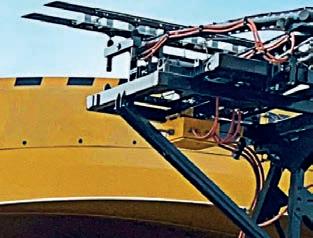

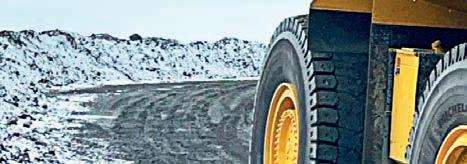



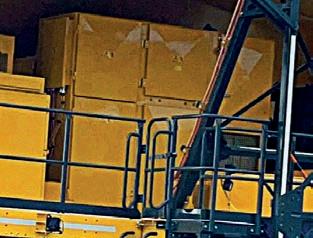





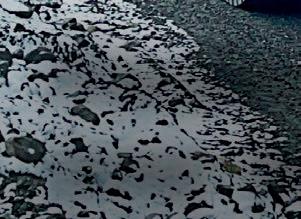


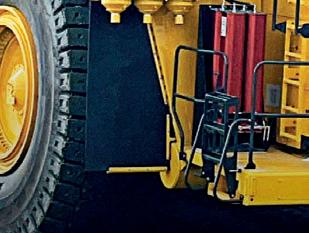




























Manufacturers
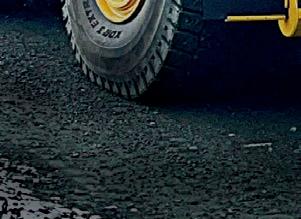


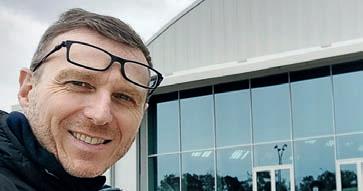






















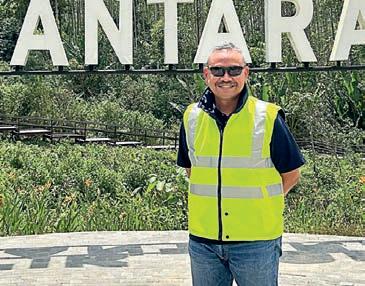
















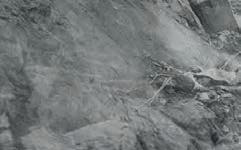










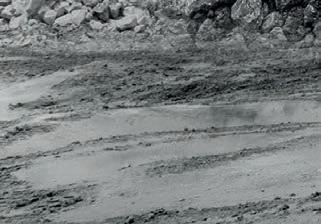



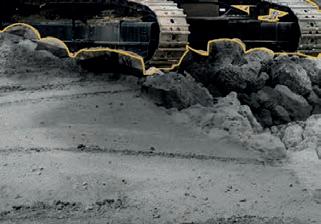






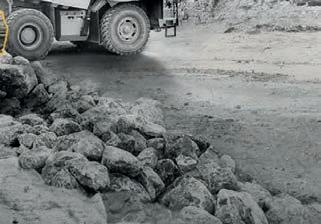



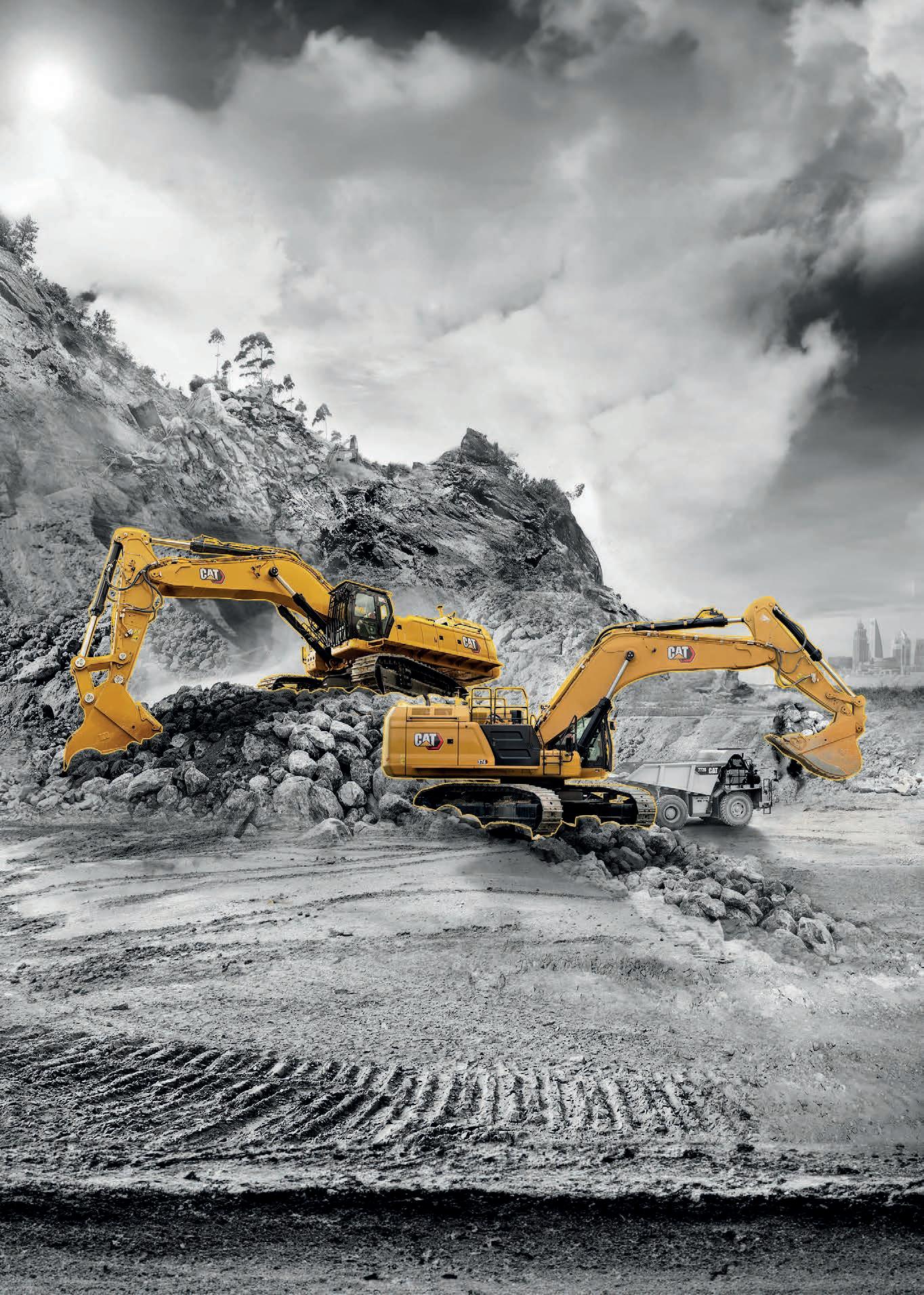







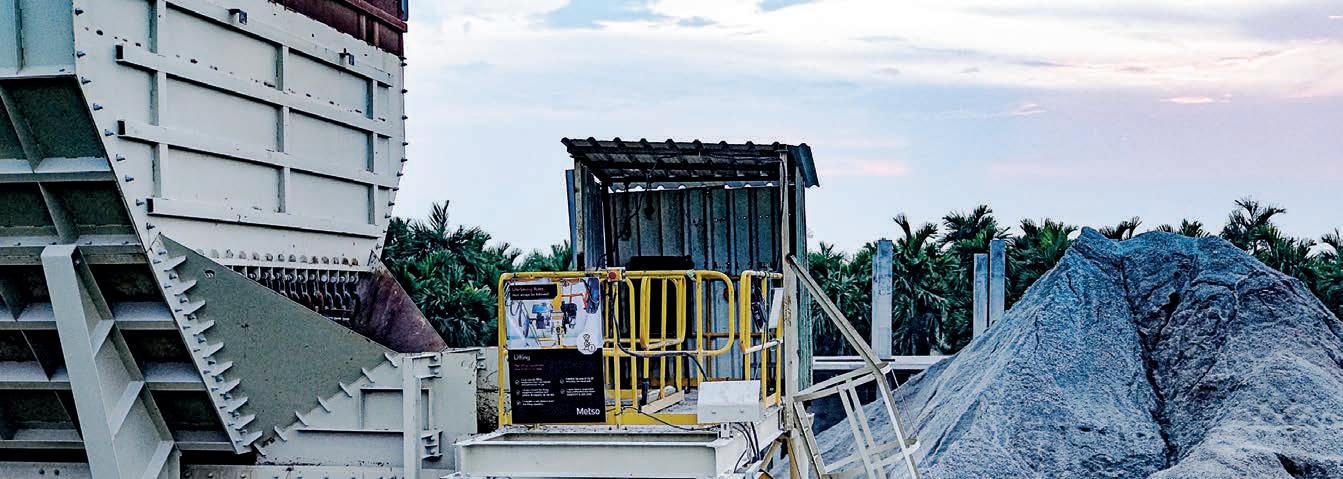



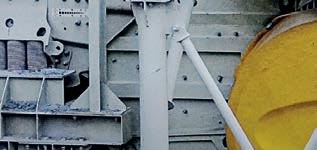
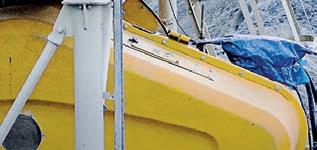
“We are able to produce approximately 10 end-products, such as granular sub base, 40mm, 20mm,
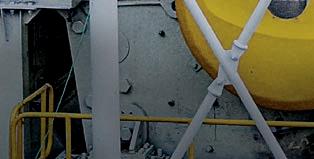

05 COMMENT
The aggregate numbers game.
06 INDUSTRY NEWS
The latest news and updates from around the global quarry and aggregates sector. 50 EVENTS
All the key events in the quarrying and aggregates world
08 MARKET REPORT
A look at the major players in Indonesian quarrying and aggregates.
12 QUARRY PROFILE
How Metso is supporting Indian quarry operators to find operational improvements.
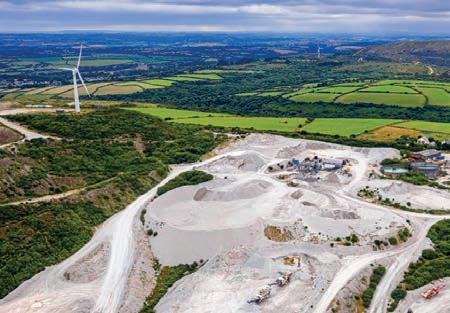


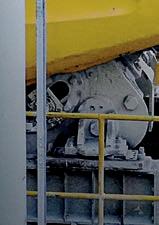
14 MARKET ANALYSIS
GAIN founder and president Jim O’Brien shares the latest insights from the organisation’s annual report into the aggregates sector.
18 PEOPLE ON THE MOVE
The latest appointments across the global industry.
20 INTERVIEW
Pablo Zambianchi discusses how Holcim Italy is embracing technology.
McLanahan and SunEnviro open the doors for a major industry open house event.
Through its latest case study, CDE showcases how it tailors solutions for the quarrying sector.
The latest updates and innovations from global loading equipment manufacturers.
From new haulers to successful case studies, hauling manufacturers take centre stage. 38 CRUSHING AND SCREENING
The latest equipment is unveiled in the crushing and screening market.





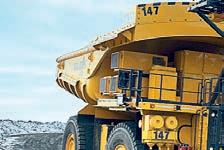
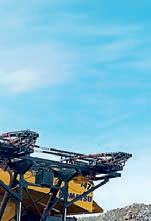


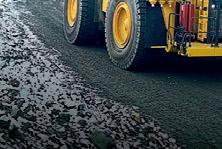

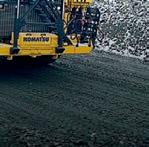














42 TYRES –2








40 DRILL RIGS, ROCKBREAKERS AND HAMMERS
Rockbreakers and drill rigs are becoming increasingly prominent –with impressive results.
The unsung heroes of the quarrying operation, the latest tyre developments are here.
44 DIGITAL SOLUTIONS
Volvo CE showcases its range of digital solutions for quarries.
46 FLEET MACHINERY
Develon’s machinery continues to impress.
48 CONEXPO-CON/AGG
The latest updates ahead of the North American trade show’s return in 2026.

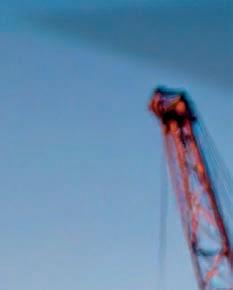
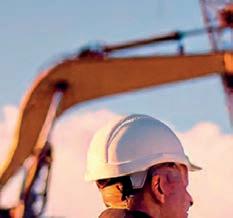











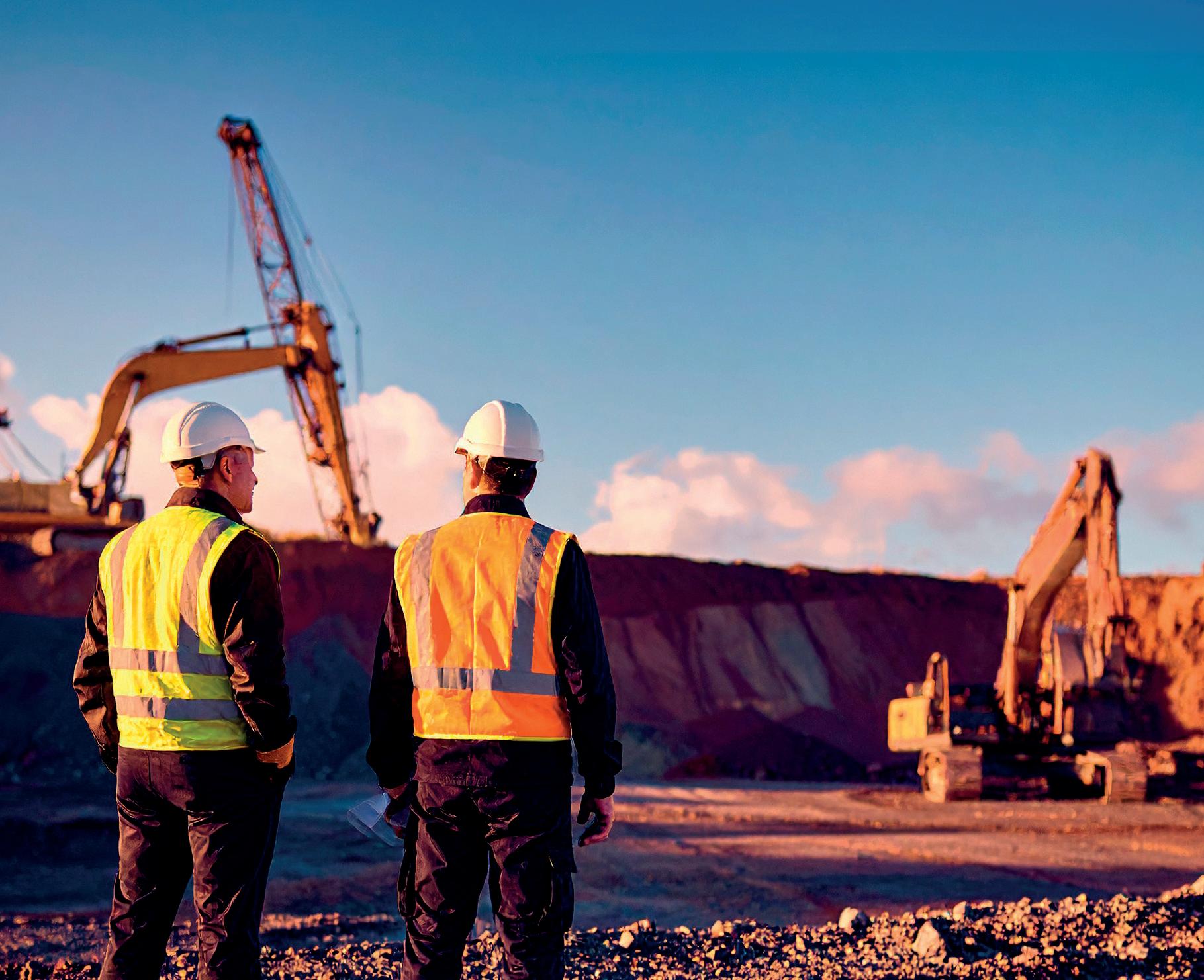













































































HEAD OFFICE
Prime Global Publishing Capitol Square 4–6 Church Street Epsom, KT 17 4NR
EDITOR
Guy Woodford +44 (0) 7879 408 069 guy.woodford@primeglobalpublishing.com
ASSISTANT EDITOR Adam Daunt adam.daunt@primeglobalpublishing.com
BUSINESS DEVELOPMENT MANAGER
Les Ilyefalvy +61 423 177 966 les.ilyefalvy@primeglobalpublishing.com
CHAIRMAN
John Murphy
CHIEF EXECUTIVE OFFICER
Christine Clancy GROUP MANAGING EDITOR
Paul Hayes
CLIENT SUCCESS MANAGER
Janine Clements +61 432 574 669 janine.clements@primeglobalpublishing.com
ART DIRECTOR
Michelle Weston COVER IMAGE CREDITS Komatsu Holcim Italy Volvo CE Metso
SUBSCRIPTIONS subscriptions@primeglobalpublishing.com
No part of this publication may be reproduced in any form whatsoever without the express written permission of the publisher. Contributors are encouraged to express their personal and professional opinions in this publication, and accordingly views expressed herein are not necessarily the views of Prime Global Publishing. From time to time statements and claims are made by the manufacturers and their representatives in respect of their products and services. Whilst reasonable steps are taken to check their accuracy at the time of going to press, the publisher cannot be held liable for their validity and accuracy.



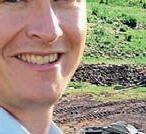





PUBLISHED BY Prime Global Publishing
AGGREGATES BUSINESS USPS: is published six times a year.
PRINT: ISSN 2051-5766
ONLINE: ISSN 2057-3405
PRINTED BY: Warners (Midlands) PLC




his issue of Aggregates Business International includes the latest analysis of key national and regional aggregates markets from the Global Aggregates Information Network (GAIN), a unique voluntary coalition of aggregates associations around the world with the express purpose of openly sharing best practices for the greater sustainability of the industry globally.
Founded in 2010 with only ve members, GAIN now has 20 members on all six continents, with its member countries representing 75 per cent of global aggregates production of 39 billion tonnes.
Given the above, I always look forward to poring over any new GAIN industry commentary.
GAIN member country data from 2019 to 2025 shows a decline in aggregate demand in China, while India is now growing very strongly, as are Brazil and Malaysia. The trends also show the negative effect the COVID pandemic had in developing regions in 2020.
Global aggregates production is still dominated by China at 37 per cent, with India coming second at 16 per cent, followed by Europe at seven per cent and the US at six per cent; these top four comprise two-thirds of global aggregates demand.
“At a global level, it would therefore appear that the slowing rate of declining demand in China can be counterbalanced by growth in India and many other regions,” GAIN founder and president Jim O’Brien wrote.
“Thus, it is likely that the decline in global demand for aggregates since 2019 has now levelled off in 2025, portending guarded optimism for an increasing global demand for aggregates out towards 2030. Given a positive global geopolitical outlook in the next 5 years, with resultant economic growth, it is likely that global demand can again reach 40 billion tonnes or even more by 2030.”
GAIN’s analysis noted that the aggregates sector remains a fragmented sector globally. The biggest players are CRH, Heidelberg Materials and Holcim, each with a global production of
over 250 million tonnes, followed by Cemex, Vulcan Materials, Martin Marietta, and the three Chinese players CNBM, CRCH and CONCH, now producing over 100 million tonnes each. The top 25 aggregates players make less than 10 per cent of global production, in contrast with the top 25 cement producers, which represent around 40 per cent of global cement production. GAIN’s analysis said that further consolidation is likely in the aggregates sector as cement players see the mutual bene ts of vertical integration.
I will be attending the eighth GAIN Meeting in Córdoba, southern Spain, in October 19–24, with a packed agenda sure to generate several insightful global aggregates industry features for future issues of Aggregates Business International Home to more than 280 million people, Indonesia is a Southeast Asian nation with a vibrant national aggregates industry, as highlighted in this edition’s market report. Situated between the Indian and Paci c oceans and a country made up of 17,000 islands, including Sumatra, Java, and Sulawesi, Indonesia is going at out to deliver President Subianto Djojohadikusumo’s target of 8 per cent economic growth each year for the next four years. President Djojohadikusumo believes this ambitious goal can be achieved through infrastructure development, requiring $625 billion to be spent on 55 major projects, including the new national capital Nusantara in East Kalimantan province, airports, railways, ports, roads and housing schemes.
Indonesia’s bold infrastructure plans will require huge volumes of aggregates, concrete, cement and asphalt, creating exciting commercial opportunities for quarry operators and national, regional, and global building materials suppliers. The need for premium off-highway machinery to work on so many infrastructure project sites and in linked quarries and cement concrete plants also creates great business opportunities for major manufacturers, such as Volvo Construction Equipment and Metso, which are both featured in our must-read feature. GW guy.woodford@primeglobalpublishing.com
SDLG (Shandong Lingong Construction Machinery) has opened its new East African regional hub at its LGQH subsidiary’s of ces in Dar es Salaam, Tanzania, and has shipped 300 units of its construction equipment to Africa under a new innovative Manufacturer-Partner Joint Go-Global (MPJGG) export model.
The Chinese off-highway machinery manufacturer has shipped its rst large batch of machines under the MPJGG to Tanzania, Kenya, Nigeria, Zimbabwe, and other African countries. The consignment includes excavators, wheeled loaders, road rollers, and motor graders products tailored to meet Africa’s diverse needs in cross-border highways, rail
networks, ports, and mining development.
The shipped machines are being deployed in key projects such as Kenya’s Africa Infrastructure Development Plan, injecting powerful ‘Made in China’ momentum into local construction.
According to SDLG of cials, the milestone not only highlights the company’s deepening footprint in Africa but also signals the scaled rollout of its innovative ‘ManufacturerPartner Joint Go-Global’ model, marking a signi cant step forward in SDLG’s global strategy.
“Africa is an essential and highly promising part of SDLG’s global strategic map. The successful shipment of
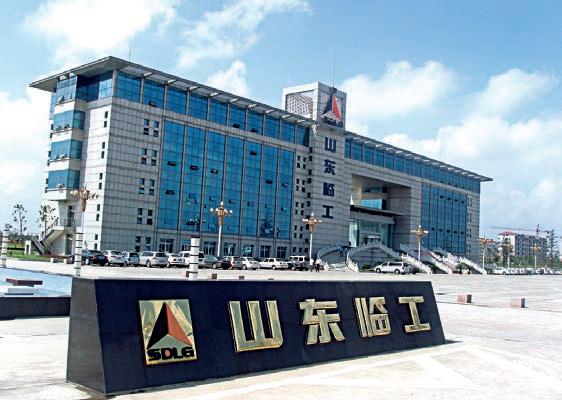
300 machines, especially under the innovative ‘ManufacturerPartner Joint Go-Global’ model powered by LGQH, marks
a critical step in deepening our African presence,” SLDG executive deputy general manager Song Xiaoying said.
and improved overall ef ciency for the customer.
“I would like to congratulate Voltas on their 25-year journey with Powerscreen and commend them for their vision and forwardthinking. Together, we have transformed the crushing and screening industry in India, and I look forward to our continued innovation and shared success.”
The consistent performance of Powerscreen equipment helped strengthen the Voltas footprint in India, especially in the large-scale road-building and civil works sector.

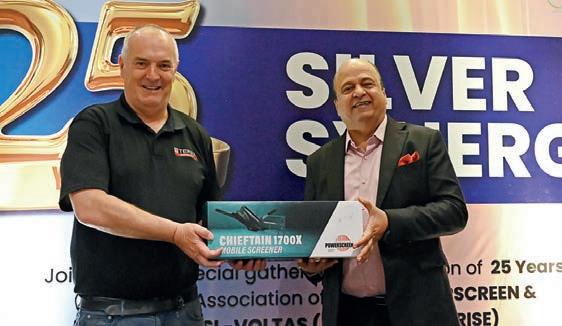


Powerscreen has recently celebrated the 25th anniversary of the appointment of UMPESL –Voltas (A Tata Enterprise) as its rst of cial distributor in India.
The appointment in 2000 came at a pivotal time for the Indian mining and construction industry, when the need for track mobile crushing and screening plants was becoming increasingly evident.
“Most clients relied on stationary set-ups, which required two to three months for erection and commissioning,”
Terex Materials Processing vice president and managing director Jaideep Shekhar said.
“The frequent shifting of these large, xed installations presented signi cant logistical and operational challenges, often delaying project timelines and escalating costs.
“Voltas recognised this need early on and introduced Powerscreen track mobile plants to India, a strategic move that transformed the way infrastructure and mining projects were executed throughout the country.
The quick deployment, ease of mobility, and minimal setup time of this equipment drastically reduced project execution timelines, leading to cost savings
Voltas successfully sold its rst track-mounted Powerscreen unit to a signi cant aggregates customer engaged in major national and state highway construction projects in and around Bangalore, India.
This marked the beginning of several milestone deployments across India, with successful installations at high-impact infrastructure sites.
“Powerscreen equipment is designed to handle a wide range of applications, from aggregates and iron ore to municipal solid waste and riverbed materials,” Terex India director for commercial aggregates Chandrasekhar Venkataraman said.
“This versatility is evident in the case of Voltas, which has used our equipment to serve diverse customer needs, expand into new sectors, and adapt as market demands evolve, supporting their long-term business growth.”




Construction materials are gaining increasing importance in the South African market, and AfriSam is poised to play a signi cant role within it.
AfriSam construction materials executive for sales and product technical Amit Dawneerangen said this demand meant established companies like AfriSam had an important role to play.
Dawneerangen said that megaprojects, such as roads, dams, and energy infrastructure, have the potential to accelerate economic development signi cantly. However, the extended downturn in the construction sector has raised


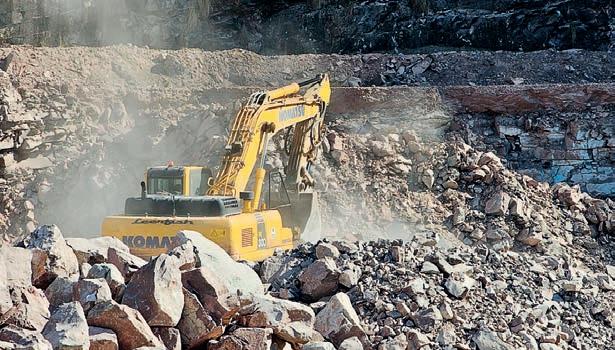
concerns about its readiness to meet the demands of these massive undertakings.
“This longevity is no accident; it is the result of a deliberate effort to retain capabilities and worldclass expertise throughout various economic cycles,” he said.
AfriSam is an experienced company in the South African market, able to draw on 90 years of experience to tackle any challenges that may arise within a major project. This includes changes in scope, procurement of materials, and quality control.
Dawneerangen said that the early-stage collaboration in mega-
projects was important, ideally at the bidding or even pre-bidding phase, to ensure that all players in the supply chain are aligned and prepared for the high production volumes and extended shifts such projects often demand.
AfriSam has invested heavily in its business to ensure it can manage the volume and quality demanded by major project works. AfriSam employs computerised batching systems in its ready-mix operations to ensure precise adherence to engineer-approved mix designs. Quality checks are implemented at every stage – from pre-dispatch testing of ready-mix concrete to on-site sampling – to provide the required strength and performance of the nal product. Batch printouts further guarantee that mixes consistently meet speci cations.
AfriSam relies on its extensive footprint of facilities and vehicle eets, all of which are managed through advanced, exible planning systems. This logistical strength enables the company to support demanding projects nationwide, including landmark developments such as the Leonardo in Sandton, the PwC headquarters in Midrand, and various major road upgrade initiatives.
Volvo CE’s launch of the New Generation A40 Articulated Hauler in Singapore is said to underscore the company’s commitment to addressing urban infrastructure challenges.
By combining smart technology with robust design, Volvo CE said the hauler delivers measurable gains in safety, e ciency, and job site productivity for local contractors, including Kok Kiat Machinery, which is using the A40 on the Tuas Terminal Phase 2 land reclamation project.
Following the successful launch in Asian markets earlier this year, Volvo CE has now brought its New Generation A40 Articulated Hauler to Singapore, rea rming its commitment to delivering rugged, intelligent machines designed for the country’s most demanding job sites.
Held at a dedicated customer event in July, the Singapore launch provided key players from the heavy infrastructure sector with an upclose look at the machine’s upgraded features, with particular focus on how the New Generation A40 is engineered to meet the challenges of Singapore’s dense urban infrastructure and tropical climate.
In Singapore, where construction projects often face challenges such as limited space, heavy tra c, and stringent safety and environmental regulations, the New Generation A40 is built to perform with precision and reliability. Its tight turning radius, intelligent traction systems, and superior visibility make it especially e ective for complex infrastructure and tunnelling applications frequently encountered across the city-state.
One of the first contractors to use the New Generation A40 is Kok Kiat Machinery, which has deployed the hauler on the Tuas Terminal Phase 2 land reclamation project in the southwestern region of Singapore.
Holcim has completed the $US1 billion sale of its Nigerian business, selling its entire 83.81 per cent shareholding in Lafarge Africa to Huaxin Cement. The deal aligns with Holcim’s strategy to streamline its portfolio and focus on high-growth regions, including the spin-o of its North American business, now trading as Amrize.
“We are pleased to have found in Huaxin Cement a trusted buyer that is committed to further developing the business in Nigeria. At the same time, the sale proceeds give Holcim additional capacity for our growthfocused capital allocation. We wish Lafarge Africa PLC and Huaxin Cement continued success,” Holcim regional head of Asia, Middle East and Africa Martin Kriegner said.
The machine is being used to transport sand and soil as part of the large-scale port infrastructure development.
Kok Kiat Machinery manager Ng Say Kok said the new Volvo machinery had impressed its operators.
“We chose the New Generation A40 for its fuel e ciency and reduced downtime compared to other machines in the market. It has proven easy for our operators to use, while also delivering improvements in uptime, traction, and control across challenging terrain,” Kok Kiat Machinery manager Ng Say Kok said.
Ng said that the investment supports Kok Kiat Machinery’s business goals by contributing to more sustainable operations through fuele cient performance and smart connectivity features such as Haul Assist and Connected Map.













PNG






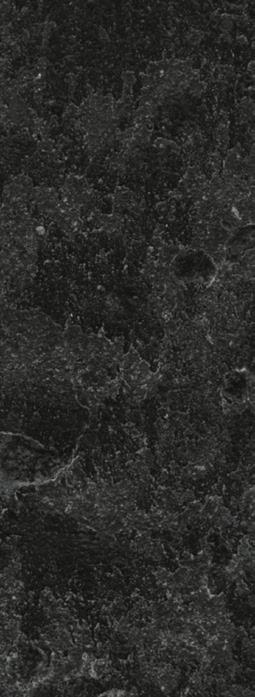






















































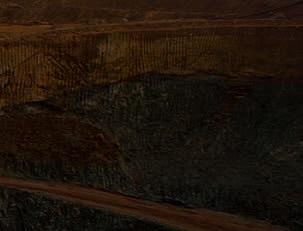








Nestled between the Indian and Pacific oceans, Indonesia comprises around 17,000 islands and is looking to develop the country by mopping up resources from all sides, including government, private sector, foreign direct investment, and contributions from the state-owned enterprises.
Indonesian president Prabowo Subianto Djojohadikusumo has set a target of eight per cent economic growth each year for the next four years, which he believes can be achieved by developing infrastructure. The ambitious plan requires an estimated $625 billion to be spent between 2025 and 2029.
The Indonesian Government is executing 55 major projects, including the new national capital Nusantara in East Kalimantan province, airports, ports, roads and housing schemes.
With the US and Indonesia reaching a ‘historical deal’ that will provide Americans with access to the Indonesian market recently, the Indonesian authorities have drawn up plans to attract $53 billion in private rail investments to expand their network from 6461 kilometres (km) to 10,524km by 2030, boosting passenger and freight capacity nationwide. Key railway projects include 1200km of new track in Kalimantan and 100km in Papua. The rail lines in Sulawesi will be expanded from 71km in 2025 to 734km by the end of the decade. In Sumatra, the network will increase from 1854km to 2900km.
Infrastructure funding
In her presentation at the 2025 International Conference on Infrastructure (ICI) in Jakarta on June 12, Indonesia’s minister of nance Sri Mulyani Indrawati said that the Government needs $625.37 billion to fund infrastructure projects between 2025 and 2029.
“Of this, the Government can meet $143.84 billion [23 per cent] of total infrastructure investment needs by 2029, while regional budgets can provide $106.31 billion [17 per cent]. The Government expects the remainder to come from private sector participation - both domestic and foreign – and the creation of innovative nancing mechanisms,” she said.

Notable Indonesian projects include the continued development of the Nusantara Capital City, the 21.6km Jakarta Elevated Toll Road project costing $1.43 billion, which will run between Jatiasih in East Jakarta and Ulujami in South Jakarta, the Indonesian state-owned electricity company, PT PLN‘s program outlined in its 2025–34 Electricity Supply Plan (RUPTL), which is set to increase power capacity by 71 gigawatts (GW) by 2034.
A large portion of the 2828km TransSumatra Toll Road is already operational and is scheduled for completion in 2029.
Several housing projects, including president Prabowo Subianto’s ambitious three-million-homes-per-year programme, are being taken up to help Indonesia achieve its objective of eight per cent economic growth in 2029. For this programme, the Indonesian Government has set aside $1.72 billion for the Public Housing Loan Program (FLPP), intending to provide a cheap nancing scheme for over 220,000 housing units.




Ministry for Public Housing and Settlements director general for urban housing Sri Haryati said the Government had so far delivered 104,000 affordable houses under this housing programme with more housing projects in the works.
“The Government is currently deliberating Public Private Partnership [PPP] in which affordable houses are built over government-owned land through investment from the private sector,” Haryati said at the Indonesian Economic Summit 2025 in February.









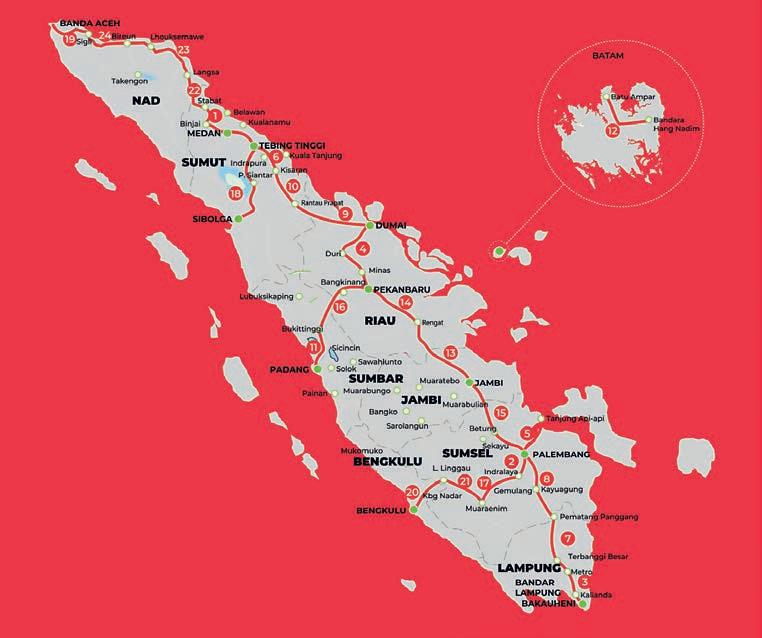
According to data from the Indonesian Cement Association (ASI), the demand for cement declined and production fell by 7.4 per cent in Indonesia during the rst quarter of 2025, falling from 14.5 million tonnes (Mt) in 2024 to 13.4Mt in 2025.
Indonesian cement production in March 2025 was low compared to the year prior, with sales for the month falling to 3.8Mt. The nation’s capacity utilisation rate was estimated at just 57 per cent, according to the ASI. In its latest budget, the Government has also reduced funding to the Nusantara Capital City, from $4.63 billion spent in the last two years to $2.99 billion this year.
Volvo CE head of market Indonesia and Timor-Leste (East Timor) Erwin Listya Budi said Indonesia’s construction equipment (CE) market has experienced remarkable growth, increasing by 145 per cent compared to the same period in 2024.
He said the most signi cant surge was seen in general-purpose (GPE) crawler excavators in the 20-tonne class, which rose by 182 per cent.
“This strong demand is largely driven by the Indonesian Government's strategic food estate programs in Kalimantan and Papua. Thousands of 20-tonne excavators have already been deployed to support large-scale land development for new rice elds in these regions,” he said.
According to Budi, one of the major challenges faced by CE companies in Indonesia is the uctuation of exchange rates, particularly after the strengthening of the US
dollar against the Indonesian Rupiah. Since most construction machines are imported, a stronger US dollar puts pressure on pricing and can squeeze margins if price adjustments are not feasible.
To mitigate these risks, he said the CE companies must implement strategic measures such as nancial hedging or offering added value to justify pricing.
“We have recently launched the New Generation EC210 excavator equipped with advanced technologies aimed at improving productivity and fuel ef ciency. To support customers further, we also offer attractive nancing packages through our leasing partners, helping businesses invest in equipment more affordably,” Budi said.
Budi said that Indonesia has long been one of the most strategic markets for the CE industry in Asia, driven by diverse sectors such as construction, mining, agriculture, and forestry.
The country continues to grow rapidly, with substantial investments in infrastructure by both the Government and private sectors, and abundant natural resources. While the market can be cyclical due to uctuations in commodity prices and global geopolitics, the long-term outlook remains positive.
“Over the past ve years, Chinese OEMs have aggressively expanded in Indonesia by importing large volumes of equipment and establishing local networks. At the same time, leading brands such as Volvo CE continue to strengthen their capabilities to stay competitive and deliver more value to customers,” he said.
To maximise project ef ciency, CE companies are introducing advanced technologies in their latest machine generations. The New Generation Excavators of Volvo CE feature an electro-hydraulic system that can improve fuel ef ciency by up to 15 per cent.
He said other innovations, such as smart cooling systems and engine speed regulation, also contribute to signi cant fuel savings and environmental bene ts.
“In our new generation articulated haulers, we have integrated enhanced drivetrains, operator-centric design, and intelligent features. These include an advanced electronic system, Volvo-designed transmission for optimised fuel use, and innovations like Terrain Memory and Volvo Dynamic Drive, all of which deliver improved traction, stability, and overall cost-ef ciency for customers,” Budi said.
Adopting innovative technologies
Metso distribution business manager in Indonesia Unggul Aribowo said that the country's CE sector was experiencing signi cant growth, driven by infrastructure projects such as toll road construction and public infrastructure development, urbanisation, and technological advancements.
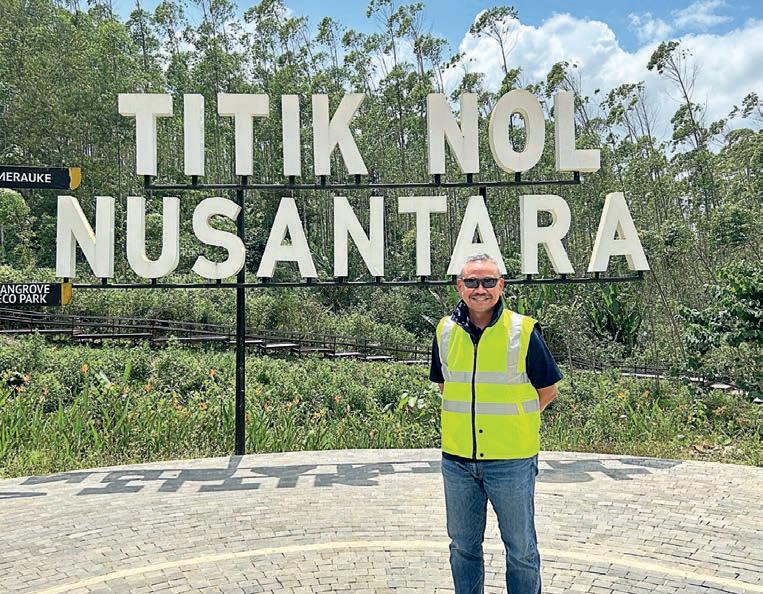
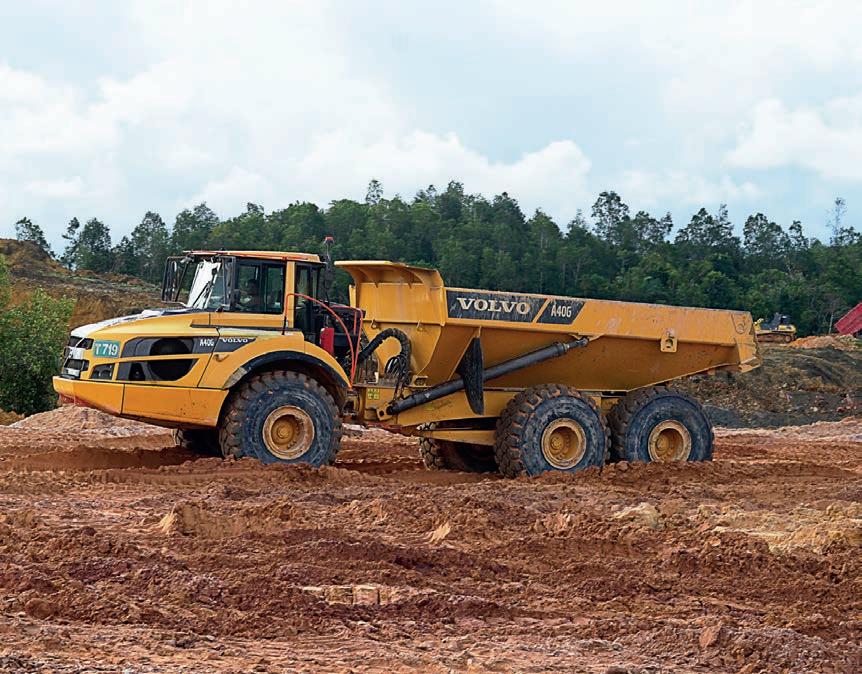
The CE market has also witnessed growth in the adoption of innovative technologies like the Internet of Things (IoT), arti cial intelligence (AI), and automation. This enables real-time monitoring, predictive maintenance, and improved ef ciency.
“The Government has enacted regulations to ease import restrictions on essential capital goods, including construction machinery, supporting the industry's growth,” he said.
According to Aribowo, the CE companies and suppliers in the country were facing several challenges, such as increasing costs in acquiring the latest machines due to high import tariffs and taxes, making it dif cult for construction companies to afford new equipment, coupled with a shortage of skilled labour to operate and maintain sophisticated equipment, leading to inef ciencies and safety concerns.
The CE companies are required to adopt eco-friendly practices due to stricter environmental regulations. However, many have been unable to transition to low-emission technology due to nancial and technological constraints. Aribowo said that volatility in raw material prices can restrict their market expansion.
Despite these challenges, companies were leveraging opportunities in the market by providing eco-friendly heavy equipment for various projects, supported by advanced technology, developing green building capabilities, investing in digital technologies, and building strong local supply chain networks to maintain their market position.
Aribowo said for smaller companies that cannot afford new CE machinery, suppliers are providing more affordable second-hand equipment options,.
Aribowo said the Indonesian market is well-positioned to supply construction equipment to meet growing demand from mega projects.
There has been a growing demand for electric and hybrid machines, driven by carbon-credit incentives and lower operating costs. Regions like Kalimantan and Java are emerging as high-growth areas, fuelled by infrastructure development and industrial projects.
Aribowo said companies are also developing electric and hybrid machines that produce zero emissions on-site, reduce noise pollution, and lower operating costs over time. Smart energy management systems are optimising energy use on-site by integrating renewable energy sources, monitoring fuel consumption, and automatically adjusting power to equipment based on real-time needs to ensure a reduction in waste and save energy.
Aribowo said that some companies are offering heavy equipment rental services, providing reliable and high-quality machinery for construction, mining, and infrastructure development projects. He said this has been helping the infrastructure project developers to achieve project goals on time and within budget.
US tariffs and the construction equipment market
While countries across the world are grappling with the US tariff policies, the Indonesian CE market, which is expected to grow at a compound annual growth rate (CAGR) of 4.12 per cent from 2024 to 2030, is moderately affected by them, the market research rm ResearchAndMarkets.com said.

The report said that several construction equipment brands, have local manufacturing facilities in Indonesia, partly due to its low dependence on imported raw materials like steel, aluminium, and rubber from the US market. However, for some US-based brands, which hold a strong market presence in Indonesia, the prices of imports for these brands have increased due to the impact of tariffs.
Earthmoving equipment accounted for the largest market share in the Indonesian construction equipment market in 2024, ResearchAndMarkets.com said.
Excavators in the earthmoving segment accounted for the largest share, as the demand for 4.5-tonne excavators was the second largest after 20-tonne excavators in Indonesia in 2024.
ResearchAndMarkets.com said it expects the construction industry in Indonesia to expand by 4.1 per cent in real terms in 2025.
The market research store said this would be supported by investments in transportation infrastructure projects, particularly rail and road infrastructure projects, coupled with rising public and private sector investments in housing and power construction projects. AB
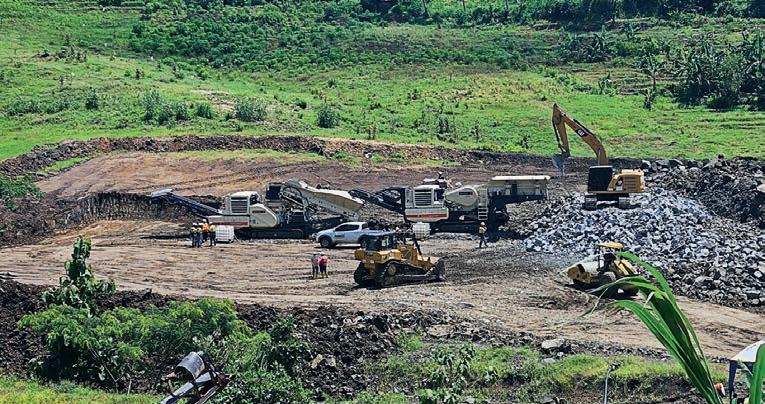
A premium Metso production set-up is enabling an Indian company to achieve its ambitious sand production targets.
In the heart of India’s infrastructure boom, Harenahalli Stone Crushers has emerged as a prime example of innovation meeting demand. With a clear vision to support the nation’s transition to sustainable construction materials and in response to the increasing restrictions on river sand mining, the company embraced manufactured sand as the future of aggregates.
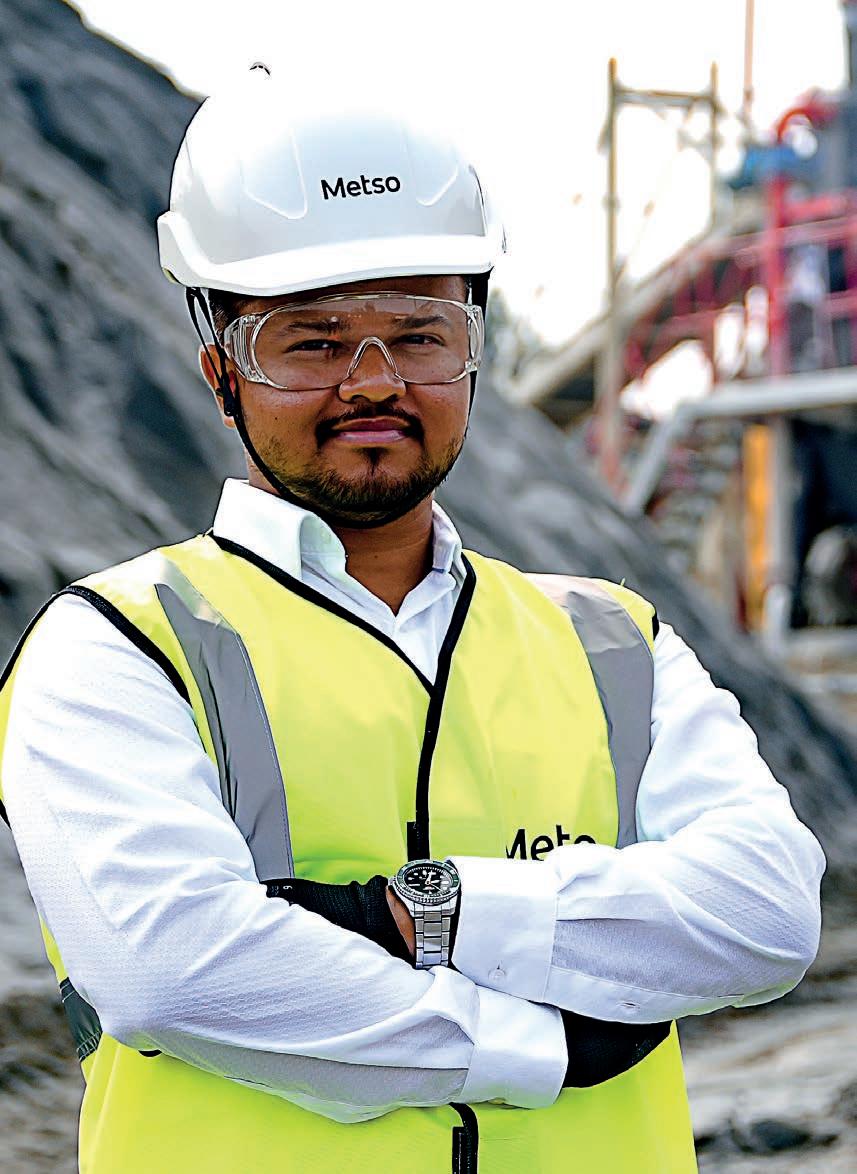
Established in 2023, but backed by over two decades of experience, Harenahalli Stone Crushers partnered with Metso to install a highperformance, fully integrated crushing and sand production setup. This collaboration resulted in a state-of-the-art plant capable of producing 100,000 tonnes of material, with 40 to 45 per cent high-quality manufactured sand. The plant con guration includes advanced equipment like the Nordberg C117 jaw crusher, HP300 cone crusher, and the Barmac B7150SE Barmac B7150SE impact crusher with dual drive, all supported by a MWS Compact Sand Plant CSP10 and Metso’s life cycle services (LCS).
“We are able to produce approximately 10 end-products, such as granular sub base, 40mm, 20mm, 12mm, 6mm, manufactured sand [M-sand] and plaster sand [P-sand]. The rest is produced into 40 aggregate products. We are producing around 40 to 45 per cent sand of the total output,” Harenahalli Stone Crushers partner Ashik Shiva said.
“We chose the Nordberg C117 jaw crusher to ensure very good production and get a bigger feed size through the plant. We chose the HP300 [cone crusher] for its automation, safety sensors, and the wide variety of features that it offers.”
Today, Harenahalli Stone Crushers delivers up to ten different end products ef ciently, meeting the growing demand for manufactured sand in road and irrigation projects. Using Metso’s equipment and LCS support, the plant operates at over 90 per cent uptime, offering reliability, scalability, and peace of mind. Its success has already paved the way for future expansions, with new Metso plants planned to support upcoming projects.
“The plant is still running like new, and I’m con dent that with LCS, we can run it like we are for the next 20 years,” Shiva said.
“We are very happy to have purchased this plant, which is why we are planning to purchase another Metso plant for our newer projects.”
A Metso customer since 2017, Harenahalli Stone Crushers began discussions with the quarrying plant solutions giant in 2020 regarding a new state-of-the-art production setup.
“As we know, India is moving towards a ve-trillion-dollar economy. There is a ban on using natural sand [for building works], which is creating higher demand for P-sand and M-sand. As infrastructure development increases, demand for M-sand will rise further,” Metso India vice president for aggregates sales Harpreet Singh said.
What is LCS for aggregates?
LCS takes Metso’s entire aftermarket portfolio and conveniently bundles it into customisable, easily manageable packages. Depending on the scale of customer needs, the packages are exible and equipped to cover a single event or to span multiple years, measured against strict key performance indicators.
Whether acting as a supplement to a customer team or managing all aspects of the customer’s maintenance and operations, LCS packages are designed to help customers meet their performance and sustainability goals.
Metso has been offering innovative LCS solutions for over 15 years, and no one solution has looked the same.
The company collaborates closely and designs a programme that works for each customer. Each programme can focus on a speci c goal or develop a partnership based on continuous improvement and optimisation.
For added simplicity, Metso has categorised LCS into progressive packages, each building on one another, yet still personalised to what the customer needs.
Additionally, each package is backed by exible commercial models including leasing and rental options, monthly payments, costper-tonne, or payment deferrals. AB
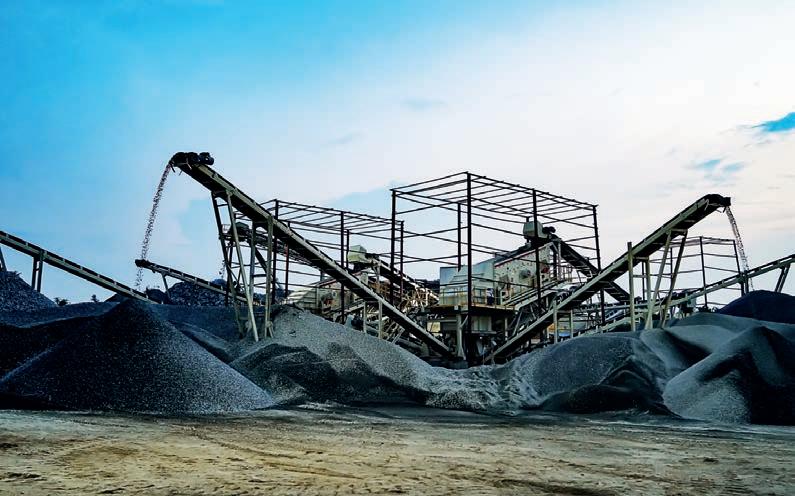






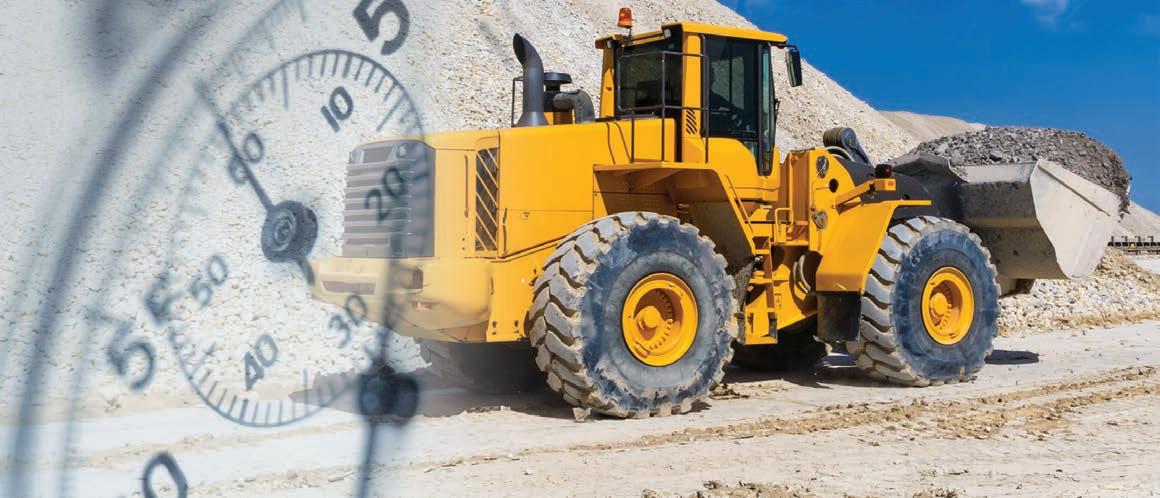


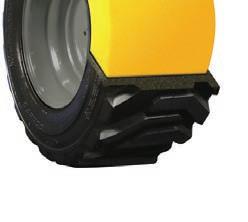
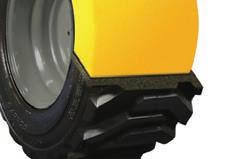







Aggregates are the most-used bulk material on the planet; however, the true scale and dynamics of the sector are not always appreciated. Global Aggregates Information Network now o ers improved industry production data, and founder and president Jim O’Brien writes about the latest insights into global aggregates production trends.
The Global Aggregates Information Network (GAIN) is a voluntary coalition of aggregates associations around the world with the purpose of sharing best practices for the greater sustainability of the industry. Founded in 2010 with only ve members, GAIN now has 20 members on all six continents, with its member countries representing 75 per cent of the global aggregates production of 39 billion tonnes (Bt).
The 7th GAIN Meeting took place in Córdoba, Argentina, in October 2024.
GAIN is non-commercial and operates on a strict antitrust basis.
GAIN is uniquely successful in its highly interactive global membership, thanks to the very positive cooperation between its members.
GAIN members hold bi-monthly virtual meetings, each focused on a speci c topic, complemented by an annual physical meeting, the most recent being held in Córdoba, Argentina.
The wide-ranging agenda focused on sharing best practices on key industry challenges. Annual GAIN meeting attendees found the industry to be in resilient recovery post-pandemic and poised to address and bene t from future sustainability challenges and opportunities. The most recent physical GAIN meeting was held in Córdoba, Spain, in October 2025, at which all existing and new GAIN members will be welcomed. The 2026 meeting will be held in Shanghai, China.
One function of GAIN is to compile the best available estimates of aggregate production from data provided by its members, the most recent of which is from mid-2025.
The GAIN total of 34.1Bt in 2019 has declined to an estimated 29.3Bt in 2025, the decline of 4.8Bt or 14.1 per cent, mainly due to economic slowing in China.


ABOVE: Estimated 2019-2025 Regional and Global Aggregates Production Tonnages.
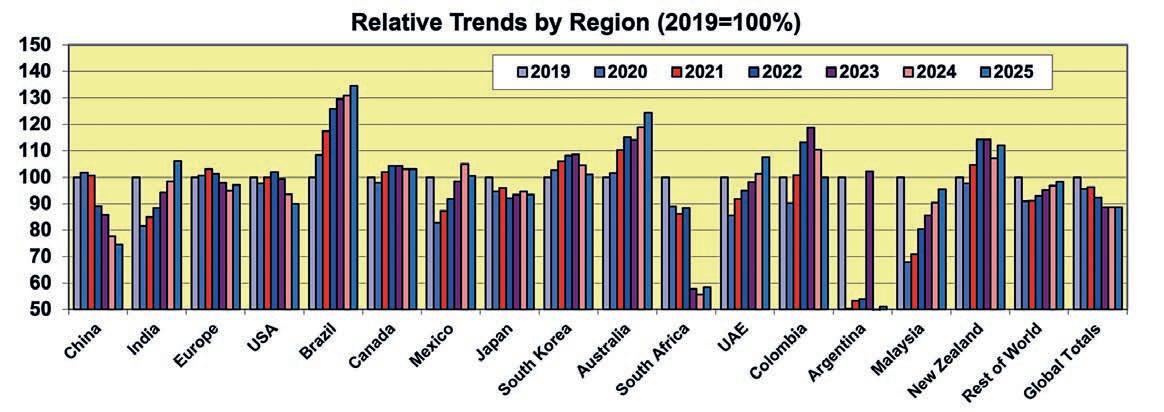
ABOVE: Production trends 2019-2025 by GAIN member country (taking 2019 as 100 per cent).
When estimates for non-GAIN countries are added (these based on national populations x their estimated tonne per capita), the global totals of 44Bt in 2019 have actually declined by 11.4 per cent to an estimated 39Bt in 2025.
The 2019-2025 trends by GAIN-member countries demonstrate the decline in demand in China, while India is now growing very strongly, as are Brazil and Malaysia.
The trends also show the negative effect of the pandemic in 2020 in developing regions, while developed regions fared better.
The global breakdown by region is still dominated by China at 37 per cent, with India coming second at 16 per cent, followed by Europe at seven per cent and the US at six per cent; these top four comprise 66 per cent of the global demand. The total for all GAIN members comes to 75 per cent of the 2025 global total of 39Bt.
Of signi cance is how the production in tonnes per capita (t/c) varies by region. Amongst GAIN members, these range from just over 10t/c in Canada and China to less than 2t/c in Argentina and South Africa.
The global average is 4.7t/c; for GAIN members, the average is 6.4t/c, and the non-GAIN average is 2.7t/c (many of these being undeveloped countries).

Industry experience shows that the national aggregates demand in tonnes per capita can be empirically related to a country's gross domestic product (GDP) per capita, or more precisely, the rate of change in GDP per capita, plus upward adjustments can be made for other prevalent factors including national terrain ruggedness and winter climate severity.
Global outlook to 2030
The gradual decline in demand over the last ve years in China is now being counterbalanced by strong growth in India, the second largest aggregates market globally, as well as nascent growth in the Southeast Asian economies such as Malaysia and Vietnam. Although Europe saw declines in 2023 and 2024, the outlook for 2025 is

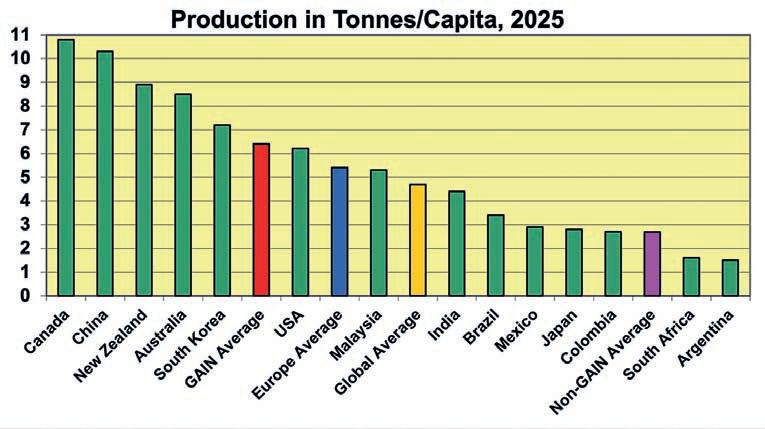
positive, driven primarily by defence and infrastructure spending.
The US experienced a decrease in 2024, which continued into 2025. However, this trend may be offset by the mandated national major transportation upgrades. Trends in Canada and Mexico will depend on the outcome of tariff negotiations.
Fortunes vary by country in Central and South America, with Brazil, the region’s largest economy, being the shining star. Little information on aggregates is available for Africa, however, the continent has immense growth potential. In Oceania, both New Zealand and Australia are in a stable growth mode. At a global level, the slowing rate of declining demand in China can be counterbalanced by growth in India and many other regions. Thus, it is likely that the decline in global demand for aggregates since 2019 has now levelled off in 2025, portending guarded optimism for an increasing global demand for aggregates out towards 2030.
Given a positive global geopolitical outlook in the next ve years, with resultant economic growth, global demand can again reach 40Bt or even more by 2030.
Aggregates remain a fragmented sector globally. The biggest players are CRH, Heidelberg Materials and Holcim, each with a global production of over 250 million tonnes (Mt), followed by CEMEX, Vulcan, Martin Marietta, and the three Chinese players CNBM, CRCH and CONCH, now producing over 100Mt each. The top 25 aggregates players make less than 10 per cent of global production, in contrast with the top 25 cement producers, which represent around 40 per cent of global cement production. Further consolidation is likely in the aggregates sector as cement players see the mutual bene ts of vertical integration.
Achieving access to resources, particularly near major urban markets, for the coming decades is a universal challenge for GAIN members. Some countries are suffering acute shortages of aggregate supply due to planning and permitting constraints; of note in that context is that New Zealand recently placed aggregates and sand on its critical minerals list.
The common drivers of aggregate demand are inward migration, population growth, urbanisation, the need to upgrade ageing infrastructure, and providing resilience in climate adaptation.
Like the cement sector, the aggregates sector has an increasing focus on sustainability. Aggregates have a minuscule carbon footprint at about 5kg of CO2 per tonne (Scope 1 and Scope 2), meaning that the aggregates sector has a total global footprint of only about 200Mt CO2, approximately eight per cent of that of the cement sector. For aggregates, Scope 3 emissions depend on the distance and mode of transport to market.
Despite the low footprint on the aggregates sector, there is an enduring focus on greater ef ciency on all activities from extraction to crushing, screening and transport, for strong commercial as well as environmental reasons. Every cent per tonne saved translates into millions in the aggregates sector.
The aggregates sector is focused on its water usage. FFEven with extensive water recycling, the sector average consumption is some 133L per tonne of aggregates, less than half the equivalent cement industry average gure. However, since the global aggregates production is 10 times that of cement, the aggregates sector consumes about ve times as much water in comparison, so in the aggregates sector, water reduction is increasingly a priority.
On the positive side, the aggregates sector is dedicated to restoration (often based on water features) and the associated fostering of biodiversity, and there are many case studies of which the industry is justi ably proud.
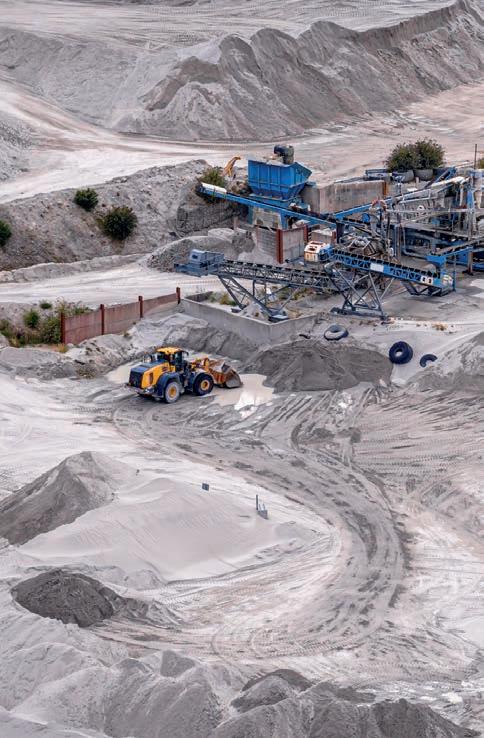
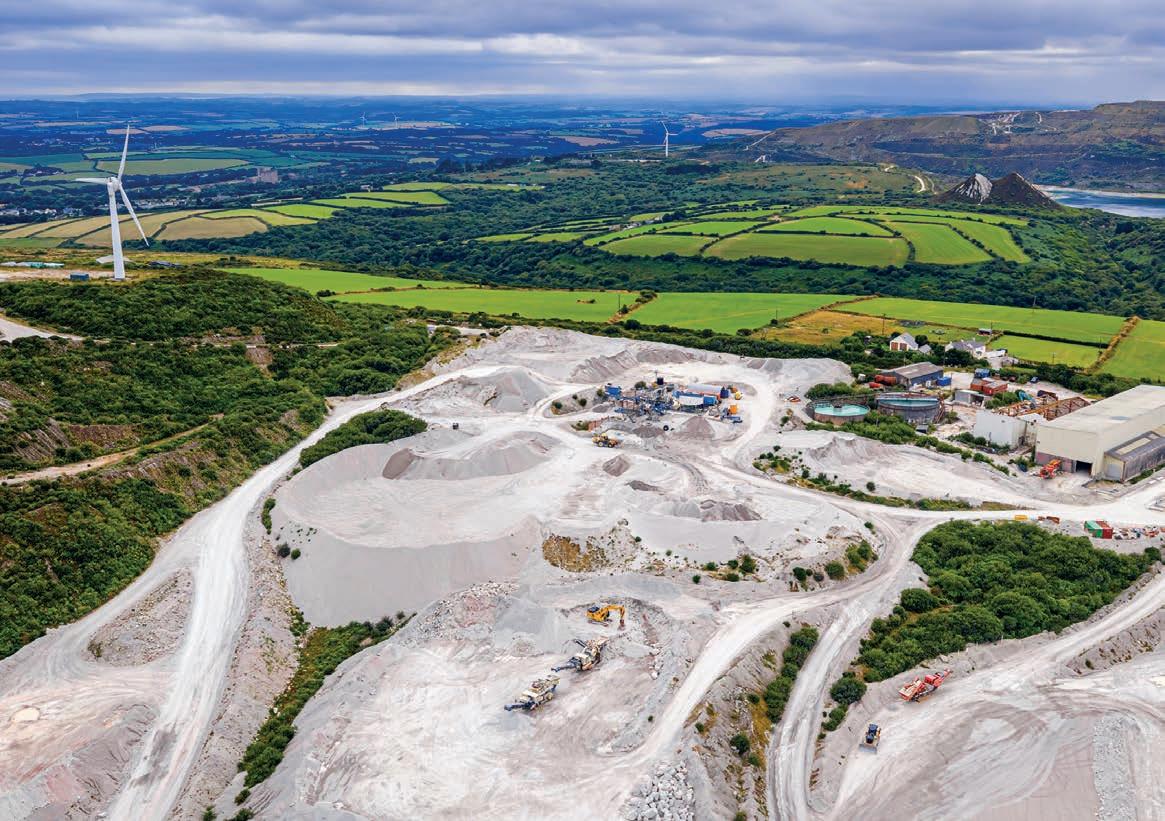

As might be expected, there is continual innovation towards optimising extraction, crushing and screening performance, with better control of product gradations and increased power ef ciency.
Plant design is more modular, more compact in space, enclosed as far as possible, with extensive controls on both dry and wet emissions, often using long conveyor belts instead of truck haulage.
Digitisation, coupled with increasing use of arti cial intelligence (AI), continues to improve operations at all stages of the process, including transport to market; there are case studies in China of completely autonomous quarries, which, in their case, can now have up to 50Mt per year production capacities.
Like the cement sector, the aggregates sector is also strongly focused on circularity. Europe leads with an average of 12 per cent of production supplied by recycled and secondary materials; this gure is up to 25–30 per cent in the UK, Belgium, the Netherlands,and Germany.
Recycling is now assuming greater importance in its exciting potential for re-absorbing carbon and returning liquid materials into the cement process.
Another signi cant innovation is in the production of high-quality manufactured sands (M-Sand) from crushed rock nes,
which can not only replace natural sand but also lead to improved concrete mix design, potentially reducing binder content.
Many GAIN members are seeking to ameliorate post-pandemic labour shortages by making the industry more attractive to young people and improving its work-life balance.
The global aggregates industry is estimated to employ 3.5 million people worldwide, offering often-overlooked career opportunities.
In parallel, GAIN members are enhancing communications to stakeholders, explaining the vital role the industry plays in supplying a product essential to societal wellbeing, while providing secure local employment, promoting circularity, caring for the environment and fostering biodiversity.
GAIN is encouraged by steadily increasing membership across all six continents and growing success over the 15 years since its founding in 2010.
GAIN sees particular opportunities in attracting new members in key quarrying and aggregates markets including SouthEast Asia, in Latin America, in the Middle East, in the Central Asian republics and particularly in Africa.
Overall, the organisation continues to support its members as they drive the sustainability ambition for the global aggregates sector in the coming years. AB
The international quarrying and aggregates sector continues to attract world-class talent to its ranks with new appointments.
Construction material producers, industry associations and original equipment manufacturers have been busy con rming a series of key appointments in recent months.
Mariusz Mlodawski has of cially started his new role as the Cemex country director for the United Arab Emirates (UAE).
Mlodawski brings nearly two decades of experience, including, according to Cemex, major UAE projects like One Za’abeel in Dubai.
Mlodawski will support the introduction of Cemex Vertua as well as its other low-carbon range in the UAE market.
“At Cemex, safety is paramount. Pursuing operational excellence, fostering innovation, and encouraging collaboration are critical pillars of our success,” Mlodawski said.
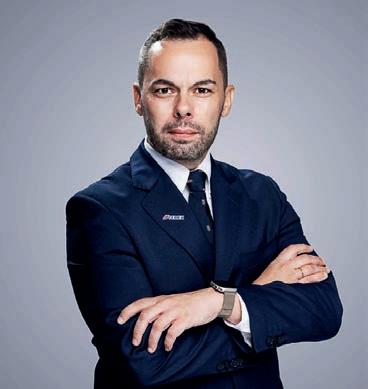
“By reinforcing these values, we aim to strengthen partnerships, empower our people, and deliver longterm value for employees, customers, stakeholders and industry.”
Elsewhere, global construction materials producer CRH has welcomed Patrick Decker to its board of directors.
The appointment became effective on October 1. Decker was the president and chief executive of cer of Xylem from March 2014 to December 2023.
“We are delighted to welcome Patrick to our board of directors,” CRH chairman Richie Boucher said.
“With his extensive experience in leading global organisations and his deep understanding of the industrial and water technology sectors, Patrick brings invaluable insights and expertise to our team.
“His proven track record of driving innovation and achieving strategic goals will be instrumental as we continue to execute our vision and deliver value to our shareholders.”
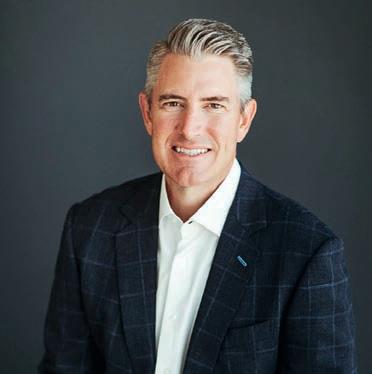
Over in the US, the Texas Aggregates & Concrete Association (TACA) revealed Andrew S. Pinkerton is the organisation’s new president and chief executive.
Pinkerton joins the TACA after an extensive career in the construction materials industry, including a stint at the Cement Council of Texas as an executive director.
“Andrew’s extensive background in the construction materials industry, combined with his proven association leadership, makes him the ideal person to guide TACA into the future,” TACA board of directors chair Rich S. Szecsy said.
“His passion for delivering value to member companies – along with his commitment and advocacy for safety, sustainability and the communities where we operate and ultimately build – will strengthen our industry and bene t the great state of Texas.”
Pinkerton has experience from roles at US Concrete Inc. and Texas Industries Inc., as well as bachelor’s degrees in marketing and management from the University of Oklahoma.
“I have always believed that strong associations are the cornerstone of a strong industry,” he said.
“As Texas continues to grow each day, our industry plays a critical role in aligning population growth with a sustainably built environment, the conservation of natural resources and continuing to deliver the materials that satisfy the state’s unprecedented demand for aggregates and concrete.
“I am honoured to advocate for the safe, resilient infrastructure and advanced mobility solutions our members provide today – and for generations of Texans to come.”
It is not only associations and construction materials producers that have been adding to its ranks. Original equipment manufacturers have also been busy bolstering their employee ranks.
Rokbak has added Graeme Blake to its newest product development team, where he will play a role in shaping the future of Rokbak’s trucks and haulers. Blake joined the Volvo Group in 2014, where he started as a CNC (computer numerical control) machinist and was nominated for apprentice of the year. In recent times, he has held roles in fabrication and testing before joining the product management team at Rokbak.
Blake said his hands-on experience would hold him in good stead in his new role.
“I’ve gone from building the basics of a truck to testing it in extreme conditions. Now, I’m excited to help shape the product itself,” he said.
“I learnt a lot in my previous job as a test technician and I’m looking forward to utilising that insight in my new role, where I’ll be focusing on product updates and developments.
“I want people, engineers, operators, whoever, to say, ‘He’s knowledgeable. I can go to him and he will help me with this’.
“It’s about trust. If a customer comes to us with a problem, they should feel con dent leaving it in our hands knowing it’ll be sorted.”
Blake, who lives locally to Rokbak’s Motherwell production facility, was excited to spend more time being hands-on with the manufacturer’s quality products, including the RA30 and RA40. Rokbak carries out the engineering, manufacturing, testing and feedback of its articulated dump trucks (ADT) at its Motherwell factory.
Blake said the factory will continue to be integral to the company’s quality products.
“Customer input is essential to us at Rokbak. Whether it’s ergonomic feedback from operators or lessons learned from eld experience, it’s all valuable information,” he said.
“Operators spend a lot of time in their trucks, so they need to be comfortable. If something can be improved – whether it’s greater visibility, the ergonomics of the controls, better HVAC or more seat comfort – we listen.
“We’ve got everything we need here to design and build robust and reliable haulers – the people, the knowledge, the skills and the infrastructure.” AB
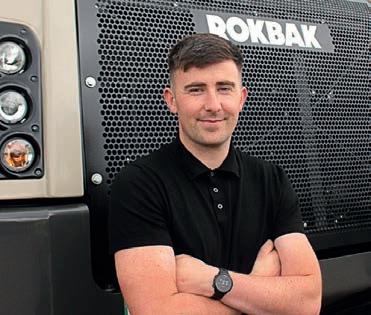
























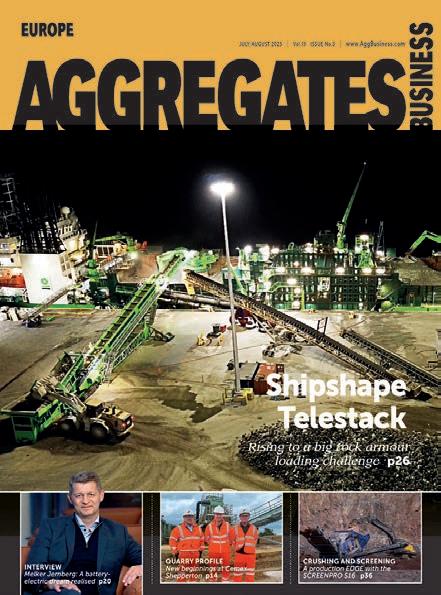


Aggregates Business is a go-to source for up-to-date news and views on the European, Asian, African, Middle Eastern and American aggregates and building materials sectors. Our wide-ranging features line-up includes in-depth articles on the latest crushing and screening, loading and hauling machines. Subscribe today:
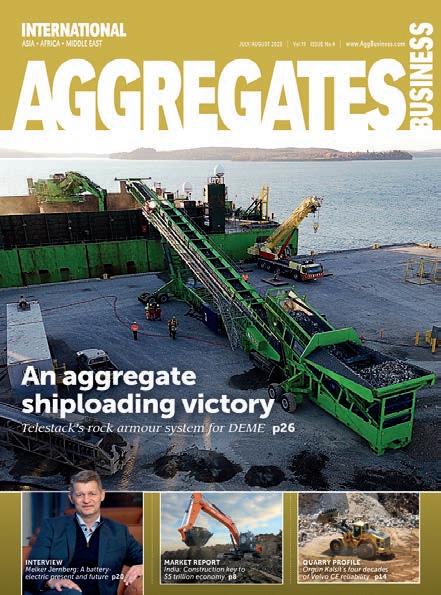




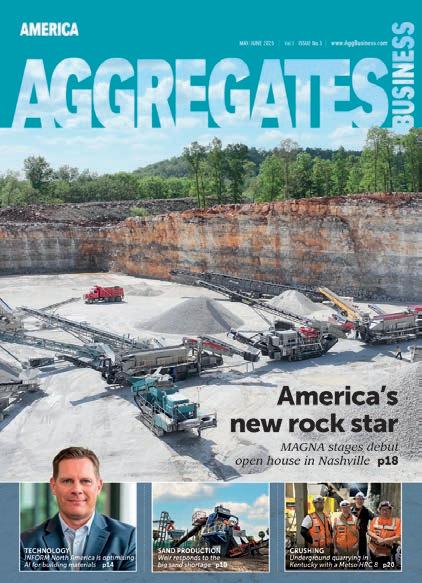





subscriptions@primeglobalpublishing.com
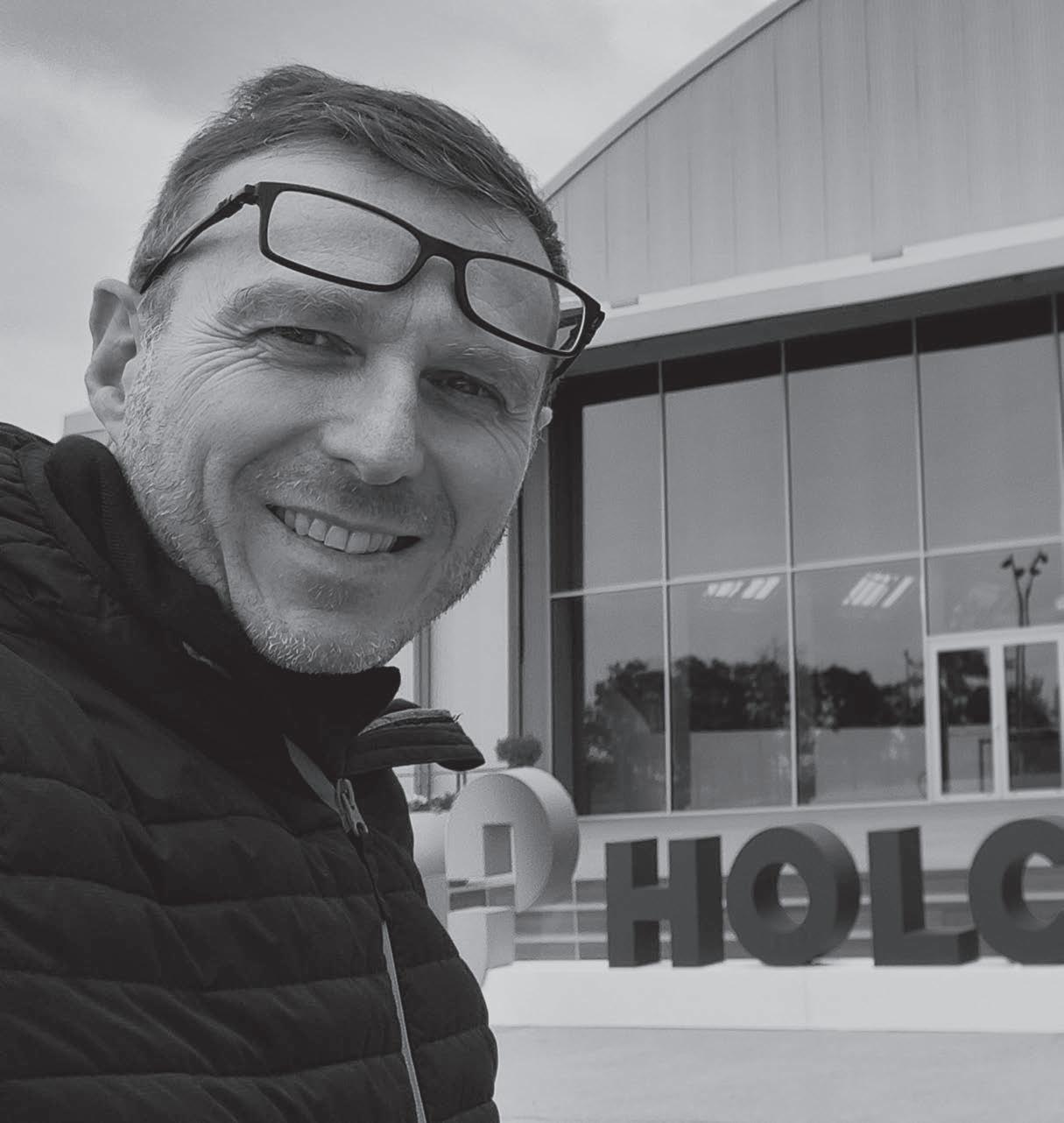




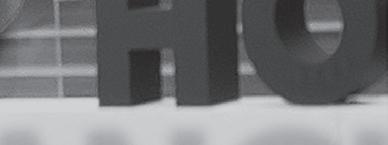





Holcim Italy’s Paolo Zambianchi talks to Aggregates Business about the critical importance of aggregate supply and why he is advocating the use of technology to optimise primary and secondary production.
Holcim Italy technical director of aggregates and ready-mix Paolo Zambianchi believes the current global geopolitical landscape has awakened politicians and policymakers to the critical importance of essential raw materials, including aggregates, and the need to secure their supply for the health of their nations.
“I have seen over the last 20 years a political regression regarding the critical importance of raw materials, at a national and European level,” Zambianchi said.
“After dramatic events, including the Russia–Ukraine war, perspectives are changing. The European community now understands the crucial role of raw materials as strategic resources. Without raw materials, there is nothing.”
An Italian national, Zambianchi has been in his current role since 2011 and is responsible for production, maintenance, safety, and investment at Holcim Italy’s four aggregate quarries and 22 ready-mix plants. The former produce a combined 1.3 million tonnes of aggregate and sand annually, while the latter generate up to 1.5 million cubic metres of ready-mix per year.
“Holcim concentrates its operations in northern Italy. I am also in charge of these sites’ environmental side and their relationships with the authorities,” he said.
Another key element of Milan-based Zambianchi’s work is securing operating permits and licenses for Holcim’s aggregate and ready-mix sites. This increasingly complex and challenging aspect of production has long been a focus of the European sector.
“Permitting and licensing for our business is crucial. Without approvals, we won't produce any more aggregate and ready-mix cement, and we won’t have the civilisations we have now,” Zambianchi said.
“Every region and every state in Europe has to be able to guarantee the quantities and supply timing of raw materials for more than 50 years, but we are getting permits and licenses for only two to ve years. It’s such a short time.”
Zambianchi said ensuring work site safety is his most signi cant constant challenge.
“Holcim wants to achieve a fundamental target of zero Injuries. It’s a tough target we face every day,” he said. “This is not just for Holcim employees; we work with many third parties.
“While Holcim is already a sustainable company, we want to reduce our CO2 footprint further and also do more to improve our circularity. We have tough targets to reach by 2030, so our transformation must be achieved in a short time.”
1. Example of a Ma-estro digitalised quarry plant optimisation solution. Ma-estro was among the key partners involved in the Holcim Italy Pioltello DigiEcoQuarry pilot.
2. Paolo Zambianchi believes big geopolitical changes have brought home to politicians and policymakers the critical importance of essential raw materials, including aggregates.
A keen advocate of the role of technology in modern aggregate production, Zambianchi led Holcim Italy’s involvement in the fouryear, EU-funded DigiEcoQuarry project, the brainchild of Asociación Nacional de Empresarios Fabricantes de Áridos (ANEFA), one of Spain’s oldest and most reputable associations for the national extractive industries and construction products.
DigiEcoQuarry saw ve pilot quarry sites (in Italy, Germany, France, Spain and Portugal) with different characteristics adopt Innovative Quarrying Systems (IQS), comprising sensors, processes, tools, and methods for data capture, processing and sharing, to provide integrated digitalised, automatic, and real-time process control for aggregate quarries.
Completed last year, the results of and conclusions from the DigiEcoQuarry project were shared by Zambianchi and other pilot leaders via in-person presentations to an independent international advisory board and other stakeholders at Aggregates Europe’s headquarters in Brussels in June.
Each pilot site reported signi cant improvements in health, safety and security, as well as in ef ciency, selectivity, and pro tability, while reducing environmental impact and increasing social acceptance.
With DigiEcoQuarry technology now rmly embedded in each pilot site, the project offers best practice examples for aggregates processing sites in Europe and the wider world.
“Holcim’s Pioltello San Bovio sand and gravel quarry, a 400,000-tonnes-a-year operation near Milan, was one of the pilot sites,” Zambianchi said. “It was exciting to be part of the DigiEcoQuarry project and to be working with so many great people. We focused on some key performance indicators related to the environmental and ef ciency aspects of production. Regarding the former, we explored ways to increase the amount of recycled water used in material production, thereby reducing the amount of freshwater required.
“We designed a system with around 80 to 90 machine sensors to add to the site’s


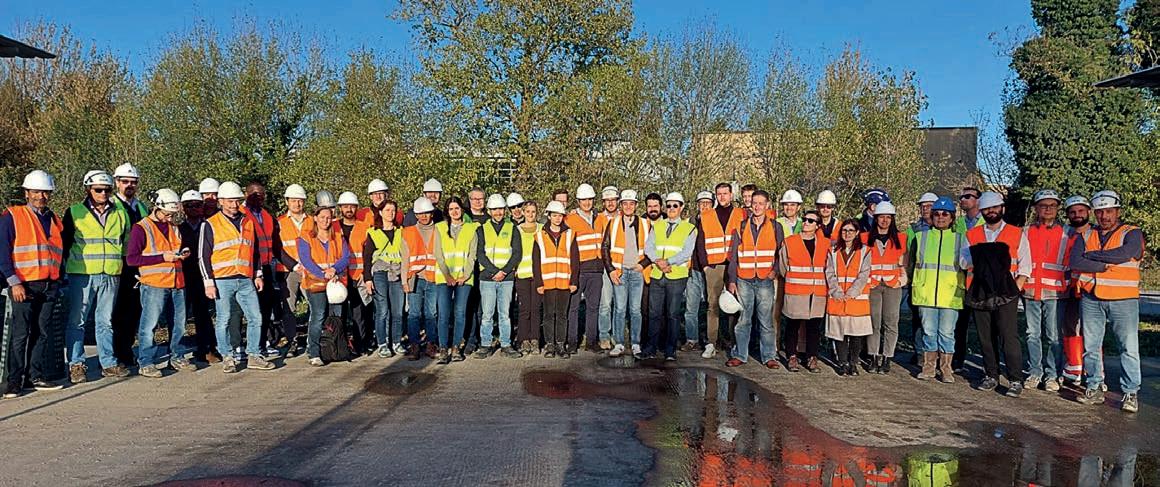
existing automation and help the quarry team focus on how they were processing materials through crushing, screening and washing. We also focused on safety, installing new sensors on some of the site’s heavy mobile machinery and utilising arti cial intelligence [AI] for stockpile measurement.
“We built a cloud platform where all the data was collected and analysed. It was a very interesting experience. Across the 25 or so partners involved, we had representatives from IT, software and arti cial intelligence companies.”
Firms working with Zambianchi and his Pioltello San Bovio project quarry team included Ma-estro, the Italian quarry
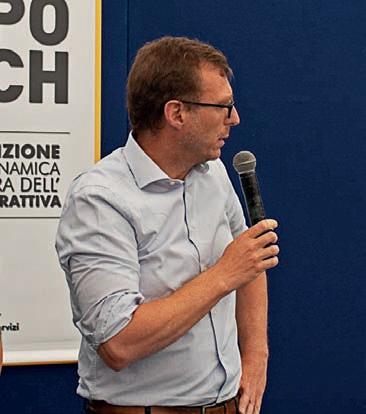
“I designed the CavoExpoTech brand and patented the name under ANEPLA. We’ve run it for 10 years and it’s the reference event for quarrying in Italy.”
and plant optimisation specialists; Arco, a leading Spanish industrial weighing solutions business; Sigma Cognition, a Spanish end-to-end, data-centric AI and machine learning solutions business; and Mintek, South Africa’s national mineral research organisation and one of the world’s leading technology companies specialising in mineral processing, extractive metallurgy, and related elds.
“The overall systems we and the other pilot sites chose had to be cheap and easy to install and manage, as this was linked to quarrying rather than mining,” Zambianchi said. “Over the four years of the project, Pioltello achieved around 10 per cent more productivity and ef ciency, cut production costs, and reduced freshwater use by two per cent. With ANEFA, the DigiEcoQuarry project leader, we are studying some other technology that we can test at Pioltello and the other pilot sites.”
Zambianchi is also excited about the circular economy opportunities offered by Holcim Italy’s rst construction and demolition (CDM) waste recycling hub at Gorla Quarry in Varese, around 60km northwest of Milan.
“This is a very important new development in our decarbonisation journey,” he said. “The EU target for recycling CDM [construction and demolition] waste is 75 per cent by 2030, and in Italy, we are already at 85 per cent. It’s a big success story.”
Zambianchi told Aggregates Business about his insights into the current state of the Italian aggregates market.
“The situation is dif cult for many reasons, including high energy costs and the fallout from what is happening internationally. More positively, the European Union is investing in large-scale infrastructure projects, such as new high-speed train lines and highways, which are bene cial for companies like Holcim,” he said.
“As a country, Italy is also investing in infrastructure, particularly in the north of the country.
“We have the [Milan Cortina] Olympics in February 2026, and Holcim is giving a lot of aggregate, cement and ready-mix to construction works, including our ECOPlanet green cement.
“The market is very interested in how our sustainable products relate to environmental product declarations [EPDs]. Enhancing

sustainability in building works is a key strategy for us. Holcim Italy is focused on supplying ECOPlanet and other sustainable products to bigger infrastructure projects, as the regulations are clear around the amount of recycled and low-carbon materials that need to be used by contractors.”
Zambianchi is the vice chairman of Aggregates Europe’s environment committee and continues to serve on the board of ANEPLA, having previously served as the association’s president from 2014–20. Under Zambianchi’s leadership, ANEPLA became a prominent association member of Aggregates Europe and launched CavaExpoTech, an annual meeting place for producers of mining goods and services and quarry entrepreneurs.
Each event, held at different ANEPLA member sites throughout Italy, is traditionally divided into classroom-based professional development on current industry trends, followed by static and dynamic demonstrations of quarrying machinery and linked technology. In addition to each live event, a series of CavoExpoTech webinars is staged throughout the year.
In his six years as president, Zambianchi also signi cantly increased ANEPLA’s membership, bringing in aggregate industry service companies, and strengthened the association’s working relationship
with Con ndustria, the main association representing manufacturing and service companies in Italy.
“I designed the CavoExpoTech brand and patented the name under ANEPLA. We’ve run it for 10 years and it’s the reference event for quarrying in Italy,” Zambianchi said.
“We do one or two CavaExpoTechs per year. If we host two events, based on member demand, one will be held in the north and the other in the south of Italy. We invite industry stakeholders and local politicians, and always have one quarry site day for families, with children participating in all kinds of fun activities.
“At a CavaExpoTech event last year, Caterpillar and CGT, its Italian dealer, attended with Cat Command [remote control machine solutions]. Some important politicians heard about this and were eager to try it, so they took turns operating the excavator remotely. It was very nice to see.”
A geology graduate who also holds a master’s degree in business administration with a focus on the oil, gas and raw materials industries, Zambianchi spent three years working in the Italian oil and gas sector before entering the aggregates industry with Holcim Italy in 2001.
“I think we need to do more with schools and universities as industry companies
and, in ANEPLA’s case, as associations, otherwise we will lose the next generation’s interest and quarrying and mining industry competencies,” Zambianchi said.
“This is why Holcim Italy has started an academy near our headquarters in Milan that teaches local schoolchildren industry knowledge and skills.”
After an extensive career, Zambianchi is clear that there is still plenty wants to achieve in the Italian and wider European aggregates industries.
“Like in a rugby match, it is impossible to win without the support of your team and playing for each other. My team at Holcim Italy aggregates and readymix is crucial,” he said.
“You come to Milan, and in the last 20 years it has undergone signi cant changes, with skyscrapers, subways and buildings made from green, sustainable building materials supplied by Holcim.
“It’s a big transformation, and it makes me very proud. I am also proud of being the rst Holcim Italy manager to receive authorisation for a CDM waste recycling hub [at Gorla Quarry]. I want this hub and Holcim Italy in general to be the reference point when it comes to recycled materials to enable sustainable construction, not just in Italy but the whole of Europe.” AB
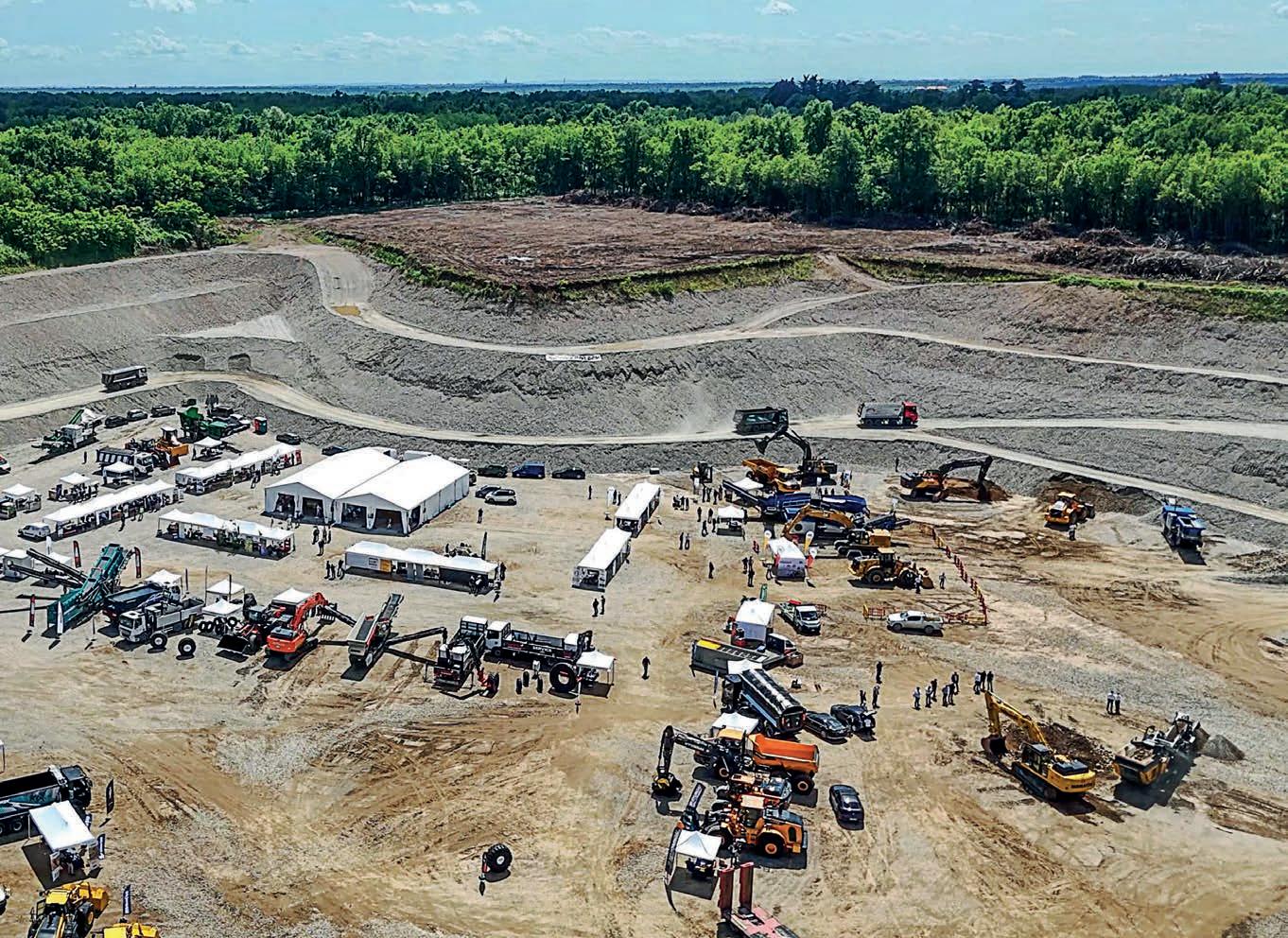
SunEnviro is expanding its waste processing capabilities to produce premium aggregate products and sand at its site in Thetford, England, following a £3 million investment in a state-of-the-art McLanahan waste recycling plant. Aggregates Business visited the site for a close-up look and to hear about the long-term expectations for the set-up.
When Aggregates Business toured the SunEnviro open day, the company’s managing director Mat Stewart said his three business brands, SunSkips, SunDemolition and SunAggregates, generate no waste that is directly sent to land ll.
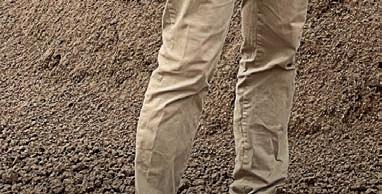
SunEnviro’s new up-to-70-tonnes-perhour (tph) waste recycling plant in Thetford, Norfolk, one of several SunEnviro operates in eastern England, will process up to 100,000 tonnes of waste annually into premium aggregate products and sand in compliance with (BSE 9321) British Standards.
While SunEnviro’s signi cant seven- gure investment in the comprehensive McLanahan set-up has already started to prove its worth since becoming fully operational in May, the rm’s notable increase in its waste processing is likely to also prove highly shrewd.
Introduced in 1996 to encourage more sustainable waste management practices, the Land ll Tax applies to taxable disposals at land ll sites and, more recently, unauthorised sites. In April 2025, HM Treasury, the UK Government’s economic and nance ministry, and HM Revenue & Customs, the UK’s tax, payments and customs authority, launched a consultation on Land ll Tax reform, proposing the removal of the lower rate of Land ll Tax (£4.03 per tonne for inert materials such as rocks and soil) by 2030. In its place, an escalator will be applied to the lower rate until it reaches the standard rate level (currently £126.15 per tonne), with the qualifying nes regime and quarries and dredging exemptions being removed from April 2027. The new Land ll Tax rules will be coupled with increased penalties for illegal disposals.




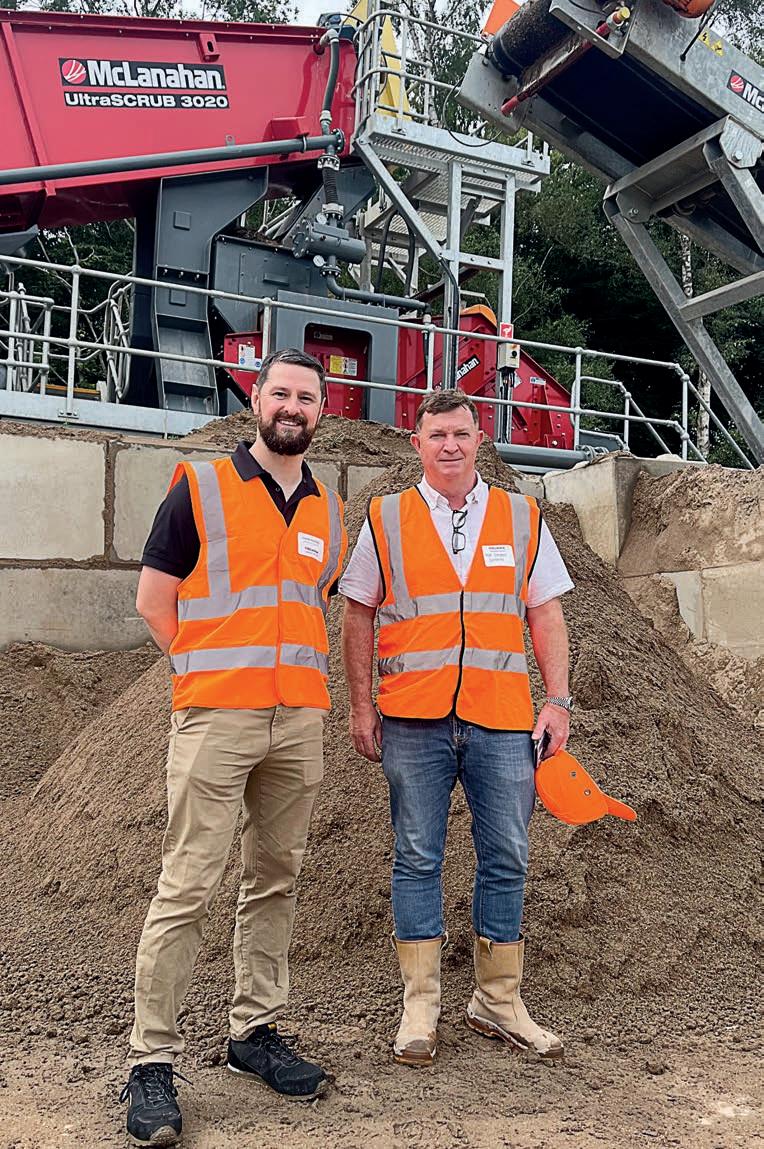
Stakeholders, including the Mineral Products Association (MPA) and British Aggregates Association (BAA), have expressed concerns about the economic impact of the Land ll Tax reform proposal. Consultation closed in July, with a wide range of industries, including quarrying, construction and recycling, awaiting the UK Government’s next steps.
Stewart, who has nearly 30 years of experience working in environmental services, with SunEnviro, which started as SunSkips in Stowmarket in May 2020, now covering sites in Thetford, Cambridge, Haverhill, Ipswich, Dereham and Hoddesdon, told Aggregates Business this could present an opportunity for his company.
“If all goes to plan, we thought we’d start seeing a return on our investment in three to four years, but if the Government do what they say they are going to do [on Land ll Tax
reform], it will be a lot quicker, potentially 12 months,” he said.
“We are saving £600,000 to £700,000 a year by not having to put 30,000 to 40,000 tonnes of waste and nes into land ll, and that’s at the lower [Land ll Tax] rate. If the standard tax rate applies, I don’t know how many businesses like ours will be able to put a skip out and be competitive.
“We are also fortunate in being able to control what we bring here in our own vehicles. We can keep material coming in, but our guys have got to sell the recycled aggregate and sand product that goes back out, so we adjust the daily volumes we are processing.”
SunEnviro’s bespoke waste recycling plant features a McLanahan UltraSCRUB, UltraSAND and HRT10 Thickener, which work together to ensure high throughput, minimal water usage, and full site circularity, culminating in the nal step of the process: a McLanahan Filter Press.
The McLanahan set-up at Thetford, which washes and recovers materials from construction and demolition sites, excavation waste and trommel nes, is part of SunEnviro’s nationwide effort to turn waste into valuable recycled aggregates under its SunAggregates brand.
Comprised entirely of McLanahan equipment and plants, the Thetford solution has been designed to minimise water intake and ensure the process retains as much material and water on site as possible.
The site’s tight two-acre footprint has necessitated a considerable planning process for McLanahan. The system forms an ‘L’ shape along two sides, maximising room for feed material and clean, sorted end products.
Stewart said a lot of research went into the decision to opt for a McLanahan waste recycling plant at SunEnviro Thetford.
“I looked at eight suppliers and then a friend of mine at Global Machinery Solutions introduced McLanahan to me,” he said.
“I whittled it down to three suppliers and then worked with McLanahan to optimise what we wanted here, looking at the site we had available. It was good to work with people who wanted to provide us with a solution: a, to t on the site; and b, to wash what we wanted to wash.

“McLanahan was the easiest to work with and had the breadth and depth of knowledge that others didn’t, or didn’t want to share. I also think they really wanted to work with us. The whole [recycling plant investment] deal took around 10 months.”
SunEnviro manages more than 120,000 tonnes of waste across the east of England, with an inventory of 4000 skip containers and a eet of 65 fuel-ef cient vehicles. The company only processes waste collected from its SunSkips and SunDemolition sites.
“The plant feed is half crushed rubble and half trommel nes, which is turned into 0–4mm sand, and 4–10, 10–20 and 20-plusmillimetre aggregate,” Stewart said.
“I like to say that what we do is spinning plates. All of our [SunSkips and SunDemolition] sites are full of nes and
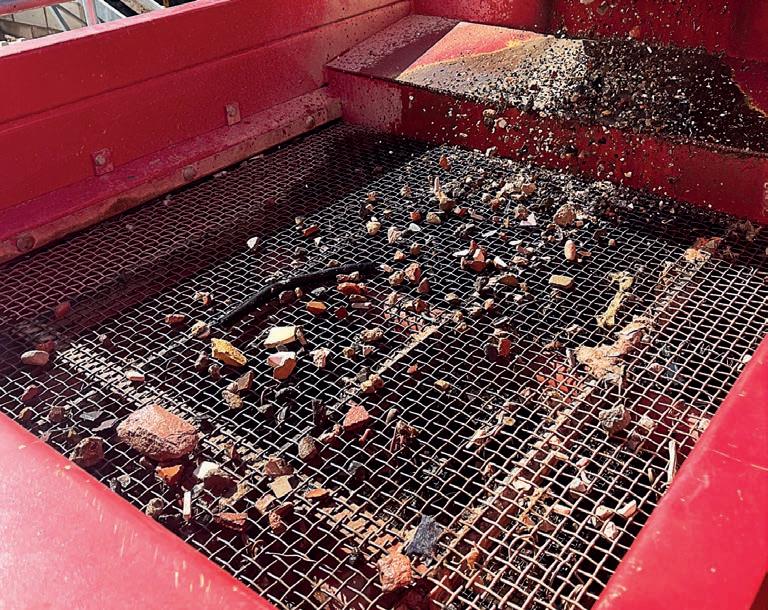
With support from McLanahan, SunEnviro is turning waste into valuable recycled aggregates under its SunAggregates brand.
rubble, which is great feedstock for here. This Thetford site sits in the middle [of SunEnviro’s site network], and I can bring nes in from, say, Norwich and take washed sand or 0–10mm aggregate back to sell out of bags at that site.
“We sell to local construction companies, housing developers, highway contractors, and civils and utilities companies.”
SunEnviro and McLanahan partnered for an open day at SunEnviro’s Thetford site in September. The two companies welcomed around 80 industry professionals representing a variety of construction and civil engineering companies, as well as council highways authorities, to experience SunEnviro Thetford’s innovative McLanahan recycling system.
This open day offered those looking to improve or add a recycling process to their plant, as well as those who are struggling with the upcoming costs associated with the end of qualifying for trommel nes in the UK, signi cant insight into best practices for building a circular system.
“We are really excited about what’s happening in Europe. We made a substantial investment in the market over the past veplus years and have over 100 employees in the UK and [mainland] Europe,” McLanahan chief executive of cer Sean McLanahan said.
“We are continuing to expand, and part of that is in construction and demolition [C&D] waste recycling, which is extremely important to us.
“The two areas in which our company continues to grow around the world are
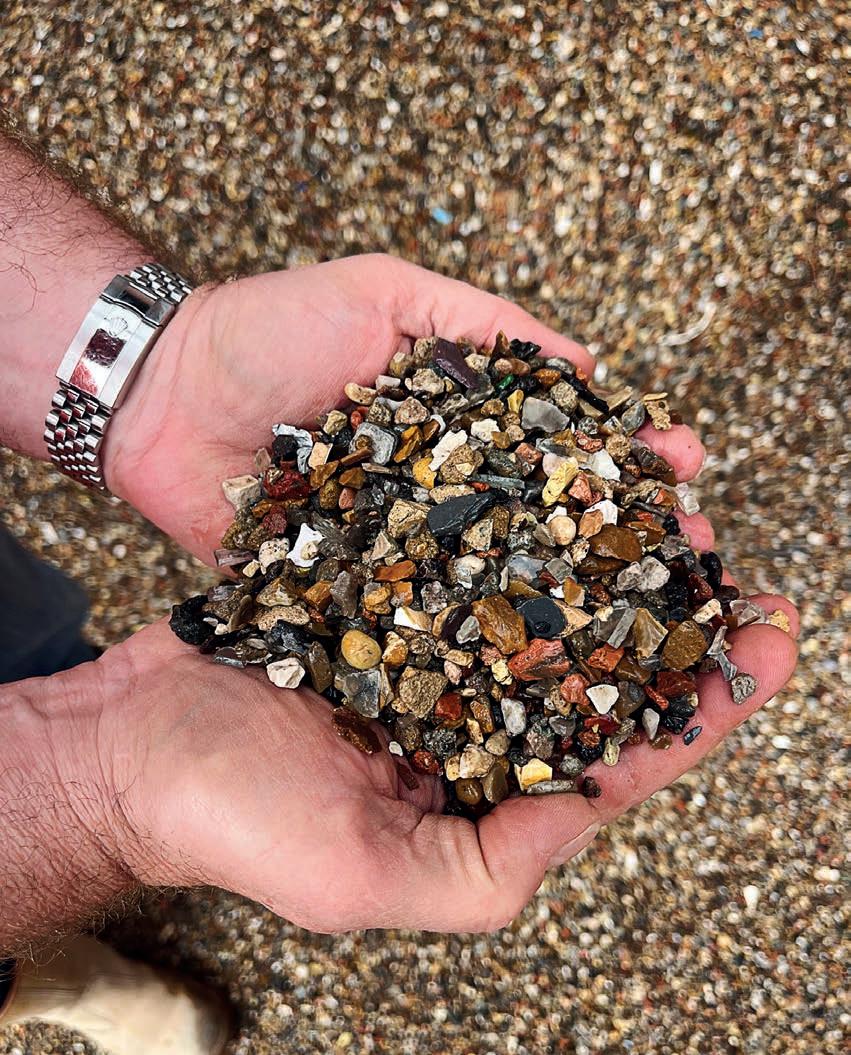
in C&D recycling and water management, utilising our thickeners and lter presses.”
Stewart said his company was proud to showcase its latest solutions with McLanahan.
“I think it’s great to work with McLanahan and help them get into a market that is desperate for professional businesses to sell them a product that works,” he said.
“I think [the open day] has been good for people to see how we t and operate this kind of plant on an industrial estate site. Everyone automatically thinks it would be based in a quarry.
“If you look at the Norfolk Local Plan, all inert recycling is being directed towards industrial sites rather than extending the life of quarries. We are very proud of what we have here. We want to replicate it at some of our existing sites and potentially at some new ones that we buy in the future.”
McLanahan business line director David Hunter said the process shows what could happen when suppliers and producers collaborate together,
“This installation has been a real collaboration, a lot of sitting down together, talking through the process and adjusting,” he said. “This is the rst time we’d put a plant like this in, and we were saying, ‘Guys, we will make this work’.
“Changes in legislation are increasing interest in what we can offer. There are a lot of operators who aren’t geared up yet for what might be coming. SunEnviro has got ahead of the game, and it’s great to be part of that.”
Stewart said he wants the Thetford McLanahan plant to feature an eddy current separator (ECS). This machine uses highspeed rotating magnets to induce eddy currents in non-ferrous metals, such as aluminium and copper, creating a repulsive magnetic eld that pushes them out of the waste stream. The process is used in recycling facilities to recover valuable metals from materials such as plastics and wood,
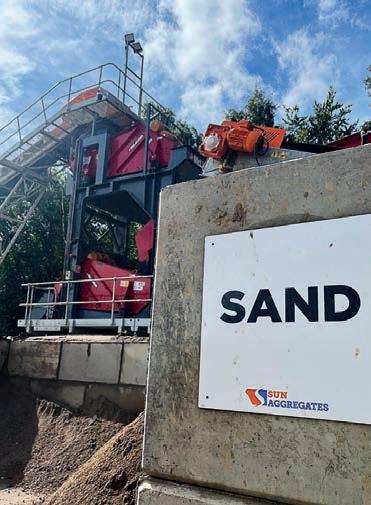
increasing recycling rates and reducing land ll waste.
“I don’t think many McLanahan customers had asked for this, but they found us a supplier we could work with and included it in their package. We didn’t want to have to nd our own supplier and add bits into the plant,” Stewart said.
“We were also clear that we wanted to meet the WRAP quality protocol (a document that sets ‘end-of-waste’ criteria for the production of a speci c recovered product, such as aggregates, compost or glass cullet). This plant does.
“We like the fact that McLanahan is a 190-year-old family business, with a similar philosophy to SunEnviro. Just looking at the quality of the equipment and the fact that they were keen to handle any problem were also big selling points for us.”
“We don’t look at changes in legislation as a pain in the neck; we look at them as opportunities.” AB
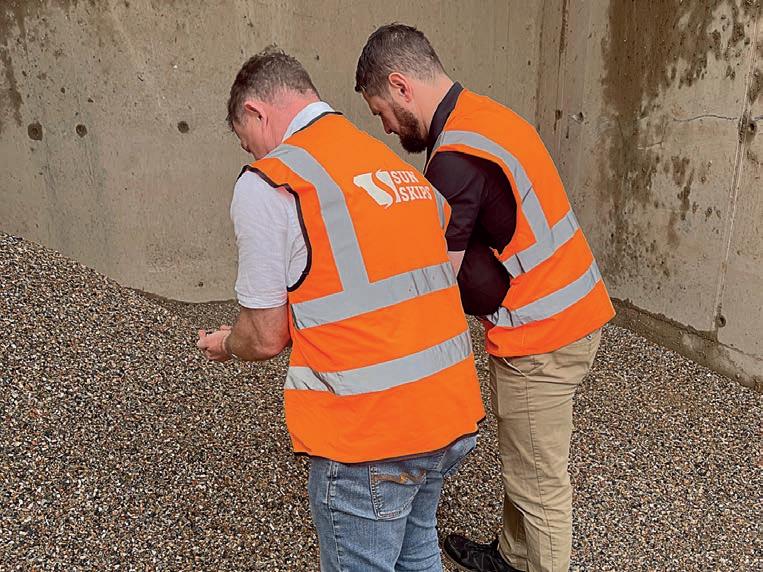

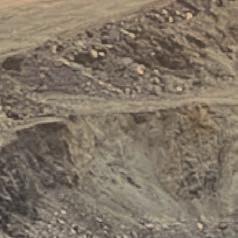



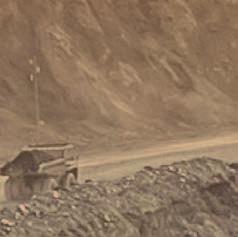
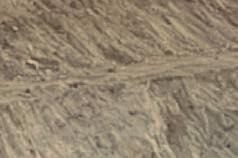


























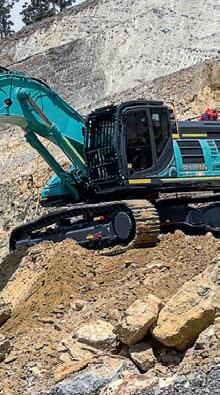















As the only national quarrying publication and the official journal of the Institute of Quarrying Australia, you’ll always be up to date with the latest developments in industry news, technology and events with Quarry Magazine. It’s quick and easy to subscribe to our monthly print issues, our annual Suppliers Directory and our weekly eNewsletter. Don’t miss out!



















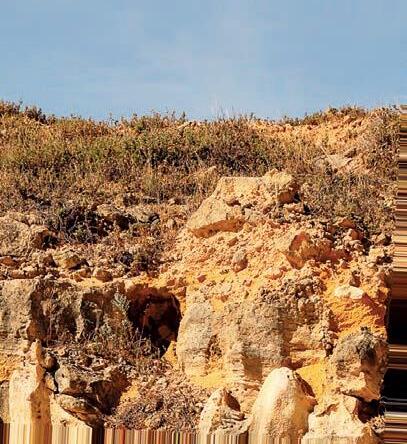




























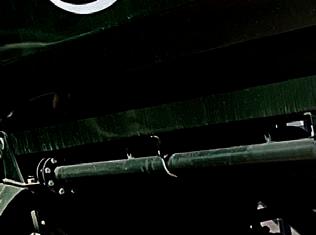
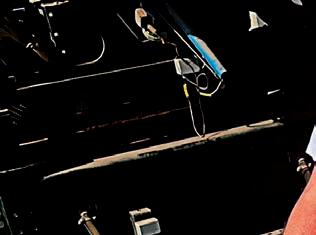
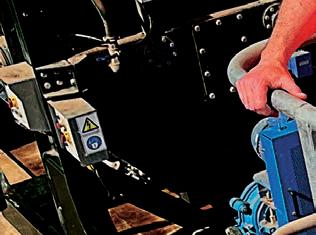
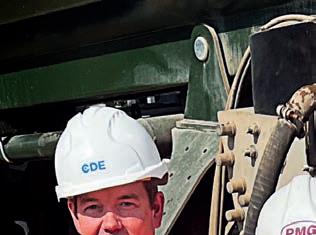

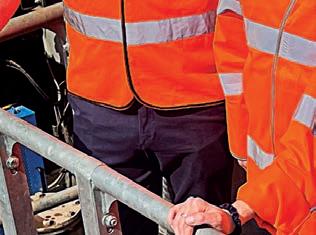

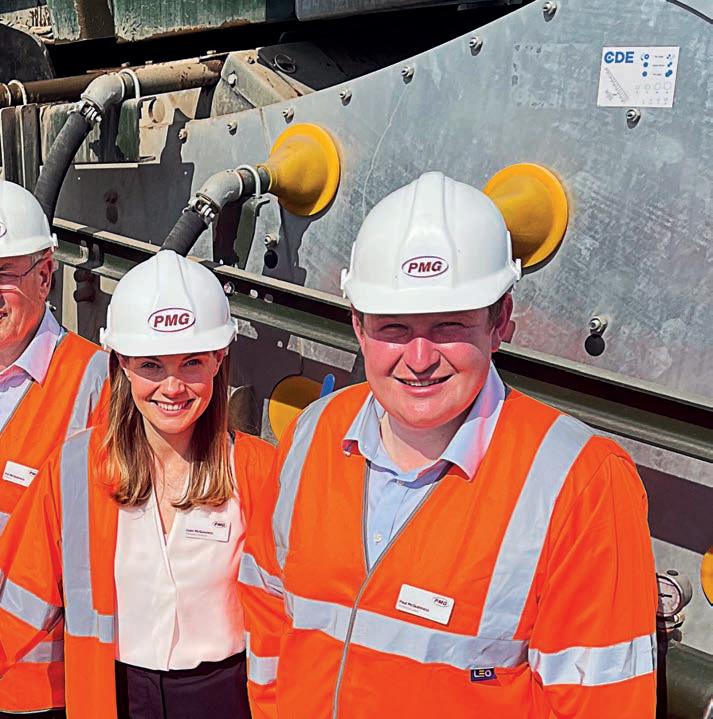





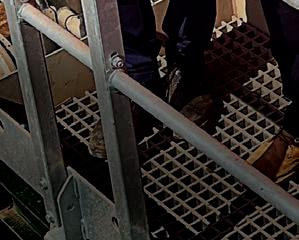

PMG Services has reinforced its commitment to sustainability by making its second purchase of a CDE waste recycling plant. Aggregates Business took a close-up look during a CDE openhouse event at the company’s new headquarters.
Clare McGuinness is excited about the future of PMG Services (PMG). And the managing director of the family-owned-and-operated business has every right to be given PMG’s impressive new headquarters in Severn Beach, 10 miles north-west of Bristol.
At its heart of the HQ is a new 25-tonnesper-hour (tph) CDE waste recycling plant solution, part of PMG’s ‘zero-to-land ll’ movement, which is setting the rm up for a new era of success.
“We’re on a journey to process even more waste across the south-west of England. Our vision is to keep growing the waste processing capability at PMG and be able to divert more valuable material from land ll,” Clare said.
“We’re a family-run business with over 35 years of experience, and in that time there has been a lot of change and investment.”
For over a decade, PMG operated a 10tph CDE waste recycling plant set-up at its former site in Albert Road, behind Bristol Temple Meads train station. Clare said this enabled a better understanding of CDE’s new waste recycling plant technology.
“We’d outgrown our previous city centre site and needed to move to a new one. During the early stages of this investment, we ensured that the design and layout were tailored speci cally to our operation, such as making the plant quite compact and allowing as much automation as possible. An example of this is the automated liquid feed into the plant, which was previously a manual process,” she said.
“As we were doubling the size of the operation, we also wanted to consider wider yard operations and traf c ow around the site. To gain a better understanding, we visited a few reference sites across the UK.
“It can be dif cult to process the gully waste and road sweeping waste we’re working with, so with the new design we were able to prioritise access to ensure that the operation and maintenance of the plant is easier, and so that we can continue to optimise the solution going forward.”
A signi cant amount of PMG’s waste material is recovered by the company’s vehicles, with a growing amount brought in from third parties, such as councils and other road sweeper and tanker companies.
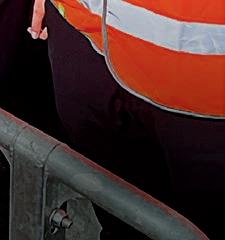


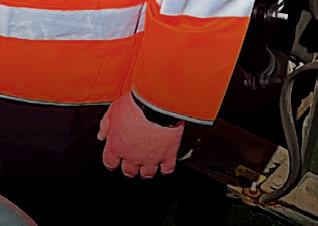
“We service a lot of housebuilders, groundworks contractors and councils,” Clare said.
“We may collect waste from a construction site customer, and the same customer is then taking it back as PMG recycled sand for use in a building project. It’s a fantastic circular economy.
“We have a 62-strong vehicle eet and cover Gloucester down to Taunton and into south Wales with our road sweepers. We also have a depot in Swindon, which enables us to extend our service to Oxfordshire.
“Here at Severn Beach, we are open from 6:00am to 5:30pm, Monday through Friday. We can also open on Saturday and Sunday by appointment, and when we have night shifts booked we can be open for tipping then as well.”
Designed for what Clare is a decade-long growth plan for PMG, the new CDE waste recycling plant comprises an R1500, one of CDE’s R-Series primary scalping screens, an AggMax scrubbing and classi cation system, an EvoWash sand washing system, and an AquaCycle high-rate thickener and static screen.
When the tanker or road sweeper arrives on-site, it allows the water to drain out of the body into the pit, removing any solids or lightweight organics using a bespoke PMG-designed system. The remaining liquid contents are then pumped automatically into the AggMax.
Once the truck has released the liquid, it will then discharge all solid waste, such as road sweepings. This waste is then loaded into the R1500, where oversized material will begin to be processed. Anything under 80mm will continue to the AggMax, which is eventually passed to the EvoWash.
All material that remains in the liquid and can’t be extracted through solid separation is sent to water treatment. Any sludge is then sent to a centrifuge, where the silt is separated to ensure process ef ciency.
The water gets returned to the system for further processing through the AquaCycle, which recycles up to 90 per cent of the process water for immediate re-use in the system.
The solution enables PMG to produce two products: a 5–25mm aggregate and a 0–5mm sand product for use in Bristol’s construction market.
“We’ve built in the ability to add a third deck in the screener so that we can have the option of producing another stone size,” Clare said.
PMG’s recycled aggregates and washed sand are mainly used in earthworks, but also meet the speci cations for highway works, pipe bedding and cable laying.
With strict regulations on waste products that can be sent to land ll, there is a pressing need to turn gully waste and road sweeping waste into an opportunity.
Under European land ll regulations, liquid waste consisting of road sweepings with a water or liquid content of 10 per cent or more can no longer be sent to land ll. In turn, this presents a challenge for disposing of this waste.
According to the Mineral Products Association (MPA), the UK’s market share of recycled aggregates is three times higher than the European average, highlighting the increased importance of repurposing waste.
Clare said PMG’s operation not only supports sustainability objectives but also generates new revenue streams to bene t the local economy.
“This was an investment that we had been thinking of for several years, and we are delighted to see the plant in action,” she said. “We’re proud to be recovering this material to transform it into high-value materials for the local industry. We’ve also been taking on people over the past year to prepare for this next business step.
After a year living and working in Australia, Clare joined the family business in 2020, during the COVID-19 pandemic.
“I studied civil engineering at university and had worked on the other side of this business as a contractor working on major projects such as Crossrail and Thames Tideway. I understand the pains inherent in construction sites and the need to offer a seamless service to customers,” she said
“It’s been great. The CDE people visiting us are extremely knowledgeable. If they are making a minor change to the plant, they also ensure the whole plant is running as well as it can. They are very proactive and

really helpful.”
Joining Clare and the CDE team to welcome customers and dealers at the open house event in June were her father, PMG founder and director Pat McGuinness, and her brother, PMG technical lead Paul McGuinness. Clare’s mother, Bernie, who, along with Pat, is originally from Ireland, played a key role in building PMG’s nance function and continues to support the business today.
“We’ve had a very good relationship with CDE throughout the last 10 years or so,” Pat said. “About two years ago, we wanted to invest and move to a bigger site, as our site by Bristol Temple Meads station was only 0.6 acres.
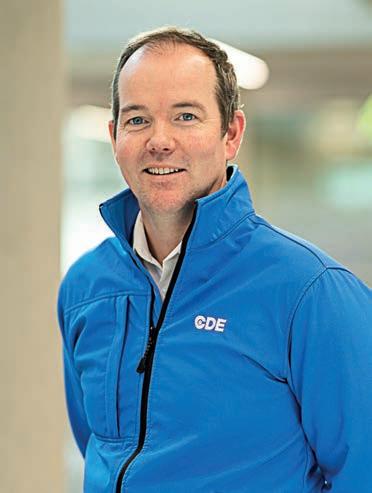
CDE’s AquaFlo 450 is part of the turnkey CDE waste recycling plant solution for PMG.
“This new site spans 6.5 acres, and we already have four acres of planning approval for the waste recycling plant, of ce premises, storage facilities, lorry parking, and other amenities. We have more room to tip off and can accept more material deliveries on site at any one time. We’ve got good customers and they’ve all come with us to this new facility.”
Paul said CDE has been a great support to the family business during this process.
“We learnt a lot from the rst CDE plant and worked closely with them on designing the new one,” he said. “Their engineers have been with us these rst few months of operation, ne-tuning the plant. You always get a few teething issues, but it’s been running well. We’re happy.”
CDE key accounts manager Fergal Campbell said the company is proud to be associated with a forward-thinking organisation like PMG.
“PMG’s commitment to recovering and repurposing material is second-to-none. Over the years, we’ve seen the team’s ambition grow and how sustainability is truly at the heart of every decision they make,” he said
“This type of material is challenging and costly to dispose of, but PMG identi ed the opportunity in this space over a decade ago, and since then they’ve continued to push boundaries and invest in the right technology to divert even more material from land ll.
“With depletion of virgin materials across the world, there’s a greater need more than ever to turn today’s waste into tomorrow’s resource, and we will continue to champion the vital service that PMG is providing.” AB

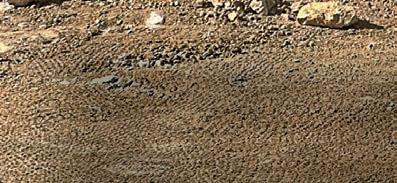

Increased machine power options are good news for cost-savvy quarry operators, while one major loading machine player is leading the way on smart production.
Sebald Zement is getting things moving in its quarry with the new Volvo EC530E and a matching HB48 hydraulic breaker from Volvo Construction Equipment (Volvo CE). The family-run company from Hartmannshof, Germany, is relying on excavator power for the rst time, gaining speed, exibility and peace of mind in its operations.
Sebald Zement not only stands for highquality cement products, but also processes gravel, limestone and dolomite into, for example, high-quality fertiliser granulate. The business’ new Volvo EC530E is a 50-tonne tracked excavator with a quickchange system and hydraulic hammer. It is the rst ever excavator in Sebald Zement’s eet, marking an important milestone in the company’s quarrying process.
“Originally, we had a wheeled loader in use for demonstration purposes. But in discussions with the customer, it quickly became clear that an excavator would be a much better solution for the requirements in the quarry,” Volvo CE dealer Robert Aebi sales representative Florian Forster said. “The EC530E was the perfect t – both in terms of performance and handling.
“The feedback after the demonstration was consistently positive, so the decision to purchase was made very quickly.”

“The breaker is not only powerful but also surprisingly quiet. This is an important argument for us, especially outdoors, as we want to disturb our neighbours as little as possible,” Spieß said.
The introduction of the Volvo excavator has fundamentally changed daily work in the quarry. Where previously large chunks of stone had to be laboriously sorted out by a wheeled loader after blasting, and then stored for weeks before being crushed later by an external service provider, the EC530E now performs this task directly on-site – and much more quickly and ef ciently.
“With the new excavator, we can not only process the entire blasting shot directly but also optimally feed our systems at the same time,” Sebald Zement technical operations manager Maximilian Spieß said.
“The oilQuick quick coupler makes it possible to switch between bucket and hammer within a very short time. This gives us enormous exibility and increases throughput in processing.”
The team was particularly impressed by the factory’s own Volvo breaker, which works in perfect harmony with the EC530E. Despite its immense impact power, the machine works surprisingly quietly – a real plus given the proximity to the site.
The purchase of the Volvo EC530E excavator was much more than just a machine decision; it was part of a comprehensive change process at Sebald Zement. With the generational change in the company management and the new appointment of Jochen Pohl as quarry manager, many areas were rethought internally. Processes were analysed, potential for improvement identi ed, and the team was actively involved in further development.
“We deliberately took the time to scrutinise existing processes and work with our employees to consider how we can work more ef ciently and sustainably,” Spieß said.
“The new excavator is the result of a whole series of tests, comparisons and discussions, and the feedback from the team was clear: this is the right machine for us.”
Another key factor in the decision was the close and reliable cooperation with sales partner Robert Aebi. From the rst meeting to commissioning, it was not only the technology that impressed, but above all the teamwork.
“Advice, service, support – it was just perfect,” Spieß said. "We always had a contact person, regardless of whether it was about technical details, special conversions
or service issues. The exchange with our permanent service technician also ran smoothly, a really good collaboration, both professionally and personally.”
Next-generation release
The new heavy-duty Cat 980 GC wheeled loader offers low fuel consumption with an on-demand fan, load-sensing hydraulics, intuitive controls and Performance Series buckets. Easy to own and simple to operate, the new wheeled loader is the right economical solution for a broad range of applications.
“We’ve built the new 980 GC on a long legacy of high-performance and highly reliable wheeled loaders with proven components and integrated Cat machine systems,” Frank Stadelmann, Caterpillar global product application specialist said.
“The loader’s simple user interface, intuitive controls and excellent visibility make for comfortable and ef cient operation, even with less experienced operators.
“New features to this model, like our Engine Idle Management System [EIMS], minimise idle RPM and fuel consumption to help deliver low owning and operating costs.”
Adding to the full line of Cat medium wheeled loader choices, the Cat C13 engine powers the new 980 GC. The engine’s Cat Clean Emissions Module works in the background without affecting production. The EIMS, Auto Engine Idle Shutdown, variable speed fan and load sensing hydraulics combine to offer low fuel consumption and sound levels on the machine.
Its eld-proven automatic planetary powershift transmission delivers high reliability and long service life. Four forward/ reverse speeds reach a maximum 39.8km/h (24.7mph) speed to move about the site quickly, and the well-known Electronic Clutch Pressure Control (ECPC) shifting system provides smooth, ef cient gear changes in all operating conditions. Available ride control improves operating smoothness over rough terrain while helping to ensure strong material retention and increasing ef ciency, and the optional limited-slip
differential axle increases traction in poor underfoot conditions.
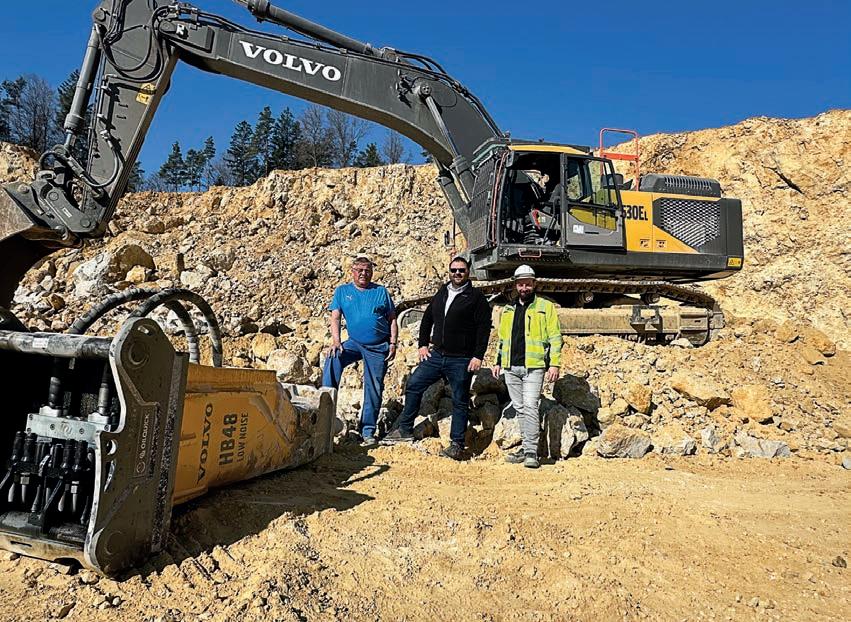
With a bucket capacity range of 4.3–5.8m³, easy-to-load Cat Performance Series buckets use a system-based approach to balance bucket shape with the machine’s lift and tilt capacity, weight and linkage. The bucket design improves material retention and reduces dig time with build options that include general purpose, at- oor, heavyduty rock, coal and light material to meet any application.
Field-proven, the Cat Z-bar loader linkage with cast crossmember and tilt lever provides strong digging ef ciency and high breakout forces for superior production capabilities. Load-sensing hydraulics produce ow and pressure for the implement only when needed, improving machine productivity and resulting in low fuel consumption. The new 980 GC can be equipped with the Cat Fusion quick coupler and controls, and combined with optional third-function hydraulics, the coupler allows use of a wide variety of work tools.
Cat VisionLink, standard for the new 980 GC, allows eet managers to track critical loader operating parameters like machine location, hours, fuel usage, diagnostic codes and idle time to improve productivity and lower operating costs. In addition, Cat Payload

The acquisition of the Volvo EC530E excavator was part of a comprehensive change process at Sebald Zement.
offers optional material weighing during transport and lifting for on-the-go weighing (not legal for trade), allowing operators to load to exact speci cations, load more trucks, and avoid over- or under-loading.
The Cat Payload for Trade option for Cat Advanced Payload allows users to integrate the scale data directly into business processes. It is also type-approved by the International Organisation of Legal Metrology, while retaining all the features of the standard version of Cat Advanced Payload.
Providing a comfortable working environment throughout the shift, the 980 GC’s spacious cab design features easy, intuitive controls and excellent visibility. The complete user interface is designed as an intuitive system, allowing the operator to monitor machine health. Pilot-operated hydraulic controls deliver low-effort, comfortable operation and include a remote transmission kick-down switch for operating comfort.
Keeping safety in mind, ladders are standard on both machine sides, providing easy access to the cab from the left-hand side and to service points from the right-hand side. Extended windows with wide, at and distortion-free front windshields, combined with rearview mirrors and spot mirrors, offer clear visibility to the job site. A rearview camera is standard, and a windshield guard option is available. Air conditioning with louvred vents allows the operator to direct air ow for optimum cooling, while the comfort cloth mechanical suspension seat features adjustable armrests, headrest and multiple variations for superior comfort.
The new loader features convenient service points, a one-piece tilting hood with swing-out radiator, and sight gauges for quick and ef cient daily maintenance. Hardto-reach pins have remote, conveniently grouped grease ttings for easy preventative lubrication. An optional Cat Autolube System boasts simple, one-button control and includes a fault ash function to alert the operator to issues.
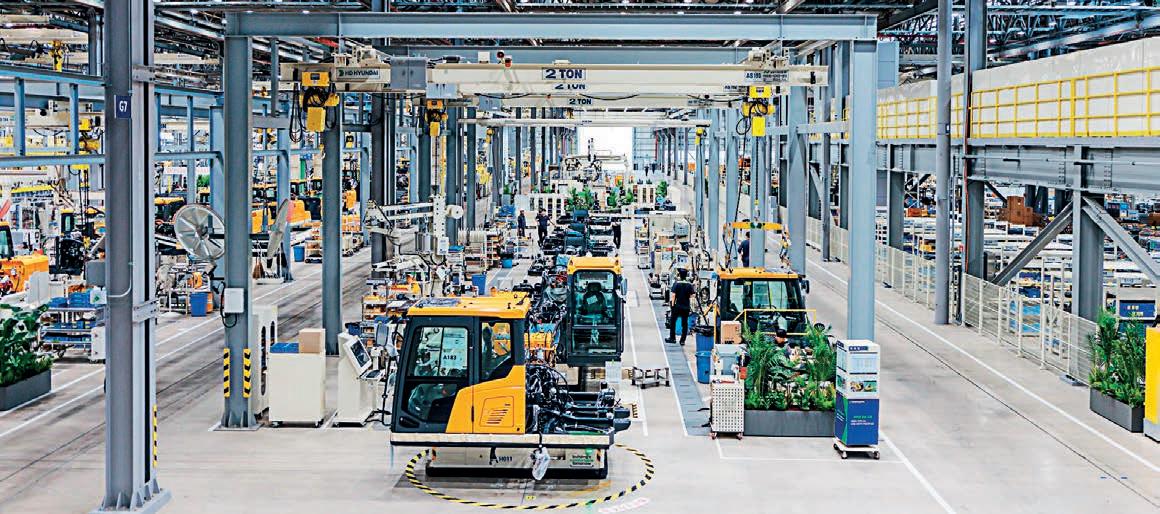
The new 980 GC is built on a legacy of high-performance and highly reliable wheeled loaders with machine components designed and manufactured to high-quality standards. The Cat dealer network backs it to help maximise machine uptime by providing global parts support, trained technicians and Customer Value Agreements.
Next-level investment
HD Hyundai Construction Equipment has invested €131 million in the development of an advanced smart factory at its Ulsan Campus in South Korea. The 4710m² campus is a single, cohesive facility with automated product ow and advanced quality control, and has seen the modernised factory increase production capacity by 56 per cent.
The company has been working on the Advancement Project since 2023, expanding and reorganising production lines, constructing a new quality assurance centre and a new receiving building, developing an updated of ce structure and transforming the plant into a smart facility. Production and logistics have been streamlined under an integrated factory system, while a real-time product tracking system has been introduced to optimise work ow and overall ef ciency.
Welding robots have been installed in the fabrication facility, featuring vision sensors on the body welding production line, which enhances productivity and consistency in quality. Unmanned transport vehicles (AGVs) and arti cial intelligence (AI)-based quality inspection systems in the assembly line further increase automation. According to HD Hyundai, this has resulted in labour productivity improvement of more than 20 per cent, while time required to complete a machine has decreased by up to 35 per cent.
The Ulsan facility, which manufactures medium to large excavators and wheel loaders, will see its production capacity increase by 56 per cent, from 9600 units per year to up to 15,000, enabling HD Hyundai to meet the growing demands of customers
worldwide. The smart facility will act as a ‘Mother Plant’ with direct connections to HD Hyundai’s major overseas production plants and customisation centres in Europe and the US.
“The new factory, transformed with a smart and safe production system, aims to become the world’s leading production hub, integrating advanced technology and environmental sustainability,” HD Hyundai chairman Kwon Oh-gap said.
The site has already delivered its rst machines, including a 40-tonne Next Generation crawler excavator that was launched to the market at the recent bauma exhibition in Munich. The site has also provided a 125-tonne class excavator and 35-tonne large wheel loaders to dealers worldwide.
“The Ulsan Campus has been transformed into a smart factory, signi cantly improving its quality competitiveness,” HD Hyundai chief executive of cer (CEO) Choi Cheol-gon said. “We are dedicated to providing top-tier products that will lead the construction machinery sector, including our Next Generation models.”
At its regional hub in Portsmouth, England, LiuGong recently hosted a landmark event, Zero Boundaries: LiuGong BEV Experience, bringing together key partners and stakeholders to showcase its next-generation electric construction equipment and reaf rm its long-term commitment to the UK market.
The event welcomed industry experts, including Construction Equipment Association (CEA) CEO Viki Bell and Hampshire Chamber of Commerce CEO Ross McNally, alongside key LiuGong dealers, customers, and representatives from leading industry bodies and regional business organisations.
LiuGong Europe resident Howard Dale, president re ected on the company’s global strategy and the importance of the
HD Hyundai Construction Equipment has invested €131 million in its smart factory in Ulsan, South Korea.
UK as a hub of international cooperation and innovation.
“We’re building a strong and sustainable future, across Europe and right here in the UK,” Dale said. “Our direction is clear: we are on a mission to empower people with intelligent, electric machinery and become a world-leading equipment and technology provider.”
Dale emphasised that this vision is underpinned by LiuGong’s Three TOTAL Strategy, a framework rst introduced at bauma 2025, built on the pillars of Total Globalisation, Total Solutions, and Total Intelligence.
LiuGong Europe product director Harry Mellor outlined the company’s leadership in battery electric vehicle (BEV) technology, with over a decade of development and real-world application, outlining LiuGong’s roadmap for future expansion across BEV and internal combustion engine (ICE) categories.
“By 2027, all major product categories will be launched in Europe,” Mellor said. “And by 2030, we aim to cover 85 per cent of total industry volume. That’s what being a fullsolution provider means for us.”
Mellor presented the BEV Model Plan 2026, which includes 10 new machines, including LiuGong’s rst electric skid steer loaders, reach stackers and forklifts for Europe, as well as expanded excavators and wheeled loaders, such as the 95-tonne 995FE and 35-tonne 8110TE.
He also highlighted the proven BEV performance across UK and European job sites, as well as the company’s innovations in battery, charging and site energy systems. These are supported by the integration of AI, Internet of Things (IoT), and information and communication technology (ICT), enabling smarter, more connected job sites.
“China leads in BEV technology, and LiuGong is a leader in China,” Mellor said.
“But leadership isn’t just about innovation; it’s about application. Our electric machines have proven themselves on real job sites, with our highest-hour unit now exceeding 20,000 hours, a clear benchmark for longterm durability.
“If customers have any questions, we’re here to answer them. With over 10,500 BEVs in operation globally, we’ve got the data and experience to back it up.”
Bell shared her perspective on LiuGong’s electric capabilities and the company’s growing role in the UK market.
“The range that LiuGong has is phenomenal, and the BEV capability I’ve seen today has pleasantly surprised me,” she said. “The partners LiuGong have brought together to put the whole package together are going to be key to unlocking the market. UK customers will be encouraged by hearing from those already using the machines, as many operators now prefer them.”
She also spoke about the broader importance of the construction equipment sector to UK infrastructure growth and the need for stronger government backing in zero-emission technologies. “The machines are there; now the government needs to step up and put the infrastructure in place so they can operate ef ciently and effectively.”
Hosting the event in Portsmouth, the home of LiuGong UK, served as a powerful symbol of the company’s long-term con dence in and commitment to the British market. Company leaders reaf rmed their ambition to expand UK dealer coverage, enhance regional service capabilities, and deliver electric solutions tailored to local customer needs.
“The UK is a key market for LiuGong,” Thornewell said. “We’ve built real momentum over the past few years, and our continued investment re ects our belief in its long-term potential. From growing our dealer
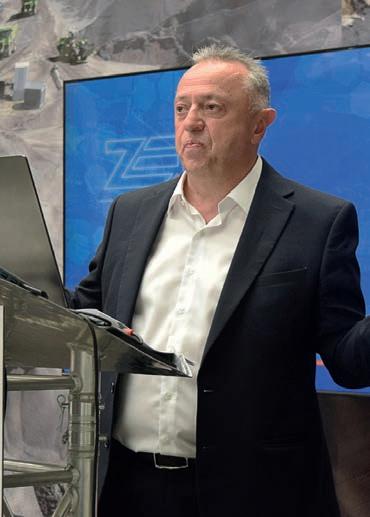
network to delivering electric solutions, our focus is on building lasting partnerships and supporting sustainable growth.”
UK technology. Now they don’t want to go back into the diesel area.”
Images: LiuGong
The event served as a platform to deepen partnerships and formalise forward-looking agreements. Holcim UK head of plant, engineering and asset maintenance Paul Mitchinson shared the company’s experience trialling LiuGong BEV machines.
“The experience we’ve had with the LiuGong machines has been very good,” Mitchinson said. “We put the bigger machine, the 870HE, into one of our south-west quarries, Callow, where the operators fully embraced the new
He recognised LiuGong’s support in con guring equipment to the operator’s needs. Holcim is in a position to nalise an order to a 20 electric wheeled loaders, pending nal approval from HQ, with extra units under consideration beyond 2025.
“I think the behavioural shift in the business is a big change,” Mitchinson said.
“The product itself is a very robust and powerful unit and will be key to supporting our carbon reduction programme.”
A signing ceremony also marked several key developments reinforcing LiuGong’s growing momentum in the UK. This included the formalisation of a new dealer agreement with Dragon Plant Sales (Wales). LiuGong also recently announced a new partnership with Lloyd Ltd, now covering north-west England and Scotland.
As LiuGong continues to roll out its strategic roadmap, UK operations will remain at the forefront, delivering global reach, full solutions, and intelligence-led technologies through its electric platform.
“This event was about setting a clear direction for the future, for LiuGong as a company and for the dealers and customers we support,” Dale said. “It gave stakeholders a comprehensive look behind the scenes, from our parts distribution centre to our technical and service support platforms.
“We’re con dent in our strategy, proud of our progress, and committed to growing our presence across the UK and Europe. With the right people, partners and products in place, we’re pioneering a smarter, more sustainable future for the construction industry.” AB
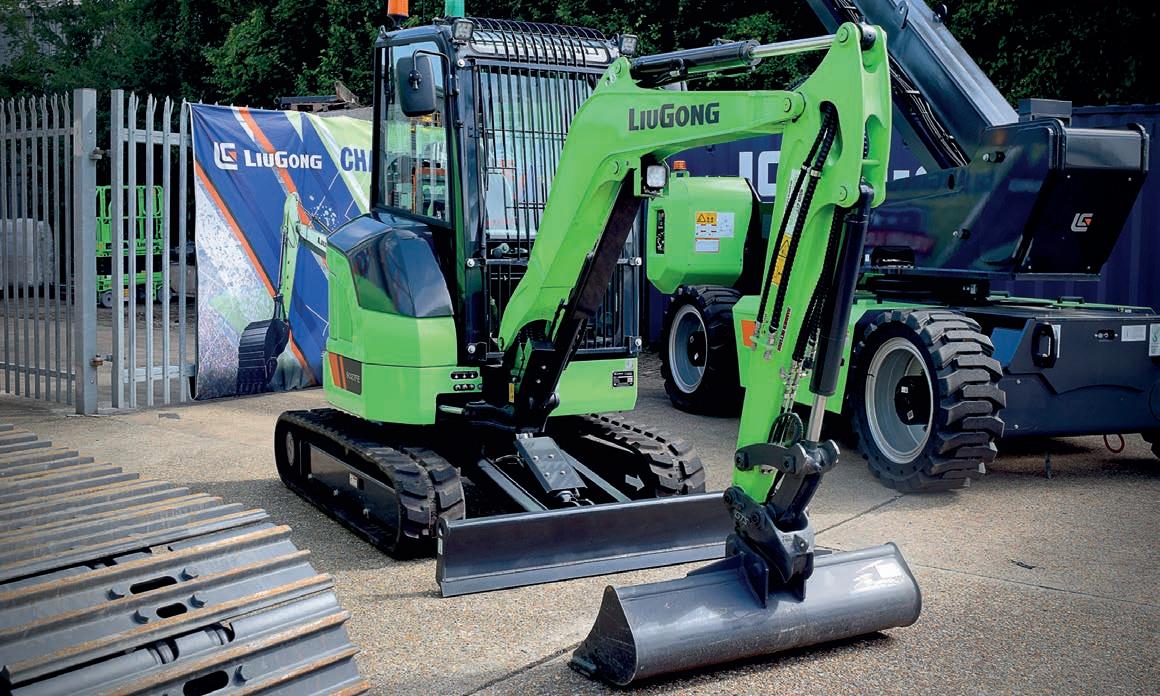
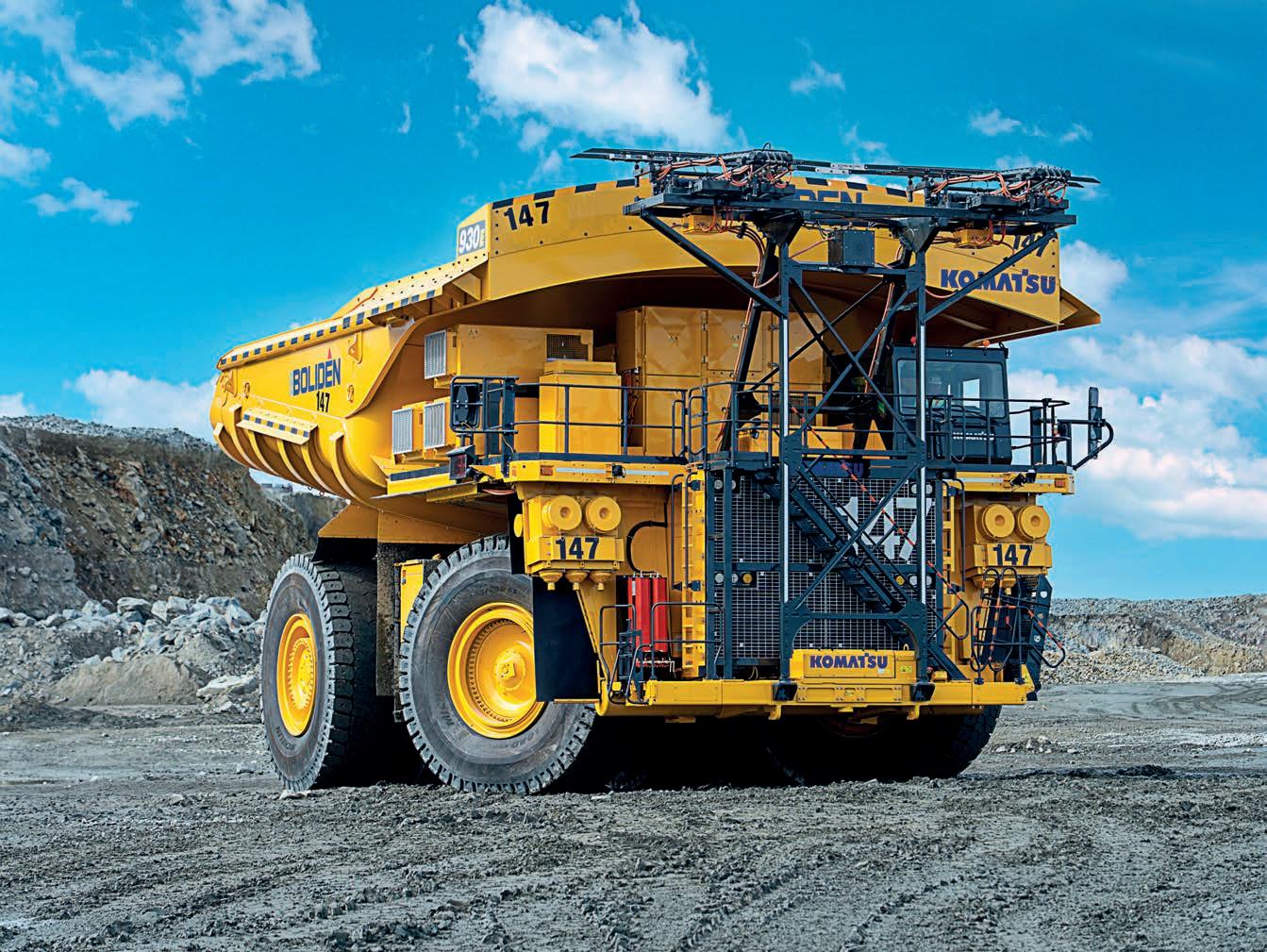
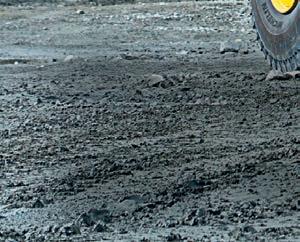
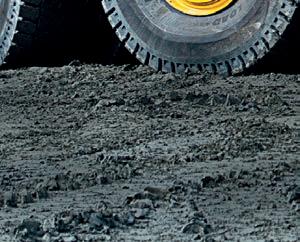

Hauler rebuilds are an increasingly popular option for aggregate producers, while the value of job-site demonstrations is clear for one leading manufacturer.
Volvo Construction Equipment (Volvo CE) dealer Babcock has completed its rst articulated hauler rebuild in South Africa. Speaking after the milestone was reached, Volvo CE service market manager for Africa Anders Eriksson explained why more eet owners across Africa are turning to machine rebuilds as a smart, sustainable way to maximise value and embrace the circular economy.
“Earlier this year, in South Africa, our dealer Babcock completed its rst full rebuild of a Volvo A40G articulated hauler, stripping the machine to the chassis and building it back to Volvo standard with a new powertrain. It’s a signi cant step – not just for Babcock, but for the many contractors and eet operators across Africa who are starting to look at their machines differently,” Eriksson said.
“Instead of asking, ‘when should I replace this?’, more and more customers are asking, ‘How much more can I get from it?’
“And, increasingly, the answer is,‘quite a lot’, especially with a Volvo-certi ed rebuild.”
Eriksson noted that the rebuild process is about protecting an original investment. You already own the asset. You know its history. And with a rebuild, you can restore it
to a high-performing, reliable state, without the nancial burden of buying new or even used equipment.
“For our customers across Africa, that’s an appealing proposition,” he said. “It lowers your total cost of ownership, reduces downtime, and helps you get more value from every machine in your eet. Rebuilt machines typically bene t from lower depreciation, more favourable insurance costs and, thanks to the known history, more predictable operations.
“For many businesses, especially in today’s economic climate, that can make a serious difference.”
Asked about the right time to rebuild, Eriksson said there is no single answer.
“The decision depends on the application, the environment and the maintenance history of the machine. But, in general, we see machines become eligible for rebuild between 10,000 and 20,000 operating hours,” he said. “Before any rebuild, our trained Volvo technicians carry out a detailed health check of the machine. From there, we work closely with the customer to recommend the right scope of work, whether that’s a powertrain overhaul or a full-scale rebuild with structural restoration, a renewed cab, and retro tted upgrades.
“With proper planning and scheduling, a typical rebuild takes around 12 weeks. We ensure all components and parts are ordered in advance, so there are no surprises or delays once the machine is in the workshop.”
Eriksson said there are some common misconceptions regarding machine rebuilds.
“When completed to Volvo factoryapproved standards, rebuilt machines deliver excellent productivity and uptime,” he said.
“You’re not extending a machine’s life by simply xing or replacing a few components; you’re proactively restoring it to top performance – and often upgrading it in the process.
“Just as importantly, rebuilds reduce the risk of unplanned failures. When a rebuild is complete, customers have peace of mind. The machine is known, serviced and backed by a warranty on all major components. And because the rebuild is planned, site teams can schedule around the downtime instead of reacting to it.”
Eriksson said environmental bene ts of rebuilds are also gaining attention, not just in Europe, but also in Africa. By reusing large structural components and restoring major systems, rebuilds dramatically reduce the energy, raw materials, and transport emissions associated with new equipment.

“To give just one example: rebuilding a used engine saves around 56 per cent in CO2 emissions compared to producing a new one. For a transmission, that gure is closer to 60 per cent. And when you consider how much copper, aluminium and bronze is built into every large machine, the resource ef ciency of a rebuild becomes even more compelling,” he said. “This matters for customers facing increasing pressure to report on sustainability performance or align with ESG [environmental, social and governance] goals, particularly in mining, infrastructure and public-sector projects.”
Eriksson said Volvo CE is seeing increased interest in rebuilds throughout Africa and the Middle East. Articulated haulers, wheeled loaders and large excavators are especially well suited for rebuilds – not only because of their durability but because the cost of full replacement can be signi cant.
“What’s even more encouraging is that many customers who try a rebuild once come back,” he said. “They see the bene t –nancially, operationally and environmentally – and begin to integrate rebuilds as a standard part of eet management strategy.
“With trusted Volvo dealers like Babcock now delivering rebuilds locally, customers in South Africa and beyond can access this service closer to home, with full transparency and support. And we’re proud to support this shift, because when a machine still has more to give – and the right partner is there to help extend its life – rebuilding isn’t just an option; it’s the right thing to do.”
Power-agnostic hauling
Komatsu, in collaboration with Boliden, has started eld trials for the rst diesel trolley truck in its new series. The Komatsu Power Agnostic 930E truck was of cially deployed on April 23 at Boliden’s Aitik mine in Gallivare, Sweden, marking a major step forward in the journey toward decarbonising surface mining operations.
Unveiled at MINExpo 2024 in Las Vegas, the Power Agnostic 930E haul truck garnered signi cant attention for its modular, future-

forward design. The truck displayed on the show oor was earmarked for Boliden’s Aitik copper mine, marking the rst truck to undergo site testing. Now operating at one of Europe’s largest and most productive openpit copper mines, this next-generation haul truck is set to undergo a 12-month eld trial.
Built on Komatsu’s new modular platform, the Power Agnostic 930E offers exibility and future-proo ng. The power-agnostic platform enables customers to begin with diesel power and later transition to alternative energy sources such as battery-electric or hydrogen fuel cell technology, depending on their operational needs, technology readiness, and pace of decarbonisation efforts. The integration of diesel trolley assist functionality further enhances performance by reducing fuel consumption and emissions, while paving the way for an electri ed mine.
“Integrating the Power Agnostic 930E into our eet re ects Boliden’s ambition to be at the forefront of sustainable mining,” Boliden senior project manager Jonas Ranggard said.
“Partnering with Komatsu on this pilot helps us explore innovative solutions that align
The Komatsu Power Agnostic 930E haul truck garnered significant attention for its modular, futureforward design.
LEFT: Machine rebuilds can bring older equipment into a condition that is as good as, if not better, than when it was new.
RIGHT: The first articulated hauler rebuild completed by Babcock in South Africa.
with our climate goals while continuing to deliver productivity and performance. We see great potential in this technology and look forward to where it can lead us next.”
As a founding member of Komatsu’s Greenhouse Gas Alliance, Boliden is reinforcing its commitment to a sustainable future. The upcoming trial will enable Komatsu and Boliden to gather detailed operational insights and lessons to advance haulage decarbonisation efforts further.
“This is more than just a technical achievement; it’s a meaningful step forward in our joint commitment towards zeroemission mining,” Komatsu Europe senior mining manager Jeroen De Roeck said. “By commissioning the rst diesel trolley truck in our Power Agnostic series at Boliden’s Aitik Mine, we are turning vision into reality. Our partnership with Boliden is a shining example


of how collaboration can drive sustainable innovation in mining.”
The lessons from this eld trial will play a critical role in guiding future advancements in Komatsu’s power-agnostic line-up. This will support the companies’ shared ambition to decarbonise mining operations and drive progress toward a lower-emission future.
Rokbak reins on Spanish plains
By showing the Rokbak RA30 articulated hauler in action on rough terrain, heavy equipment dealer DIR has sparked growing demand among construction and quarrying rms in Spain, proving that performance, not promises, sells trucks.
When construction and quarrying companies look for new equipment, they want more than technical speci cations – they want proof. This focus on tangible results is precisely what motivated DIR, Rokbak’s recently appointed dealer for Spain and Portugal, to take a bold, hands-on approach: bring the Rokbak RA30 articulated dump truck (ADT) directly to the region’s toughest job sites and let the hauler speak for itself.
“We wanted to respond to a growing need in the Spanish market for reliable, highperformance articulated haulers,” DIR chief executive of cer David Iglesias said.
“Customers want to see trucks in real job-site conditions, not just specs on paper. With the RA30, we knew we had something worth showing.”
DIR’s demonstration programme was anything but theoretical. The team selected challenging earthmoving and quarry sites, environments where productivity, manoeuvrability and durability are pushed to the limit. Steep inclines, loose aggregate and muddy, uneven terrain were all part of the test. The 28-tonne RA30 consistently maintained traction and stability, loaded
or unloaded, and did so without a single performance-related issue.
“Customers consistently pointed out the comfort of the cab, the smooth ride and the intuitive controls,” David said. “But, above all, they appreciated the hauling power and how well it handled dif cult ground. It’s a truck that just keeps going.”
DIR didn’t shy away from direct competition. In several demonstrations, the RA30 was tested side-by-side with other leading ADTs. Customers observed that Rokbak matched or outperformed competitors, particularly in operator comfort, simplicity and fuel use. The value-for-money ratio was clear and, for many, decisive.
“In terms of fuel consumption, the RA30 impressed,” David said. “Real-world data showed better-than-expected results compared to previous-generation haulers and some current competitors. This was one of the key decision factors for customers.”
Feedback from operators and technicians was equally positive regarding maintenance. The RA30’s design prioritises accessibility and straightforward daily checks, with no unnecessary complexity.
“Technicians found everything easy to access and praised the clarity of the daily checks,” David said. “The design is clearly made with real-world service in mind.”
A signi cant factor in building customer con dence has been Rokbak’s membership of the Volvo Group.
“Rokbak’s connection to the Volvo Group signi cantly boosts customer trust,” David said. “It reassures buyers that this is not just another hauler, but one backed by a global name in reliability and after-sales support.”
Perhaps the most telling outcome of DIR’s demo initiative is the conversion of sceptics. Several customers who were initially hesitant made the purchase decision
after seeing the RA30 operate live on their own sites.
“One client said, ‘I needed to see it in my pit, with my material – and it delivered,’” David said.
The market’s response has been swift and positive. The demo unit itself was sold before all planned trials were even completed, a clear sign of growing trust in the product and brand.
Awareness and interest in Rokbak are said to have increased substantially as a result of these hands-on experiences.
“Based on feedback, the RA30 now stands as one of the most competitive articulated haulers in our market segment. It’s no longer the ‘newcomer’, it’s a real option for serious work,” David said.
Looking ahead, DIR is preparing to introduce the larger 38-tonne RA40 demo unit, targeting quarrying, mining and large infrastructure projects. Expectations are high that this model will open new opportunities for Rokbak in Spain.
To companies unfamiliar with Rokbak or hesitant to move away from more established brands, David offers simple advice.
“Come see the truck in action. Talk to customers who have it,” he said. “Rokbak offers performance, reliability and support. Plus, it’s backed by Volvo. Give it a chance.”
Rokbak regional sales manager for EMEA Paul Culliford echoed that sentiment.
“At Rokbak, we believe in earning trust the hard way – by showing up, working alongside our customers and delivering on our promises,” he said.
“The success of our partnership with DIR and the enthusiastic response to our demo programme in Spain prove that when customers see Rokbak in action, they see a hauler that’s as down-to-earth and dependable as the people who run it.” AB

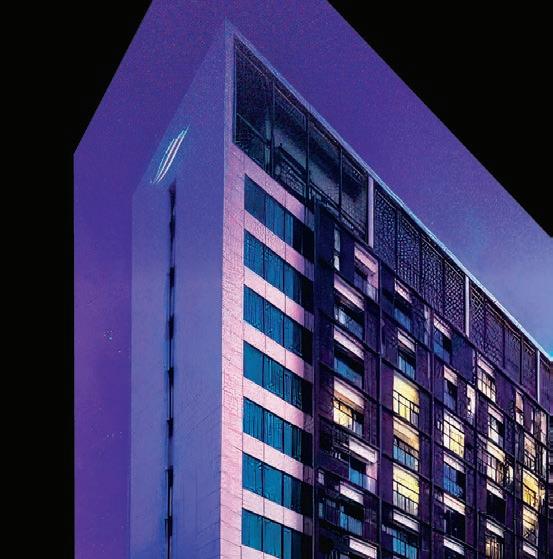








From demonstrated results for customers to expanding distribution networks and new appointments, the crushing and screening sector is full of new updates.
In 2010, Spain was a hive of activity. Rafael Nadal claimed Wimbledon, Spain conquered the world in the FIFA World Cup, and Barcelona was no exception as the city celebrated Barcelona FC becoming Spanish champions once again in LaLiga.
It was also the year that ADEC Global was founded as a waste materials processing company, specialising in construction materials and eventually incorporating steelworks materials.
“We convert waste materials that used to end up in land lls into valuable products,” ADEC Global operations manager Maria Vazquez said.
In the subsequent decade and a half, ADEC Global has become a major name in Spain’s recycling sector, in part due to the support of Kleemann, a company with expertise in processing highly abrasive slag.
ADEC Global processes around 500,000 tonnes of material, which includes a signi cant amount of black slag contaminated with steel. The company owns 11 Kleemann plants, including a MOBIREX MR 130 PRO, which supports its quarrying services to produce aggregates for the concrete and cement industry.
At the heart of the ADEC Global is the impact crusher MOBIREX MR 110 EVO2 and coarse screening plant MOBISCREEN MSS 802 EVO. This particular plant has been at ADEC Global since 2018 and has notched more than 10,000 operational hours. This combination works to process slag into asphalt while ensuring the separated iron components can be returned to foundries.
ADEC Global worked closely with Kleemann and local Kleemann dealer EMSA to tailor an ideal solution suited to the recycling application.
“Together with Kleemann and EMSA, our local contacts for Kleemann plants, we have developed an ideal process to tackle this demanding task,” ADEC Global managing director and founding partner Fernando Hernandez said.
“Wear parts were a real challenge: how could the impact bars withstand the abrasive material and achieve a long service life without breaking? How could we make the process safer? In the end, a solution was found in close collaboration with Kleemann that is economically viable despite the challenging material.”
The performance of the MOBIREX MR 110 EVO2 and MOBISCREEN MSS 802
EVO has impressed many of the ADEC Global employees.
“There are very few machines out there that can withstand this extremely abrasive material,” ADEC Global machinery and logistics manager Oscar Hernandez said.
“The slag contains iron deposits that are broken down during the crushing process. Even then, the Kleemann impact crusher remains steadfast. I don’t know of any other plant that can handle that.”
This Kleemann plant is capable of processing feed material up to 200mm and producing up to 200 tonnes per hour at maximum capacity. The plant is also equipped with a magnetic separator, which splits the metal from the slag in the processing stage, and an overload system, which protects the crusher when material or foreign objects jam the crusher. This is coupled with low fuel consumption, with the Kleemann plant consuming 19 litres per hour.
“The plants we had in the past consumed signi cantly more than that. Here, the dualpower drive gives us the option of operating

the plant with electricity in the future, which means zero CO2 emissions locally,” Hernandez said.
“Without this high-performance impact crusher, the entire process wouldn’t work.”
Metso broadens footprint
Metso has expanded its presence within the construction, aggregate and contractor sectors of the Caribbean and Latin American markets.
The original equipment manufacturer (OEM) has signed a distribution agreement with Millennium Machinery Parts and Service Corp.
The agreement will see Millennium represent the Metso line of products in key territories, including the Bahamas, Turks and Caicos, British Virgin Islands, US Virgin Islands, Dominica, Granada, St. Lucia, Bonaire, Aruba, Curacao, Trinidad and Tobago, Suriname, Guyana, French Guyana, Ecuador and Panama.
“We are proud to welcome Millennium as part of our distribution network,” Metso director of distributor management and organisation (South America region) Federico Villalba said. “Millennium brings extensive knowledge and expertise in the market.
“With a strong focus on providing dedicated customer support and tailored solutions, we are con dent they will deliver the added value of our products to all customers. This partnership marks an exciting step in expanding our support to our customers.”
Millennium Machinery Parts and Service Corp president Robert Valdes believes the partnership will bene t customers with enhanced support and a broader range of tailored equipment and services.
“We are very proud to announce the addition of the Metso line of products for the construction, aggregate and contractor business segments,” Valdes said.
“We will be supporting sales for new and used machinery as well as technical support, spare parts and wear items.
“This partnership enables us to offer our customers access to top-tier products and technologies, combined with our local expertise and commitment to service excellence.”
This is one of several key dealer announcements Metso has con rmed in recent times, including ICM Solutions’ move into Arizona in the US.
ICM Solutions acquired the crushing business from Empire Southwest, which meant its authorised distribution sales and service territory with Metso now includes Arizona alongside Utah, southern Idaho, Nevada, and northern California. It follows ICM Solutions’ acquisition of Compass Equipment in April to bolster its presence in the western US.
Metso vice president of Americas distribution management Steve Cianci said the strategic collaboration marks a signi cant step in strengthening Metso’s distributor network.
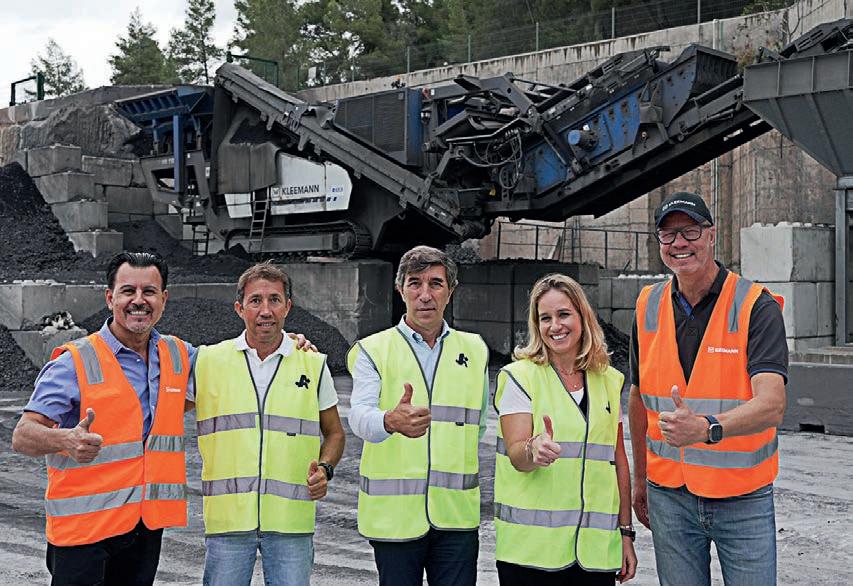
“We are thrilled to see ICM Solutions’ continued investment and commitment to the Metso brand by expanding their operations and in uence into the Western United States,” he said. “This acquisition strengthens our partnership and enhances our ability to deliver exceptional service to our customers across a broader territory.”
The announcement means ICM Solutions will be responsible for supporting industrial, crushing, and mining customers throughout Arizona.
“ICM is thrilled to add Arizona to its existing Metso territory. We are committed to a seamless transition for Empire Southwest customers and will maintain the highest level of standards these customers have come to expect,” ICM president Scott Gardner said.
“This acquisition allows us to deepen our relationships with customers in Arizona and provide even greater value through ICM’s resources, expertise and dedication.”
Superior Industries adds leadership Superior Industries has con rmed Kristin Sweeney will join the US-headquartered manufacturer and supplier as its director of sales for the company’s turnkey plant and construction management division.
Sweeney has had an extensive career, with more than 18 years in the aggregates sector, including roles in engineering, operations and sales. Her background includes positions with US Aggregates, Pennsy Supply, and Oldcastle, where she managed multi-million-dollar projects.
Sweeney’s appointment marks the continued expansion of Superior Industries’ construction management division. The company has invested heavily in this area to support dry bulk producers and material handlers across every project stage.
The construction management division at Superior Industries has supported customers across all stages of complex project processes, including initial design and engineering through fabrication, construction and start-up.
Superior Industries president Jason Adams said Sweeney will bring valuable experience to the team.
“Kristin has walked in the boots of our customers,” he said. “Her unique blend of
operations, engineering and sales experience means producers gain a partner who understands their challenges and can deliver projects that perform reliably.”
Great Britain calling for MAGNA
Terex’s newest brand, MAGNA, has unveiled its new distributor for Great Britain as it continues to expand its presence in the global aggregates sector.
Blue Machinery has signed a distributor agreement with MAGNA, which will see Blue Scotland, Blue Central and Blue Southern represent the brand’s product range in their territories. Additionally, Blue Spares has also been named as the “authorised supplier of genuine MAGNA OEM parts”.
“We are thrilled to appoint Blue Machinery as our distributor for Great Britain, and rst in Europe,” MAGNA business line director Neil McIlwaine said. “The group has displayed over many years an unrivalled level of support to material processing customers, most notably in the crushing, screening and conveying industries.
“MAGNA will bene t from regional expertise in both sales and support, ensuring our end users have the best service and support available when required. With a comprehensive product portfolio aimed at larger volumes and higher throughputs, Blue Machinery will help us deliver solutions to this segment of the market.”
MAGNA is Terex’s range for high-capacity crushing and screening equipment, designed especially for customers who work with larger volumes or output levels. The range includes large-format crushers, jaw, cone and impactors, and screening solutions ranging from horizontal screens, trommel screens, scalping screens, and more.
“We are delighted to further strengthen our relationship with Terex through the distribution of the new MAGNA range,” Blue Scotland managing director Austin Carey said. “This marks an exciting new chapter in our collaboration and allows us to provide our customers with access to a truly premium line of high-capacity equipment.
“We’re excited to introduce customers across Great Britain to the MAGNA range ... showcasing its capabilities in highperformance material processing.” AB
Companies are increasingly investing in drill rigs and rockbreakers within the quarrying and aggregates sector with positive results.
Collins Earthworks has earned its reputation as a capable operator on some of the biggest and most challenging earthmoving projects in the UK.
A fundamental part of its recent success has been the 2023 purchase of the Ball Eye Quarry, near Cromford in the Peak District in Derbyshire. The famed quarry was once a hive for the extraction of lead, uorite, baryte and limestone, but had fallen by the wayside when it was abandoned in 2014.
“The purchase of the Ball Eye quarry was of strategic importance for us. Owning a quarry gives us the opportunity both
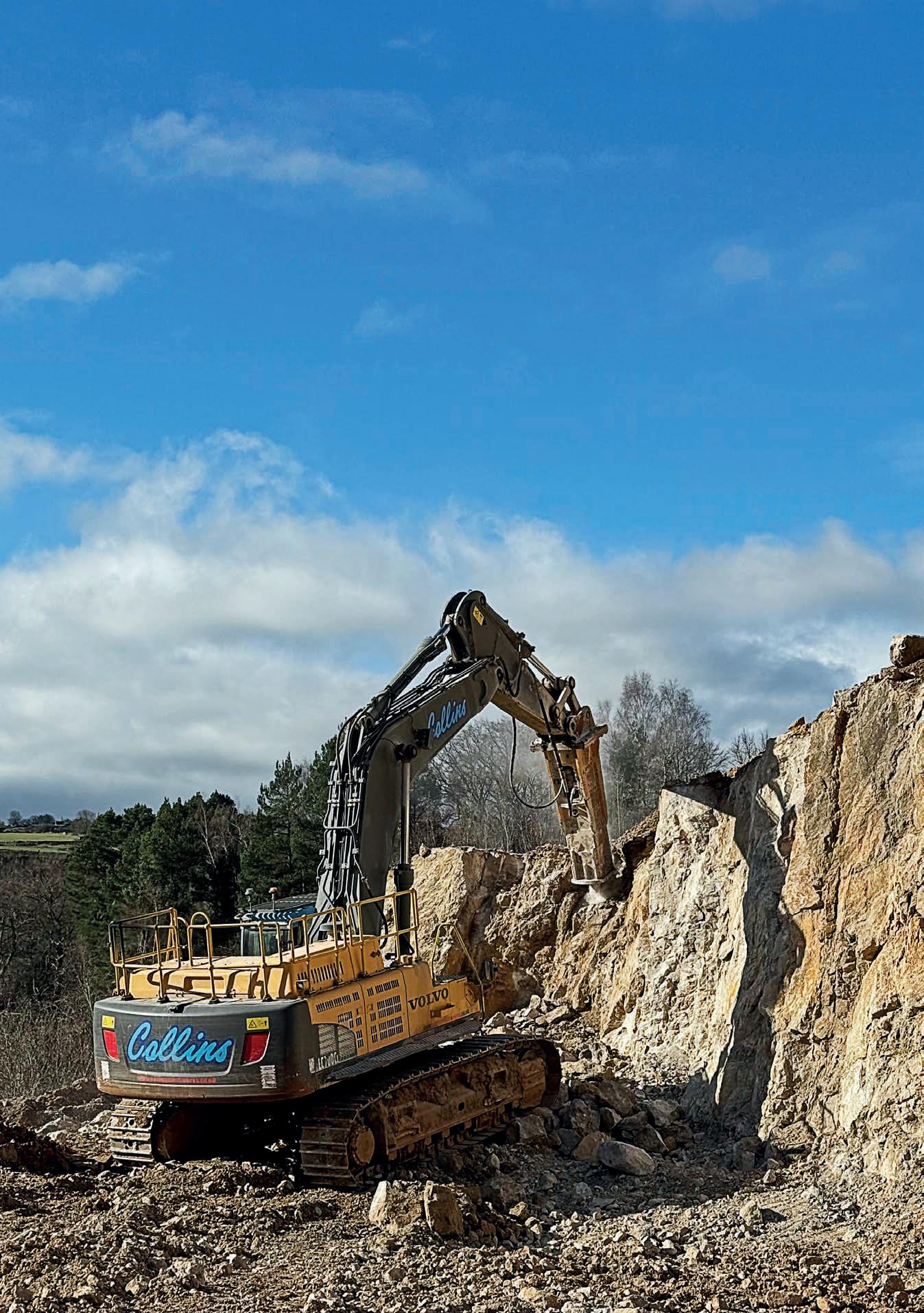
to obtain high-quality aggregates for our projects and to supply them to our customers through the transport division,” Collins Earthworks chief executive of cer David Collins said.
The UK-based operator was determined to restart operations at the quarry. Since taking it over under Collins Earthworks, the quarry has become known for its high-quality limestone aggregates.
The company has taken a sustainable approach to developing the quarry including investing in a eet of Volvo FMX electric vehicles, off-grid rapid charging stations and numerous other initiatives.
The UK-based producer has also invested in a portfolio of Indeco demolition hammers from long-standing distributor Derek Fitzgerald Plant in Leicestershire. Collins
Earthworks’ portfolio includes a range of Indeco demolition hammers ranging from small HP 621/700 versions to the medium and large HP 1500, HP 2500, HP 5000 and HP 7000 models, up to the giant HP 12000.
A key feature of the Indeco hammers is the automatic variable blow technology that adjusts the power and the frequency of the blow to match the material’s hardness.
The HP 12000 has been in constant use at Ball Eye Quarry since it arrived.
The largest Indeco demolition hammer plays a key role in primary and secondary pulverising of limestone at the quarry while mounted on a Volvo EC700 excavator. Collins Earthworks has estimated that the hammer works for around eight hours a day on about 1700–2000m³ of material.
“We are very happy with our HP 12000. It works non-stop with no problems at all. No hammer from any other manufacturer compares to it in terms of power and production capacity,”Collins said. “It amazes me that every rock quarry in Britain doesn’t have one.
“We now have a eet of Indeco equipment, and we are very satis ed with its performance at the various worksites.
“They have proved to be hard-wearing and ef cient with low maintenance requirements, which means less time lost in repairs and more time dedicated to productive work. When assessing demolition equipment, we look for machinery that can ensure high productivity with minimum downtime – and Indeco meets these expectations.”
Bulls eye for Luck Stone
Epiroc engaged Luck Stone to launch the SmartROC D65 drill rig in the US aggregate market, which the manufacturer has heralded as a rst for the worldwide quarry sector.
The two companies, in partnership with James River Equipment, will work together long-term in the project, which will include local service, training and technical support.
Luck Stone director of engineering Chuck Stilson said the company is committed to investing in autonomous technology.
“Our philosophy has always been about doing the work in the best possible way,” he said. “Partnering with Epiroc on autonomous drilling aligns perfectly with that vision.
“We’re not only improving productivity and safety, we’re providing new opportunities for our associates and rethinking what’s possible in aggregates.
Epiroc and Luck Stone will share data from the performance of the SmartROC D65 MKII, which both said will deliver broader insights for the industry relating to automation.
Established in 1923 by Charles Luck Jr, the Luck Stone, part of Luck Companies,

has several operating locations, including Virginia, North Carolina, South Carolina and Georgia. In recent times, Luck Stone has been a proven adopter of autonomous technology, including autonomous plants and autonomous haulage systems (AHS).
Earlier in the year, Luck Stone marked one million tonnes hauled autonomously at its Bull Run Quarry in Virginia. Bull Run Quarry was one of the rst in the aggregates sector to deploy Caterpillar’s autonomous Cat 777 trucks with a full autonomy technology stack and site integration services.
At the announcement, Luck Companies president and chief executive of cer Charlie Luck said the milestone reaf rmed the company’s belief in autonomous technology.
“This autonomous journey with Caterpillar has been one of the most powerful and
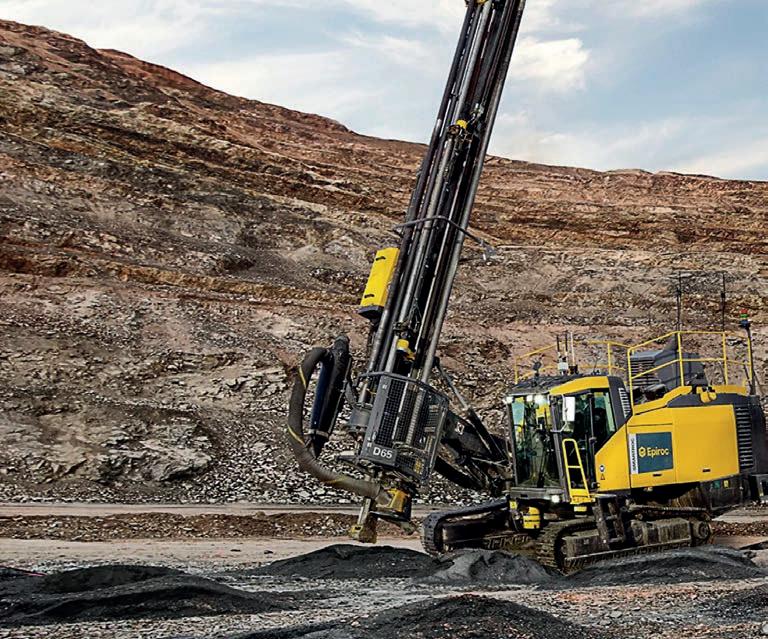
The HP 12000 plays a key role at Ball Eye Quarry.
transformative projects in our 100-year history. What once felt like a dream at our Bull Run site is now a reality, thanks to the trust, collaboration and shared commitment between our teams,” he said.
“Reaching the one-million-tonnes-hauled milestone has engaged every part of our operation, from training and mine planning to operating ef ciency and teamwork, proving that this technology can work, and work well, in a quarry environment. Most importantly, it’s creating opportunities for our associates to grow, lead and be part of something groundbreaking.
“This project is an example of what’s possible when people, purpose and progress come together.”
Now, in partnership with Epiroc and James River Equipment, Luck Stone has expanded its autonomous technology.
The SmartROC D65 MKII features Epiroc’s advanced automation technology, which is capable of supporting complete drill patterns without an operator in the cab. It is compliant with Global Mining Guidelines Group Level 4 standards for fully autonomous equipment.
The SmartROC D65 MKII drill rig is capable of operating under remote supervision through Epiroc’s Common Automation Panel and Link Open Autonomy (LinkOA) platform. The platform also provides data integration and eet management.
“Luck Stone’s leadership and commitment demonstrate that autonomy in quarries isn’t future vision, it’s current reality,” Epiroc USA business line manager Ron Hankins said.
“Our partnership is not about a proof-ofconcept; it’s about meaningful operational gains that the next generation of drilling will bring in the US.” AB



A leading figure in the global o -the-road tyre industry has provided an optimistic sales outlook for a quarrying machine market area that is increasingly embracing sustainability.
BKT (Balkrishna Industries) eld engineering director Piero Torassa said that throughout the 2024–25 nancial year, BKT consolidated its position in the mining and quarrying off-the-road (OTR) tyre segment, which represents a strategic pillar for the company’s growth.
“The year ended with a positive result in terms of both volume and pro tability, con rming the soundness of the path taken and the company’s ability to meet the needs of a highly challenging industry. Overall, for the 2024–25 nancial year, the OTR sector accounted for almost 37 per cent of the company’s total sales,” Torassa said.
“Major factors that contributed to these results include the expansion of manufacturing capacity, with new production lines dedicated to large-sized OTR tyres, and intensive research and development [R&D] efforts aimed at ensuring that products are increasingly high-performing, durable and safe, with a particular focus on developing advanced compounds and enhanced tread design.
“Other factors include eld performance tests and the development of tailored products for extremely challenging conditions, as well as a growing focus on sustainability and innovation. These two drivers guide the development of more ef cient processes with a lower environmental impact.”
Looking ahead to 2026, Torassa offered a positive outlook. He said global demand for tyres in mining and quarrying activities
continues to grow, driven by expanding extraction activities and infrastructure projects.
“BKT’s response to this growth is continuous investments in research and development, focusing on technological innovation and advanced solutions, such as sensors for performance monitoring,” he said.
Torassa said BKT’s geographic expansion strategy aims to strengthen the company’s presence in key markets, such as North America and Europe, while the Asia-Paci c region is also generating increasing demand for tyres.
“BKT’s next goals will focus on sustainability by developing more ef cient and environmentally friendly tyres, and on supporting global infrastructure growth, particularly in emerging markets, as a lever to further stimulate demand,” he said,
For the mining and quarrying industry, which typically involves highly complex operations, BKT has speci cally designed a highly specialised tyre range to meet the speci c needs of heavy equipment, such as rigid dump trucks and loaders. In these environments, where traction, stability and resistance are crucial for safety and ef ciency, the EARTHMAX tyre range, with its diverse patterns, is designed to meet even the most demanding applications.
EARTHMAX SR 45 H2 is an all-steel radial tyre suited to all operations requiring exceptional traction and stability. The E-4 tread depth increases durability, while the tread pattern reduces vibrations, improving operator comfort.
The all-steel structure with multi-layer belts helps to ensures resistance to cuts and punctures, as well as an extended lifecycle. The tyre is available in several compounds: standard, cut-resistant, or for long-haul cycles. EARTHMAX SR 459 is an all-steel radial tyre for rigid dump trucks operating in open-pit mines and quarries. Its symmetrical design facilitates the mounting process.
Engineered for durability, EARTHMAX SR 459 features extra deep tread, the deepest among all BKT tyres of the same size. In addition, the multi-ply steel belts offer superior protection against impacts and rock penetration. The tread depth is designed to provide optimal casing protection without compromising tonne-kilometres-per-hour (TKPH) values, promoting a long tyre life. The closed pattern with multiple lugs maximises ground contact, providing strong handling and stability, as well as operator comfort. Ultimately, BKT said, EARTHMAX SR 459 stands out for its claimed excellent traction on any terrain, even on muddy surfaces.
BKT’s EARTHMAX SR 46 is designed for rocky and abrasive environments. This tyre is said to offer excellent resistance to cuts and tears along with a longer life cycle thanks to its all-steel casing and belts. According to BKT, the tread, featuring block lugs and a longitudinal groove, delivers increased productivity and performance.
Latest BKT innovations include the EARTHMAX SR 47 TP, an all-steel radial tyre for rigid dump trucks speci cally designed for extreme conditions that require maximum traction and puncture resistance. The deep E-4 tread allows for a long lifecycle even on long hauls, reducing downtime. Ideal for muddy or slippery terrain, it is available in standard or cut-resistant compound.

BKT Europe has recently appointed Paolo Mantovani as head of original equipment manufacturer (OEM), industrial and OTR Europe, and said the move is a “strategic milestone” that accelerates the business’ journey to become a top-tier global player in the OEM market.
With more than 15 years of commercial and strategic experience across the tyre industry, Mantovani has held key roles in the passenger, truck, retread and off-road segments throughout Europe. His strong business acumen and deep understanding of OEM requirements will, according to BKT, be instrumental in driving the company’s growth and expansion in the industrial and OTR sectors across its key markets.
Following its successful participation at bauma 2025 in Munich, Germany, where it showcased agship OTR products and its new Tyre Pressure Monitoring System (TPMS), Triangle Tyre is unveiling additional OTR products in the second half of 2025.
“We are seeing tangible improvements in tyre life and site productivity thanks to a focused strategic approach to tyre management,” Triangle Tyre OTR director Europe Luca Mai said. “End users are enjoying the bene ts of changes in tyre policy that have extended the lifespan of tyres on their machines, signi cantly boosting productivity at their sites.
“These new products are a direct response to our customers’ need for durable, high-performance solutions that reduce downtime and operating costs in harsh and demanding environments."
Recognised as one of China’s largest tyre manufacturers and, according to Triangle Tyre, to be the world’s fourth-largest OTR tyre producer, Triangle delivers solutions for quarrying, mining, construction, port and industrial sectors. Its tyres are trusted by industry giants such as Caterpillar, Hyundai, Sany, CNH, and many OEMs.
The second half of 2025 will see Triangle introduce two new sizes – 23.5R25 and 29.5R25 – to its TB516 PRO E3/L3 range.
This non-directional tread pattern is designed for machines operating on sand and aggregate surfaces, offering a doublemarking option suitable for loaders and articulated dump trucks.
Also joining the range is the new TL538 PRO E4/L4, available in sizes 23.5R25, 26.5R25 and 29.5R25. Compared to the TB516 and TB516 PRO E3/L3, the E4/ L4 version features larger tread blocks, greater tread depth, and enhanced carcass protection. It delivers a deep-tread rock pattern and technology aimed at maximising durability, traction and overall performance in challenging environments.
In the L5 segment, the TL559S range will see the addition of 17.5R25 and 18.00R25 sizes. These tyres are designed with an extradeep tread, damage-resistant buttressed shoulders and sidewalls, and heavy-duty casing construction for greater longevity. Their cut-resistant rubber compounds and radial design help to ensure a smooth ride in abrasive conditions.
For quarry operations, Triangle is introducing the 18.00R25 size in the TB516 PRO range for rigid dump trucks. This tyre features a 150-level tread depth for improved traction and wear resistance in harsh working conditions.
Triangle is also expanding its Giant/Jumbo OTR tyre range by introducing a new generation of products for mining rigid dump trucks (RDTs). New additions include the 27.00R49 TB599 PRO, 46/90R57 and 50/80R57 TB599 A PLUS, and the 46/90R57 TB999A. These OTR tyres are especially recommended for (TKPH) operations. They are designed to t RDTs with payloads of up to 300 tonnes, such as those used in coal and copper mines, and oil sands operations worldwide.
Engineered for ultra-high durability, these new giant tyres feature innovations in tread patterns, rubber compounds, steel cord construction, advanced materials, and structural engineering. They are said to offer enhanced durability, more aggressive tread designs, improved heat dissipation, and the ability to carry larger payloads.
“Demand for premium OTR solutions keeps growing worldwide,” Mai said. “Our investment in cutting-edge products ensures that we can serve customers with a complete, high-quality range backed by expert service and support.”
Established in 1976, Triangle Tyre has signi cantly accelerated its global presence since its 2016 listing on the Shanghai Stock Exchange. Its distribution network spans more than 180 countries, with sales and technical service branches in China, Russia, the US, India, Singapore, Dubai, Panama and Australia, in addition to its Milan of ce serving the European market. The company operates a large manufacturing facility in Huasheng, Shandong Province, producing around 400,000 OTR tyres annually.
Into an AI era
Magna Tyres, an OTR, industrial and truck tyre manufacturer, has launched a new arti cial intelligence (AI)-powered chatbot on its website. This powerful tool is available 24 hours a day, seven days a week, offering instant assistance to customers and prospects worldwide in any language.
The chatbot represents a signi cant step forward in Magna Tyres’ customer service strategy, ensuring visitors receive fast, consistent, and helpful responses, regardless of their time zone, location or language. AB

Volvo R60 rigid haulers at work in a quarry.
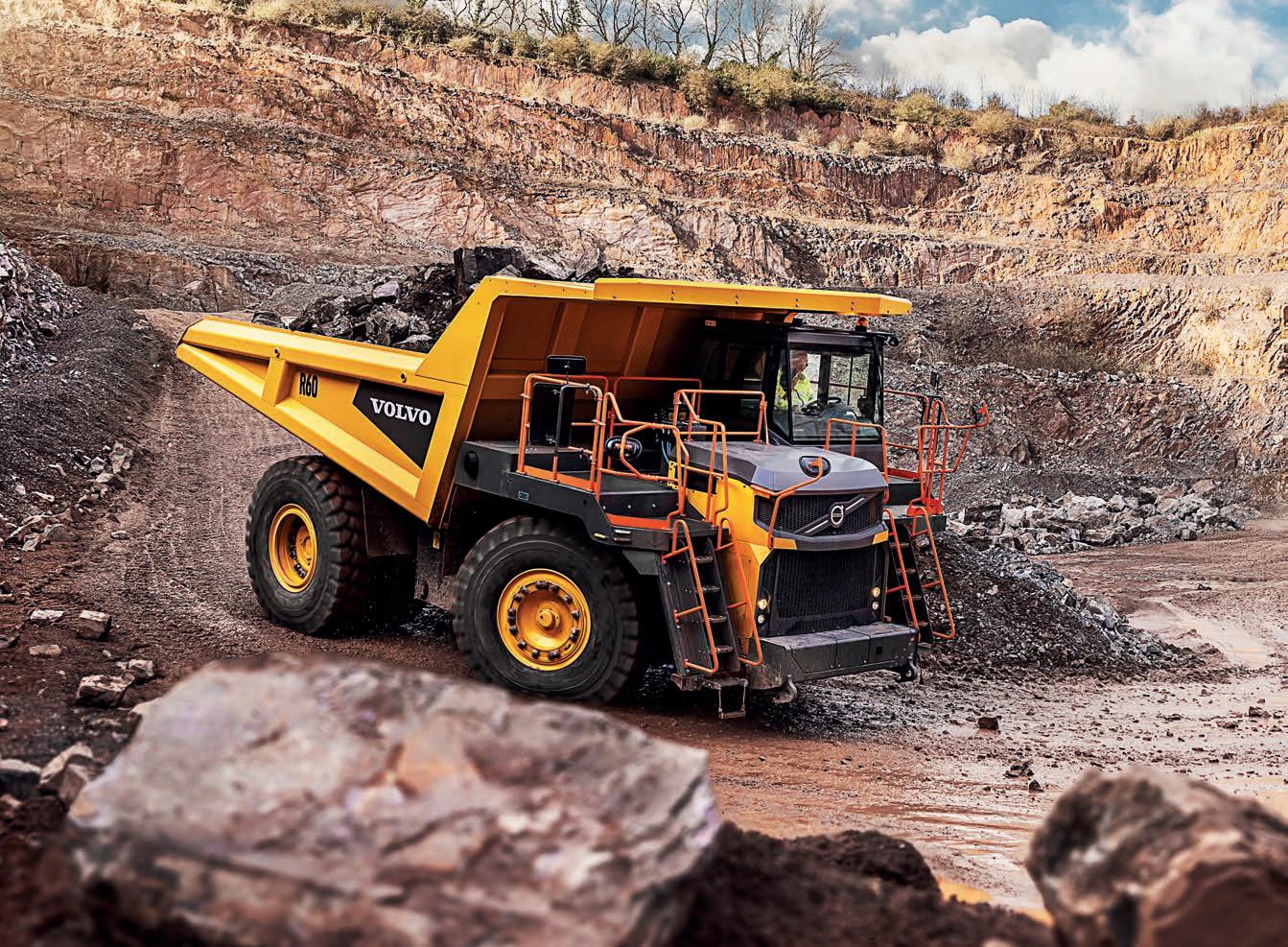


Volvo Construction Equipment has been rolling out its new digital service, Volvo Site Operations, in many key markets following its European launch earlier this year. Aggregates Business looks at the opportunities the new platform o ers quarry and aggregates operators.
Volvo CE site solutions manager Jeroen Snoeck is excited about how Volvo Site Operations can help elevate the operations of the company’s quarrying and mining customers to new heights.
He told Aggregates Business that the solution was piloted at Swedish and German quarrying customer sites, along with other industry customer sites, from early 2024 before its of cial launch at bauma 2025 in Munich, Germany, in April. Now rmly embedded at those quarry pilot customer sites, Volvo Site Operations is also being initially made available to quarrying and mining customers in European and Oceania markets.
“Our current solution is Volvo Connected Map and Performance Indicator, which uses data from the Volvo Co-Pilot platforms [Dig Assist, Haul Assist, and Load Assist], but we also wanted to get the data from the non-Volvo machines, and Volvo Co-Pilot was not built for that. Customers needed and wanted to get the entire picture,” Snoeck said.

valuable insights to streamline tasks and optimise material movement. This can result in claimed productivity increases of 10–20 per cent. Production dashboards share key information on material movements and fuel consumption, removing the need for paperbased tracking and guesswork.
The service alerts operators in real-time to potential faulty dumps, helping to avoid
“As well as seeing machines going from A to B, quarrying customers wanted to start managing their material ows and stockpiles. As well as Volvo CE and other brands’ loaders and haulers on a quarry site, Volvo Site Operations integrates data from crushers and screeners, conveyors and silos. All those units can measure material volumes, and we wanted to bring all that tonnage information together to enable customers to leverage the data into actionable insights.”
With Volvo Site Operations, machine operators are provided with an intuitive tablet that collects geo-position, load ticket and other data. This information is then integrated with machine and productivity data gathered through a cloud-based solution, consolidating everything into a single, cohesive view. Site managers can monitor machine performance, track material ow and assess CO2 emissions and productivity across each process, enabling them to pinpoint areas for improvement.
Measuring critical parameters in the production ow, Volvo Site Operations offers

costly mistakes and rework. By automating data collection and reporting, administrative burdens can be reduced by up to 80 per cent, according to Volvo CE, simplifying processes, saving time and improving accuracy.
Snoeck said through advanced geo-fencing and asset positioning, Volvo Site Operations enables the real-time mapped tracking of machines and assets across worksites, enhancing situational awareness and supporting operators in making safer decisions.
Alerts notify operators of approaching vehicles, speeding and unauthorised entry zones. Instant communication of important site changes, like speed limits and restricted zones, helps prevent potential hazards. By improving visibility across the job site for operators, site management and visitors, the latter through a smartphone visitor app used by, among others, engineers arriving on-site to carry out machine maintenance and servicing, Volvo Site Operations elevates safety standards.
Volvo CE has estimated that Volvo Site Operations could enable potential fuel savings and CO2 emission reductions of between 10–15 per cent. The map, together with real-time positioning, helps optimise traf c conditions, reduce queues and waiting times to improve productivity while lowering fuel consumption. Accurate CO2 emission measurements from all machines and assets provide insights for eet optimisation. By leveraging data, actionable steps can be taken today to reduce emissions signi cantly.
“Most OEMs have signed up to the AEMP 2.0 standard, which allows us to get data from 120 different brands of machinery. But for the real-time production data, we work with third parties, like Loadrite and Tamtron, that provide weighing systems, and we integrate their APIs [application programming
interfaces] and clouds with our clouds,” Snoeck said.
“Volvo Site Operations is available in two levels: Site Operations Start and Site Operations Advanced.
“The rst level enables machine operators to view the location of other machines on their work site, offering better site safety and coordination. To start accessing and using data from Volvo CE and other machines, you require the Advanced package, and that is charged per asset. We don’t charge visitors for using the visitor app.”
Snoeck said each installation of Volvo Site Operations at a quarrying or mining customer site is not a case of “ icking a switch and it works”, but more of a close collaboration with the customer and their Volvo CE dealer.
“It takes around three to four months to get everyone to buy into it,” he said.
“We work with customers and let them tell us exactly what they are looking for. That’s how we ended up including silos and crushers in the system, given their criticality to material ow.”
Snoeck said Volvo Site Operations can be integrated into a quarry customer’s work site.
“We start by having a meeting where we don’t say much but instead listen to the customer describe their operation. From that, we might identify a key issue or pain points,” he said.
“We come to the next meeting with a proposal saying, ‘what if we implemented it [Volvo Site Operations] like this?’ If the customer likes this, we will go into more detail with one of our engineers and one of theirs about how we’ll set it up. The customer may want to test the solution with just two
or three machines to see how it works before expanding it across their eet.”
Snoeck said Volvo Site Operations has been designed for easy usability.
“You do have to specify material type if there is more than one material in a zone, so a loader operator can identify which they should be loading,” he said.
“If there is only one material type to load from a speci c zone, the system will automatically work with that.”
Snoeck said Volvo Site Operations can also be used to inform a loader operator or haul truck driver about their daily tasks and areas of operation.
“It may be that the site manager has asked an excavator operator to work on several material ows, and the operator can pick the ow he wants to start with. The system will recognise if the excavator operator is digging in the right ows, or if a truck is dumping in the right zone,” he said.
Based on customer feedback, Snoeck said Volvo Site Operations may be further enhanced at some stage by integrating each quarrying and mining customer’s planning systems, enabling them to better direct and monitor load and haul machine operators.
Snoeck said Volvo Site Operations has the potential to grow in key quarrying and aggregates markets.
“I think that the system suits sophisticated markets, such as Europe, Oceania and also North America,” he said.
“It is dif cult to roadmap its take-up. It is down to customer demand.” AB

RJ McLeod has taken delivery of a new order for 16 machines from Develon, formerly Doosan Construction Equipment.
One of Scotland’s largest privately owned civil engineering and building contractors has con rmed a major investment in its eet with the support of Develon.
The new equipment has been supplied by Castle Douglas-based James Gordon Ltd (Gordons), the authorised dealer for the whole of Scotland for Develon. The order comprises 12 new Develon DA30-7 articulated dump trucks (ADTs), along with six crawler excavators, including four DX225LC-7 models, a DX300LC-7, and a DX300SLR-7 super longreach machine.
Acting as both replacement and eet expansion units, the new Develon equipment has joined RJ McLeod’s in-house plant and transport eet, part of the company’s sizable in-house resources, which employ around 450 staff members.

“For more than 70 years, RJ McLeod has excelled in delivering solutions for clients, often in logistically demanding locations,” RJ McLeod company director Jamie Corser said.
“It is essential that the machinery we use is of the highest quality, and we chose Develon because our research showed that this brand of machinery provides the reliability, productivity, lower emissions and reduced running costs that we need.”

Stage V-compliant DC09 9L diesel engine, which provides 276kW of power.
The DA30-7 and DA45-7 6X6 models feature an articulation hinge positioned behind the turning ring, providing equal weight distribution to the front axle, even during maximum steer articulation. This, combined with a free-swinging rear tandem bogie, helps to ensure an equal distribution of weight to each wheel, as well as permanent six-wheel contact and drive, providing equal power distribution and strong performance, particularly on all types of terrain. Collectively, the forward turning point, the unique tandem bogie and the sloping rear frame result in highlevel capabilities in rough and soft terrain.
“We’re delighted to take delivery of these new machines, which are the rst stage of a signi cant investment in our expanding eet,”RJ McLeod plant yard manager Righa Gauld said.

The DA30-7 is one of three models in the ADT range from Develon, comprising the DA30-7 and DA45-7 6X6 models, complemented by a new 4X4 version of the DA45-7. The DA30-7 6X6 model has a payload of 28 tonnes and is powered by the Scania
for its operations.

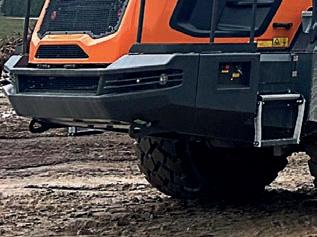

RJ McLeod undertakes contracts throughout Scotland and northern England across a broad spectrum of civil engineering disciplines, with resources spread across Scotland, including the Western and Northern Isles. Specialist areas include work in the energy, roads and structures, marine, infrastructure, streetscaping, waste and ood prevention industries.
to get the best from all who worked for him, and this, along with his business acumen, was instrumental in creating the successful company still ourishing today.
In June 2024, RJ McLeod was acquired by OCU Group, which continues to support the company’s future growth.
Established in 1865, Gordons is a premier distributor of agricultural and construction equipment in Scotland. With six strategically placed depots, the company is committed to providing a fast and ef cient local service for machinery, attachments and, most importantly, the best possible after-sales support. Gordons is now solely responsible for sales and servicing of the Develon crawler, wheeled and mini/midi excavator, wheeled loader, articulated dump truck, dozer and attachment ranges in Scotland and Cumbria in England.
Gordons’ customers bene t from a superb on-site service network, covering everything from emergency repairs to routine maintenance. The company’s factorytrained engineers have extensive hands-on experience in the repair and servicing of all types of plant and machinery.

Roderick John McLeod created RJ McLeod in October 1951. ‘RJ’, as he was affectionately known, is remembered for his ability

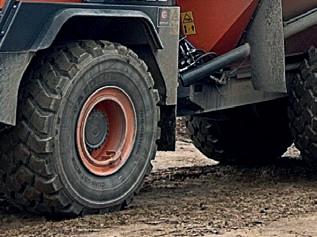
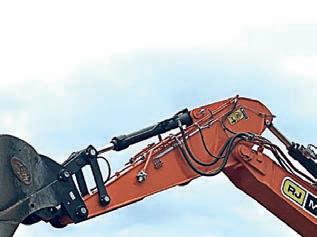
Develon is one of the world’s leading construction, quarry and mining equipment manufacturers, offering a broad selection of products including crawler and wheeled excavators (with operating weights from 1–100 tonnes), wheeled loaders (covering capacities from 1.9–6.4m3), articulated dump trucks (with maximum payloads up to 41 tonnes), compact wheeled loaders (from 3.5–5 tonnes), dozers (up to 15 tonnes) and products with alternative power sources. AB


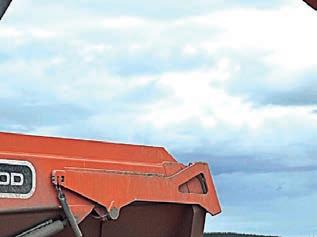
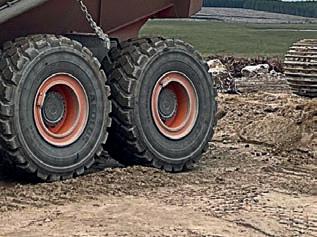
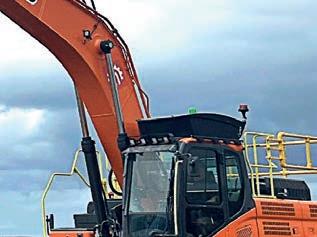



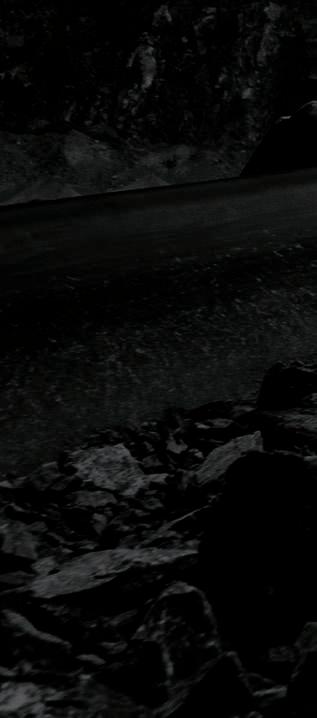





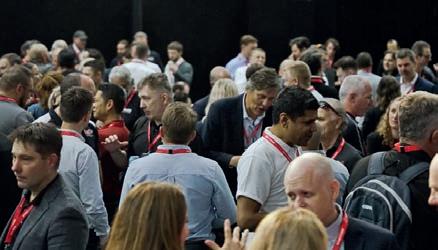








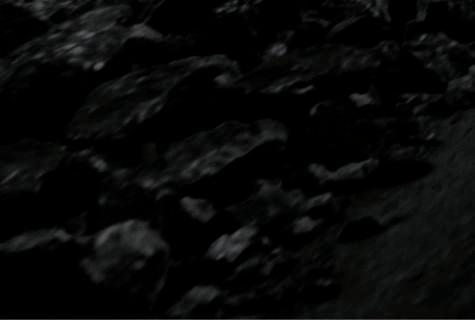























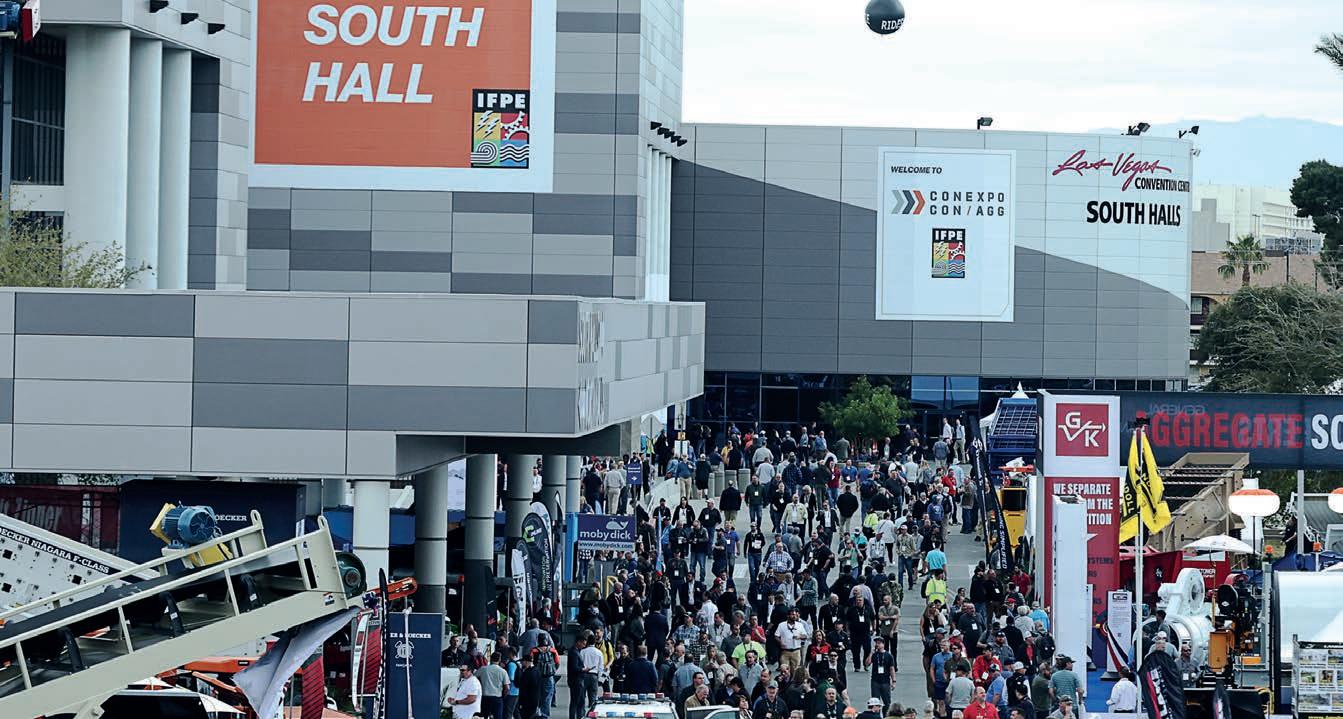

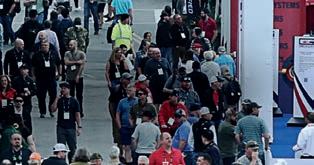
Registrations are open for CONEXPO-CON/AGG 2026, which will be held in Las Vegas, Nevada, in March next year.
Anticipation of CONEXPO-CON/ AGG 2026 continues to build as the major trade show has of cially begun taking registrations.
The show is set to return to Las Vegas, Nevada, from March 3–7, 2026. The show will focus on the major sectors within the construction sector, including the latest equipment, innovations and technologies.
“CONEXPO-CON/AGG is far more than an industry event; it’s the crucible where the future of construction is forged,” CONEXPO-CON/AGG show chair and LBX Company president and chief executive of cer Eric Sauvage said. “For exhibitors, this is a rare and invaluable opportunity to connect directly with thousands of decisionmakers, showcase state-of-the art products to an international audience and gain rsthand insight into the evolving needs of the marketplace.”
“The world’s leading innovators unveil their latest breakthroughs, create meaningful partnerships, and shape the direction of our industry for years to come.
“CONEXPO-CON/AGG is truly an unrivalled platform to demonstrate cutting-edge technology, engage with the brightest minds, and build enduring momentum for lasting success.”
New attractions
Held just every three years CONEXPO-CON/ AGG is a major event for construction industry professionals from all over the world. It showcases the latest equipment, products, services and technologies, along with industry-leading education.
“Attending CONEXPO-CON/AGG provides valuable exposure to any potential new and improved safety-related solutions and resources that can be shared, applied and
implemented in our business,” Payne and Dolan Inc aggregates manager Spencer Johnson said.
“There is a wide array of equipment, manufacturers, products, technology, education and people, and the show is very large, allowing for ample opportunity to explore speci c interests.”
Next year’s iteration will include several innovative additions to the line-up, including the Ground Breakers keynote stage and specialised workshops. This stage will serve as a central forum to spotlight the construction industry’s global in uence. Highlighting emerging factors in construction technology and methodology, will see discussion about key public policies and their implications, as well as solutions for the workforce, including labour shortages. Other key discussion points will include sustainability practices and mental health in the construction sector.
The Women in Construction: EmpowerHER Workshop will be a dedicated event designed to champion the aspirations of women throughout the industry. The workshop will provide networking opportunities and sponsorships that advance women-led construction projects. It will also include panels and keynote addresses from leading industry professionals.
The Small Business Workshop will empower the backbone of the industry and acknowledge the indispensable contribution of small businesses with the workshop crafted to address their unique obstacles. Attendees will be able to take part in networking opportunities and learn about actionable strategies and resources to support their business growth. The workshop has sponsorship options to support smaller enterprises.
CONEXPO-CON/AGG will return to Las Vegas in 2026.
The Shop Talks and Walks Workshop provides practical solutions for everyday operational challenges faced in the sector. This maintenance-centric workshop equips participants with hands-on solutions for daily operational challenges.
“CONEXPO-CON/AGG 2026 is more than a gathering; it’s the launchpad for the next era of construction,” CONEXPO-CON/AGG show director Dana Wuesthoff said.
“This is where construction industry leaders, innovators and visionaries converge to rewrite what’s possible. From groundbreaking technologies to lasting partnerships, every moment at the show is designed to inspire progress, spark new ideas, and propel the construction industry forward.”
CONEXPO-CON/AGG has also created a new cost-effective way for attendees to experience the Las Vegas-based event next year. People can use the code NEWS30 until December 5, 2025 for discounted pricing.
The show will offer early registrants priority access to limited-capacity workshops, hands-on experiences, and exclusive education sessions.
“If you move dirt, lay pipe or build infrastructure, this is your show. Period,” D2 Contracting owner Dylan Mercier said. “Don’t waste time wondering if it’s worth it.
“At CONEXPO-CON/AGG, you’re not sitting in a conference room listening to buzzwords you’re hands-on with machines, tech, and people who do the work.
“One trip out to Vegas could change how you bid jobs, build crews, and run your entire operation. You’ll leave with ideas and connections that will put you miles ahead.” AB
Registrations for the show are available via conexpoconagg.com
































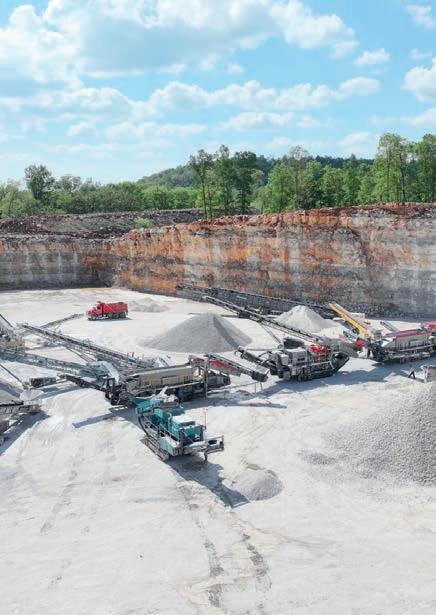

























































MARCH 2026
3–7
CONEXPO CON/AGG
Show producer: Association of Equipment Manufacturers
Show owners: Association of Equipment Manufacturers, National Stone, Sand and Gravel Association, National Ready Mixed Concrete Association
Tel: +1 (866) 236 0442
1–4
National Stone, Sand and Gravel Association Annual Convention 2026
Organiser: National Stone, Sand and Gravel Association (NSSGA)
Tel: (703) 525-8788


MAY 2026
6-9
SaMoTer 2026 (International Construction Machinery Exhibition)
Organisers: Veronafiere in partnership with UNACEA and CECE
Tel: +39 045 11176091
JUNE 2026
23–25
Hillhead 2026
Organiser: QMJ Group
Tel: +44 (0) 115 945 4367
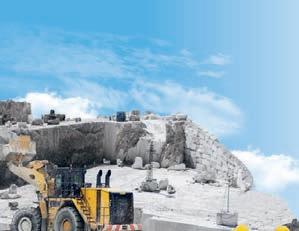
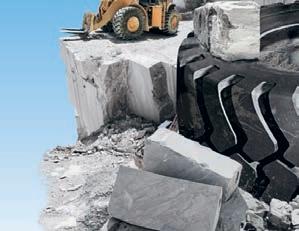


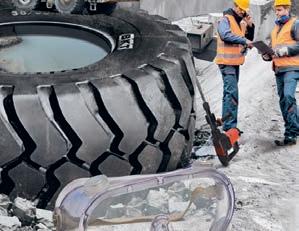
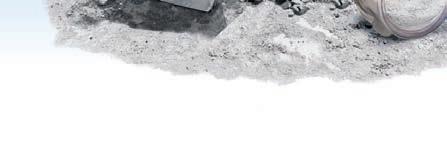
JULY 2026
1–2
PNG Expo
Organiser: Prime Creative Media
Tel: +61 (3) 9690 8766
SEPTEMBER 2026
2–5
steinexpo
Organiser: GEOPLAN GmbH
Tel: +49 72 29 606 0






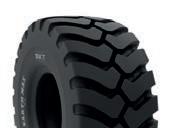

Experience unparalleled tyre performance with BKT’S EARTHMAX SR 49. Designed to equip your fleet of loaders, dozers, low profile dump trucks (LPDT), and load haul dumps (LHD), this tyre is engineered for excellence. With its All Steel radial construction and block pattern structure, EARTHMAX SR 49 delivers unmatched reliability and efficiency, whether on construction sites or in severe mining operations. Say goodbye to downtime—the tyre’s cut and chip-resistant design ensures durability even in the toughest conditions. Trust BKT to fuel your business growth and choose EARTHMAX SR 49 for unbeatable performance and reliability.
















For info: europe@bkt-tires.com










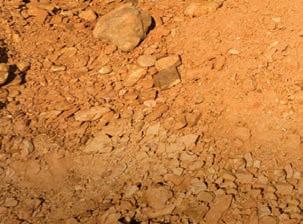




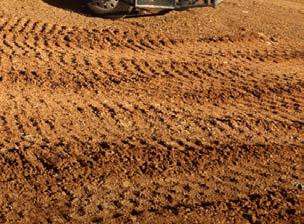


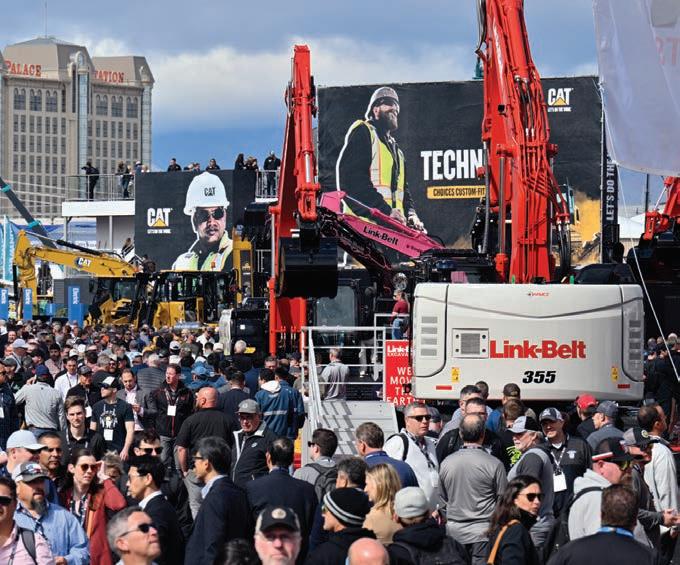





MOBISCREEN MSS 1102 PRO
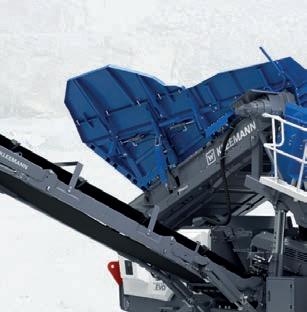





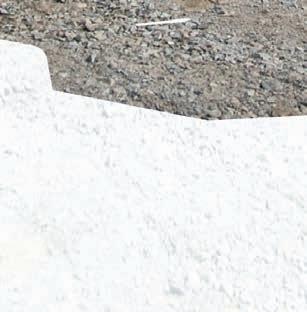



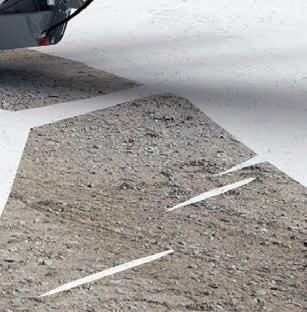
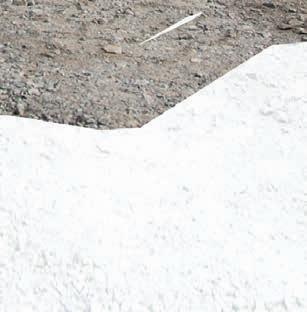




Powerful, rugged, versatile: The MOBISCREEN MSS 1102 PRO stands out with its exceptionally robust design. It was developed mainly for use in natural stone and for high feed capacities of up to 750 t/h. The coarse screening plant excels with its easy operation – including SPECTIVE CONNECT. For greater sustainability, the MSS 1102 PRO can be operated 100% electrically thanks to its optional dual power drive. The MOBISCREEN MSS 1102 PRO – a genuine powerhouse.





www.wirtgen-group.com/mss-1102-pro-kleemann
